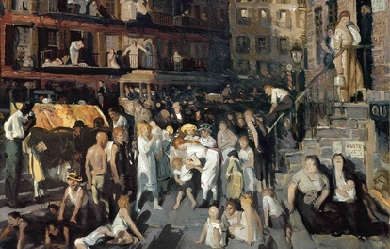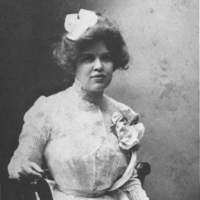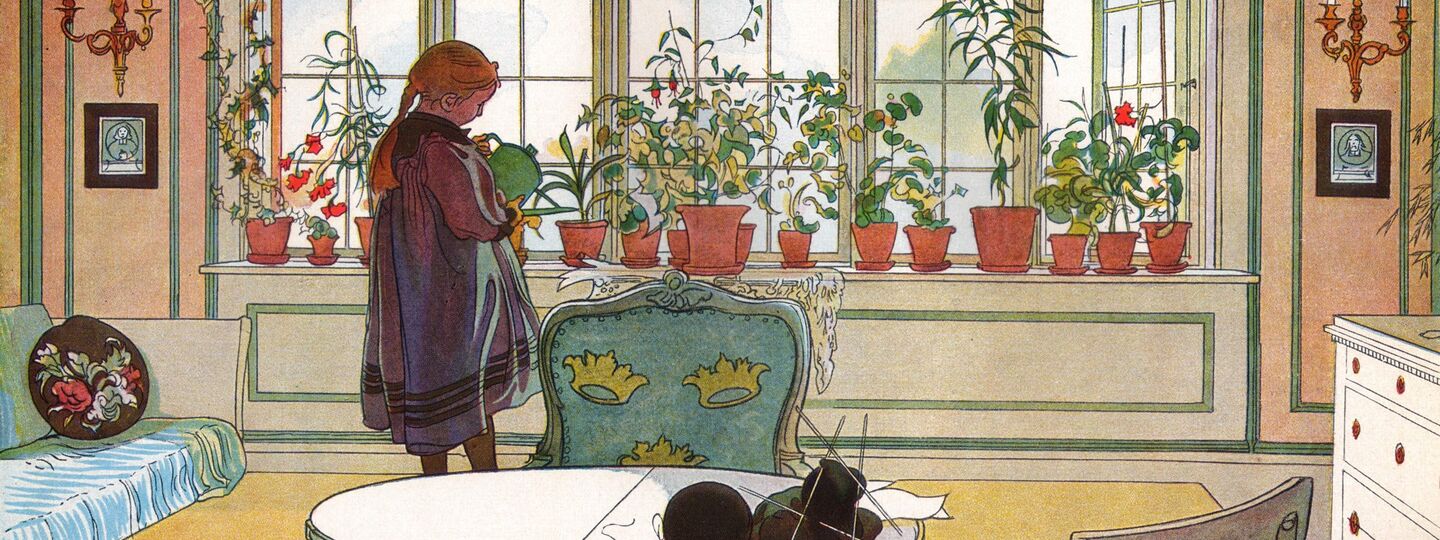
Info
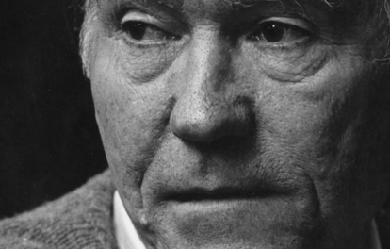
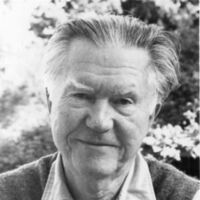
William Edgar Stafford (January 17, 1914 – August 28, 1993) was an American poet and pacifist, and the father of poet and essayist Kim Stafford. He was appointed the twentieth Consultant in Poetry to the Library of Congress in 1970. Early years Stafford was born in Hutchinson, Kansas, the oldest of three children in a highly literate family. During the Depression, his family moved from town to town in an effort to find work for his father. Stafford helped contribute to family income by delivering newspapers, working in sugar beet fields, raising vegetables, and working as an electrician's apprentice. During this time he had a near death experience in a local swimming hole. He graduated from high school in the town of Liberal, Kansas in 1933. After attending junior college, he received a B.A. from the University of Kansas in 1937. He was drafted into the United States armed forces in 1941, while pursuing his master's degree at the University of Kansas, but declared himself a conscientious objector. As a registered pacifist, he performed alternative service from 1942 to 1946 in the Civilian Public Service camps. The work consisted of forestry and soil conservation work in Arkansas, California, and Illinois for $2.50 per month. While working in California in 1944, he met and married Dorothy Hope Frantz with whom he later had four children (Bret, who died in 1988; Kim, writer; Kit, artist; Barbara, artist). He received his M.A. from the University of Kansas in 1947. His master's thesis, the prose memoir Down In My Heart, was published in 1948 and described his experience in the forest service camps. That same year he moved to Oregon to teach at Lewis & Clark College. In 1954, he received a Ph.D. from the University of Iowa. Stafford taught for one academic year (1955–1956) in the English department at Manchester College in Indiana, a college affiliated with the Church of the Brethren where he had received training during his time in Civilian Public Service. The following year (1956–57), he taught at San Jose State in California, and the next year returned to the faculty of Lewis & Clark. Career One striking feature of his career is its late start. Stafford was 46 years old when his first major collection of poetry was published, Traveling Through the Dark, which won the 1963 National Book Award for Poetry. The title poem is one of his best known works. It describes encountering a recently killed doe on a mountain road. Before pushing the doe into a canyon, the narrator discovers that she was pregnant and the fawn inside is still alive. Stafford had a quiet daily ritual of writing and his writing focuses on the ordinary. His gentle quotidian style has been compared to Robert Frost. Paul Merchant writes, "His poems are accessible, sometimes deceptively so, with a conversational manner that is close to everyday speech. Among predecessors whom he most admired are William Wordsworth, Thomas Hardy, Walt Whitman, and Emily Dickinson." His poems are typically short, focusing on the earthy, accessible details appropriate to a specific locality. Stafford said this in a 1971 interview: I keep following this sort of hidden river of my life, you know, whatever the topic or impulse which comes, I follow it along trustingly. And I don't have any sense of its coming to a kind of crescendo, or of its petering out either. It is just going steadily along. Stafford was a close friend and collaborator with poet Robert Bly. Despite his late start, he was a frequent contributor to magazines and anthologies and eventually published fifty-seven volumes of poetry. James Dickey called Stafford one of those poets "who pour out rivers of ink, all on good poems."[6] He kept a daily journal for 50 years, and composed nearly 22,000 poems, of which roughly 3,000 were published. In 1970, he was named Consultant in Poetry to the Library of Congress, a position that is now known as Poet Laureate. In 1975, he was named Poet Laureate of Oregon; his tenure in the position lasted until 1990. In 1980, he retired from Lewis & Clark College but continued to travel extensively and give public readings of his poetry. In 1992, he won the Western States Book Award for lifetime achievement in poetry. Death Stafford died of a heart attack in Lake Oswego, Oregon on August 28, 1993, having written a poem that morning containing the lines, "'You don't have to / prove anything,' my mother said. 'Just be ready / for what God sends.'" In 2008, the Stafford family gave William Stafford's papers, including the 20,000 pages of his daily writing, to the Special Collections Department at Lewis & Clark College. Kim Stafford, who serves as literary executor for the Estate of William Stafford, has written a memoir Early Morning: Remembering My Father, William Stafford (Graywolf Press). References Wikipedia—http://en.wikipedia.org/wiki/William_Stafford_(poet)
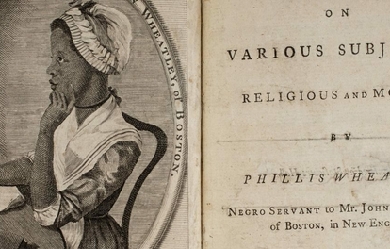
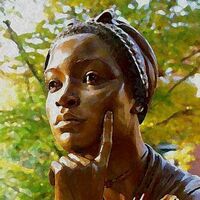
Phillis Wheatley was the first black poet in America to publish a book. She was born around 1753 in West Africa and brought to New England in 1761, where John Wheatley of Boston purchased her as a gift for his wife. Although they brought her into the household as a slave, the Wheatleys took a great interest in Phillis's education. Many biographers have pointed to her precocity; Wheatley learned to read and write English by the age of nine, and she became familiar with Latin, Greek, the Bible, and selected classics at an early age. She began writing poetry at thirteen, modeling her work on the English poets of the time, particularly John Milton, Thomas Gray, and Alexander Pope. Her poem "On the Death of the Rev. Mr. George Whitefield" was published as a broadside in cities such as Boston, New York, and Philadelphia and garnered Wheatley national acclaim. This poem was also printed in London. Over the next few years, she would print a number of broadsides elegizing prominent English and colonial leaders. Wheatley's doctor suggested that a sea voyage might improve her delicate health, so in 1771 she accompanied Nathaniel Wheatley on a trip to London. She was well received in London and wrote to a friend of the "unexpected and unmerited civility and complaisance with which I was treated by all." In 1773, thirty-nine of her poems were published in London as Poems on Various Subjects, Religious and Moral. The book includes many elegies as well as poems on Christian themes; it also includes poems dealing with race, such as the often-anthologized "On Being Brought from Africa to America." She returned to America in 1773. After Mr. and Mrs. Wheatley died, Phillis was left to support herself as a seamstress and poet. It is unclear precisely when Wheatley was freed from slavery, although scholars suggest it occurred between 1774 and 1778. In 1776, Wheatley wrote a letter and poem in support of George Washington; he replied with an invitation to visit him in Cambridge, stating that he would be "happy to see a person so favored by the muses." In 1778, she married John Peters, who kept a grocery store. They had three children together, all of whom died young. Because of the war and the poor economy, Wheatley experienced difficulty publishing her poems. She solicited subscribers for a new volume that would include thirty-three new poems and thirteen letters, but was unable to raise the funds. Phillis Wheatley, who had once been internationally celebrated, died alone in a boarding house in 1784. She was thirty-one years old. Many of the poems for her proposed second volume disappeared and have never been recovered.
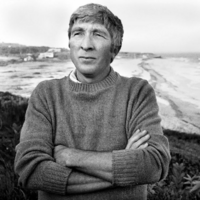
John Updike was a poet, essayist, short-story writer, critic, and novelist John Updike was born in Shillington, Pennsylvania, on March 18, 1932. His father taught high school math, and his mother wrote short stories and novels. Updike received his BA from Harvard University in 1954, the year he began to publish in The New Yorker. Thomas M. Disch wrote in Poetry magazine, "Updike enjoys such pre-eminence as a novelist that his poetry could be mistaken as a hobby or a foible," adding, "It is a poetry of civility—in its epigrammatical lucidity . . . and in its tone of vulgar bonhomie and good appetite." The Los Angeles Times noted that he "has earned an . . . imposing stance on the literary landscape . . . earning virtually every American literary award, repeated bestsellerdom and the near-royal status of the American author-celebrity." Updike is the author of more than fifty books. Among his volumes of poetry are Americana and Other Poems (Alfred A. Knopf, 2001), Collected Poems 1953-1993 (1993), Facing Nature (1985), Tossing and Turning (1977), Seventy Poems (1972), Midpoint and Other Poems (1969), and The Carpentered Hen and Other Tame Creatures (1958). His novels and short-story collections include Toward the End of Time (1997), The Afterlife and Other Stories (1994), Problems and Other Stories (1981), Marry Me (1976), Rabbit Redux (1971), and Couples (1968). Updike received numerous honors and awards including the National Book Award, American Book Award, National Book Critics Circle Award, and a National Arts Club Medal of Honor. He was awarded a Pulitzer Prize in 1982 for Rabbit is Rich and another Pulitzer Prize in 1990 for Rabbit at Rest. John Updike died due to complications of lung cancer on January 27, 2009. Poetry The Carpentered Hen and Other Tame Creatures (Harper and Brothers, 1958) Telephone Poles and Other Poems (Alfred A. Knopf, 1963) Midpoint and Other Poems (1969) Tossing and Turning (1977) Facing Nature (1985) Collected Poems 1953-1993 (1993) Americana: and Other Poems (2001) References Poets.org - www.poets.org/poet.php/prmPID/660
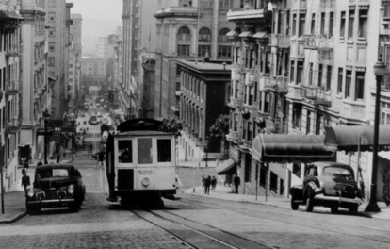
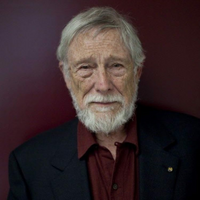
Gary Snyder (born May 8, 1930) is an American man of letters. Perhaps best known as a poet (often associated with the Beat Generation and the San Francisco Renaissance), he is also an essayist, lecturer, and environmental activist. He has been described as the "poet laureate of Deep Ecology". Snyder is a winner of a Pulitzer Prize for Poetry and the American Book Award. His work, in his various roles, reflects an immersion in both Buddhist spirituality and nature. Snyder has translated literature into English from ancient Chinese and modern Japanese. For many years, Snyder served as a faculty member at the University of California, Davis, and he also served for a time on the California Arts Council. Early life Gary Sherman Snyder was born in San Francisco, California to Harold and Lois Hennessy Snyder. Snyder is of German, Scots-Irish, and English ancestry. His family, impoverished by the Great Depression, moved to King County, Washington, when he was two years old. There they tended dairy cows, kept laying hens, had a small orchard, and made cedar-wood shingles, until moving to Portland, Oregon ten years later. At the age of seven, Snyder was laid up for four months by an accident. "So my folks brought me piles of books from the Seattle Public Library," he recalled in interview, "and it was then I really learned to read and from that time on was voracious — I figure that accident changed my life. At the end of four months, I had read more than most kids do by the time they're eighteen. And I didn't stop." Also during his ten childhood years in Washington, Snyder became aware of the presence of the Coast Salish people and developed an interest in the Native American peoples in general and their traditional relationship with nature. In 1942, following his parents' divorce, Snyder moved to Portland, Oregon with his mother and his younger sister, Anthea. Their mother, Lois Snyder Hennessy (born Wilkey), worked during this period as a reporter for The Oregonian. One of Gary's boyhood jobs was as a newspaper copy boy, also at the Oregonian. Also, during his teen years, he attended Lincoln High School, worked as a camp counselor, and went mountain climbing with the Mazamas youth group. Climbing remained an interest of his, especially during his twenties and thirties. In 1947, he started attending Reed College on a scholarship. Here he met, and for a time, roomed with the education author Carl Proujan and Philip Whalen and Lew Welch. At Reed, Snyder published his first poems in a student journal. He also spent the summer of 1948 working as a seaman. He joined the now defunct Marine Cooks and Stewards union to get this job, and would later work as a seaman in the mid-1950s to gain experience of other cultures in port cities. Snyder married Alison Gass in 1950; they separated after seven months, and divorced in 1952. While attending Reed, Snyder did folklore research on the Warm Springs Indian Reservation in central Oregon. He graduated with a dual degree in anthropology and literature in 1951. He spent the following few summers working as a timber scaler at Warm Springs, developing relationships with its people that were less rooted in academia. This experience formed the basis for some of his earliest published poems (including "A Berry Feast"), later collected in the book The Back Country. He also encountered the basic ideas of Buddhism and, through its arts, some of the Far East's traditional attitudes toward nature. He went to Indiana University with a graduate fellowship to study anthropology. (Snyder also began practicing self-taught Zen meditation.) He left after a single semester to return to San Francisco and to 'sink or swim as a poet'. Snyder worked for two summers in the North Cascades in Washington as a fire lookout, on Crater Mountain in 1952 and Sourdough Mountain in 1953 (both locations on the upper Skagit River). His attempts to get another lookout stint in 1954 (at the peak of McCarthyism), however, failed. He had been barred from working for the government, due to his association with the Marine Cooks and Stewards. Instead, he went back to Warm Springs to work in logging as a chokersetter (fastening cables to logs). This experience contributed to his Myths and Texts and the essay Ancient Forests of the Far West. The Beats Back in San Francisco, Snyder lived with Whalen, who shared his growing interest in Zen. Snyder's reading of the writings of D.T. Suzuki had in fact been a factor in his decision not to continue as a graduate-student in anthropology, and in 1953 he enrolled at the University of California, Berkeley to study Asian culture and languages. He studied ink and wash painting under Chiura Obata and Tang Dynasty poetry under Ch'en Shih-hsiang. Snyder continued to spend summers working in the forests, including one summer as a trail-builder in Yosemite. He spent some months in 1955 and 1956 living in a cabin (which he dubbed "Marin-an") outside Mill Valley, California with Jack Kerouac. It was also at this time that Snyder was an occasional student at the American Academy of Asian Studies, where Saburō Hasegawa and Alan Watts, among others, were teaching. Hasegawa introduced Snyder to the treatment of landscape painting as a meditative practice. This inspired Snyder to attempt something equivalent in poetry, and with Hasegawa's encouragement, he began work on Mountains and Rivers without End, which would be completed and published forty years later. During these years, Snyder was writing and collecting his own work, as well as embarking on the translation of the "Cold Mountain" poems by the 8th-century Chinese recluse Han Shan; this work appeared in chapbook-form in 1969, under the title Riprap & Cold Mountain Poems. Snyder met Allen Ginsberg when the latter sought Snyder out on the recommendation of Kenneth Rexroth. Then, through Ginsberg, Snyder and Kerouac came to know each other. This period provided the materials for Kerouac's novel The Dharma Bums, and Snyder was the inspiration for the novel's main character, Japhy Ryder, in the same way Neal Cassady had inspired Dean Moriarty in On the Road. As the large majority of people in the Beat movement had urban backgrounds, writers like Ginsberg and Kerouac found Snyder, with his backcountry and manual-labor experience and interest in things rural, a refreshing and almost exotic individual. Lawrence Ferlinghetti later referred to Snyder as 'the Thoreau of the Beat Generation'. Snyder read his poem "A Berry Feast" at the poetry reading at the Six Gallery in San Francisco (October 7, 1955) that heralded what was to become known as the San Francisco Renaissance. This also marked Snyder's first involvement with the Beats, although he was not a member of the original New York circle, but rather entered the scene through his association with Kenneth Rexroth. As recounted in Kerouac's Dharma Bums, even at age 25 Snyder felt he could have a role in the fateful future meeting of West and East. Snyder's first book, Riprap, which drew on his experiences as a forest lookout and on the trail-crew in Yosemite, was published in 1959. Japan and India Independently, some of the Beats, including Philip Whalen, had become interested in Zen, but Snyder was one of the more serious scholars of the subject among them, preparing in every way he could think of for eventual study in Japan. In 1955, the First Zen Institute of America offered him a scholarship for a year of Zen training in Japan, but the State Department refused to issue him a passport, informing him that "it has been alleged you are a Communist." A subsequent District of Columbia Court of Appeals ruling forced a change in policy, and Snyder got his passport. In the end, his expenses were paid by Ruth Fuller Sasaki, for whom he was supposed to work; but initially he served as personal attendant and English tutor to Zen abbot Miura Isshu, at Rinko-in, a temple in Shokoku-ji in Kyoto, where Dwight Goddard and R. H. Blyth had preceded him. Mornings, after zazen, sutra chanting, and chores for Miura, he took Japanese classes, bringing his spoken Japanese up to a level sufficient for kōan study. He developed a friendship with Philip Yampolsky, who took him around Kyoto. In early July 1955, he took refuge and requested to become Miura's disciple, thus formally becoming a Buddhist. He returned to California via the Persian Gulf, Turkey, Sri Lanka and various Pacific Islands, in 1958, voyaging as a crewman in the engine room on the oil freighter Sappa Creek, and took up residence at Marin-an again. He turned one room into a zendo, with about six regular participants. In early June, he met the poet Joanne Kyger. She became his girlfriend, and eventually his wife. In 1959, he shipped for Japan again, where he rented a cottage outside Kyoto. He became the first foreign disciple of Oda Sesso Roshi, the new abbot of Daitoku-ji. He married Kyger on February 28, 1960, immediately after her arrival, which Sasaki insisted they do, if they were to live together and be associated with the First Zen Institute of America. Snyder and Joanne Kyger were married from 1960 to 1965. During the period between 1956 and 1969, Snyder went back and forth between California and Japan, studying Zen, working on translations with Ruth Fuller Sasaki, and finally living for a while with a group of other people on the small, volcanic island of Suwanosejima. His previous study of written Chinese assisted his immersion in the Zen tradition (with its roots in Tang Dynasty China) and enabled him to take on certain professional projects while he was living in Japan. Snyder received the Zen precepts and a dharma name (Chofu, "Listen to the Wind"), and lived sometimes as a de facto monk, but never registered to become a priest and planned eventually to return to the United States to 'turn the wheel of the dharma'. During this time, he published a collection of his poems from the early to mid '50s, Myths & Texts (1960), and Six Sections from Mountains and Rivers Without End (1965). This last was the beginning of a project that he was to continue working on until the late 1990s. Much of Snyder's poetry expresses experiences, environments, and insights involved with the work he has done for a living: logger, fire-lookout, steam-freighter crew, translator, carpenter, and itinerant poet, among other things. During his years in Japan, Snyder was also initiated into Shugendo, a form of ancient Japanese animism, (see also Yamabushi). In the early 1960s he traveled for six months through India with his wife Joanne, Allen Ginsberg, and Peter Orlovsky. Snyder and Joanne Kyger separated soon after a trip to India, and divorced in 1965. Dharma Bums In the 1950s, Snyder took part in the rise of a strand of Buddhist anarchism emerging from the Beat movement. Snyder was the inspiration for the character Japhy Rider in Jack Kerouac's novel The Dharma Bums (1958). Snyder had spent considerable time in Japan studying Zen Buddhism, and in 1961 published an essay, Buddhist Anarchism, where he described the connection he saw between these two traditions, originating in different parts of the world: "The mercy of the West has been social revolution; the mercy of the East has been individual insight into the basic self/void." He advocated "using such means as civil disobedience, outspoken criticism, protest, pacifism, voluntary poverty and even gentle violence" and defended "the right of individuals to smoke ganja, eat peyote, be polygymous, polyandrous or homosexual" which he saw as being banned by "the Judaeo-Capitalist-Christian-Marxist West". Kitkitdizze In 1966, Snyder joined Allen Ginsberg, Zentatsu Richard Baker, Roshi of the San Francisco Zen Center, and Donald Walters, a.k.a. "Swami Kriyananda," to buy 100 acres (0.40 km2) in the Sierra foothills, north of Nevada City, California. In 1970, this would become his home, with the Snyder family's portion being named Kitkitdizze. Snyder spent the summers of 1967 and 1968 with a group of Japanese back-to-the-land drop-outs known as "the Tribe" on Suwanosejima (a small Japanese island in the East China Sea), where they combed the beaches, gathered edible plants, and fished. On the island, on August 6, 1967, he married Masa Uehara, whom he had met in Osaka a year earlier. In 1968, they moved to California with their infant son, Kai (born April 1968). Their second son, Gen, was born a year later. In 1971, they moved to the San Juan Ridge in the foothills of the Sierra Nevada of Northern California, near the South Yuba River, where they and friends built a house that drew on rural-Japanese and Native-American architectural ideas. In 1967 his book The Back Country appeared, again mainly a collection of poems stretching back over about fifteen years. Snyder devoted a section at the end of the book to his translations of eighteen poems by Kenji Miyazawa. Later life and writings Regarding Wave appeared in 1969, a stylistic departure offering poems that were more emotional, metaphoric, and lyrical. From the late 1960s, the content of Snyder's poetry increasingly had to do with family, friends, and community. He continued to publish poetry throughout the 1970s, much of it reflecting his re-immersion in life on the American continent and his involvement in the back-to-the-land movement in the Sierra foothills. His 1974 book Turtle Island, titled after a Native American name for the North American continent, won a Pulitzer Prize. It also influenced numerous West Coast Generation X writers, including Alex Steffen, Bruce Barcott and Mark Morford. His 1983 book Axe Handles, won an American Book Award. Snyder wrote numerous essays setting forth his views on poetry, culture, social experimentation, and the environment. Many of these were collected in Earth House Hold (1969), The Old Ways (1977), The Real Work (1980), The Practice of the Wild (1990), A Place in Space (1995), and The Gary Snyder Reader (1999). In 1979, Snyder published He Who Hunted Birds in His Father's Village: The Dimensions of a Haida Myth, based on his Reed thesis. Snyder's journals from his travel in India in the mid-1960s appeared in 1983 under the title Passage Through India. In these, his wide-ranging interests in cultures, natural history, religions, social critique, contemporary America, and hands-on aspects of rural life, as well as his ideas on literature, were given full-blown articulation. In 1986, Snyder became a professor in the writing-program at the University of California, Davis. Snyder is now professor emeritus of English. Snyder was married to Uehara for twenty-two years; the couple divorced in 1989. Snyder married Carole Lynn Koda (October 3, 1947 – June 29, 2006), who would write Homegrown: Thirteen brothers and sisters, a century in America, in 1991, and remained married to her until her death of cancer. She had been born in the third generation of a successful Japanese-American farming family, noted for its excellent rice. She shared Buddhism, extensive travels, and work with Snyder, and performed independent work as a naturalist. As Snyder's involvement in environmental issues and his teaching grew, he seemed to move away from poetry for much of the 1980s and early 1990s. However, in 1996 he published the complete Mountains and Rivers Without End, a mixture of the lyrical and epic modes celebrating the act of inhabitation on a specific place on the planet. This work was written over a 40-year period. It has been translated into Japanese and French. In 2004 Snyder published Danger on Peaks, his first collection of new poems in twenty years. Snyder was awarded the Levinson Prize from the journal Poetry, the American Poetry Society Shelley Memorial Award (1986), was inducted into the American Academy of Arts and Letters (1987), and won the 1997 Bollingen Prize for Poetry and, that same year, the John Hay Award for Nature Writing. Snyder also has the distinction of being the first American to receive the Buddhism Transmission Award (for 1998) from the Japan-based Bukkyo Dendo Kyokai Foundation. For his ecological and social activism, Snyder was named as one of the 100 visionaries selected in 1995 by Utne Reader. Snyder's life and work was celebrated in John J. Healy's 2010 documentary The Practice of the Wild. The film, which debuted at the 53rd San Francisco International Film Festival, features wide-ranging, running conversations between Snyder and poet, writer and longtime colleague Jim Harrison, filmed mostly on the Hearst Ranch in San Simeon, California. The film also shows archival photographs and film of Snyder's life. Poetic work Gary Snyder uses mainly common speech-patterns as the basis for his lines, though his style has been noted for its "flexibility" and the variety of different forms his poems have taken. He does not typically use conventional meters nor intentional rhyme. "Love and respect for the primitive tribe, honour accorded the Earth, the escape from city and industry into both the past and the possible, contemplation, the communal", such, according to Glyn Maxwell, is the awareness and commitment behind the specific poems. The author and editor Stewart Brand once wrote: "Gary Snyder's poetry addresses the life-planet identification with unusual simplicity of style and complexity of effect." According to Jody Norton, this simplicity and complexity derives from Snyder's use of natural imagery (geographical formations, flora, and fauna)in his poems. Such imagery can be both sensual at a personal level yet universal and generic in nature. In the 1968 poem "Beneath My Hand and Eye the Distant Hills, Your Body," the author compares the intimate experience of a lover's caress with the mountains, hills, cinder cones, and craters of the Uintah Mountains. Readers become explorers on both a very private level as well as a very public and grand level. A simplistic touch becoming a very complex interaction occurring at multiple levels. This is the effect Snyder intended. In an interview with Faas, he states." There is a direction which is very beautiful, and that's the direction of the organism being less and less locked into itself, less and less locked into its own body structure and its relatively inadequate sense organs, towards a state where the organism can actually go out from itself and share itself with others." Snyder has always maintained that his personal sensibility arose from his interest in Native Americans and their involvement with nature and knowledge of it; indeed, their ways seemed to resonate with his own. And he has sought something akin to this through Buddhist practices, Yamabushi initiation, and other experiences and involvements. However, since his youth he has been quite literate, and he has written about his appreciation of writers of similar sensibilities, like D. H. Lawrence, William Butler Yeats, and some of the great ancient Chinese poets. William Carlos Williams was another influence, especially on Snyder's earliest published work. Starting in high school, Snyder read and loved the work of Robinson Jeffers, his predecessor in poetry of the landscape of the American West; but, whereas Jeffers valued nature over humankind, Snyder saw humankind as part of nature. Snyder commented in interview "I have some concerns that I'm continually investigating that tie together biology, mysticism, prehistory, general systems theory". Snyder argues that poets, and humans in general, need to adjust to very long timescales, especially when judging the consequences of their actions. His poetry examines the gap between nature and culture so as to point to ways in which the two can be more closely integrated. In 2004, receiving the Masaoka Shiki International Haiku Awards Grand Prize, Snyder highlighted traditional ballads and folk songs, Native American songs and poems, William Blake, Walt Whitman, Jeffers, Ezra Pound, Noh drama, Zen aphorisms, Federico García Lorca, and Robert Duncan as significant influences on his poetry, but added, "the influence from haiku and from the Chinese is, I think, the deepest." Romanticism Snyder is among those writers who have sought to dis-entrench conventional thinking about primitive peoples that has viewed them as simple-minded, ignorantly superstitious, brutish, and prone to violent emotionalism. In the 1960s Snyder developed a "neo-tribalist" view akin to the "post-modernist" theory of French Sociologist Michel Maffesoli. The "re-tribalization" of the modern, mass-society world envisioned by Marshall McLuhan, with all of the ominous, dystopian possibilities that McLuhan warned of, subsequently accepted by many modern intellectuals, is not the future that Snyder expects or works toward. Snyder's is a positive interpretation of the tribe and of the possible future. Todd Ensign describes Snyder's interpretation as blending ancient tribal beliefs and traditions, philosophy, physicality, and nature with politics to create his own form of Postmodern-environmentalism. Snyder rejects the perspective which portrays nature and humanity in direct opposition to one another. Instead, he chooses to write from multiple viewpoints. He purposely sets out to bring about change on the emotional, physical, and political levels by emphasizing the ecological problems faced by today's society. Beat Gary Snyder is widely regarded as a member of the Beat Generation circle of writers: he was one of the poets that read at the famous Six Gallery event, and was written about in one of Kerouac's most popular novels, The Dharma Bums. Some critics argue that Snyder's connection with the Beats is exaggerated and that he might better be regarded as a member of the West-Coast group the San Francisco Renaissance, which developed independently. Snyder himself has some reservations about the label "Beat", but does not appear to have any strong objection to being included in the group. He often talks about the Beats in the first person plural, referring to the group as "we" and "us". A quotation from a 1974 interview at the University of North Dakota Writers Conference (published in The Beat Vision): I never did know exactly what was meant by the term 'The Beats', but let's say that the original meeting, association, comradeship of Allen [Ginsberg], myself, Michael [McClure], Lawrence [Ferlinghetti], Philip Whalen, who's not here, Lew Welch, who's dead, Gregory [Corso], for me, to a somewhat lesser extent (I never knew Gregory as well as the others) did embody a criticism and a vision which we shared in various ways, and then went our own ways for many years. Where we began to come really close together again, in the late '60s, and gradually working toward this point, it seems to me, was when Allen began to take a deep interest in Oriental thought and then in Buddhism which added another dimension to our levels of agreement; and later through Allen's influence, Lawrence began to draw toward that; and from another angle, Michael and I after the lapse of some years of contact, found our heads very much in the same place, and it's very curious and interesting now; and Lawrence went off in a very political direction for a while, which none of us had any objection with, except that wasn't my main focus. It's very interesting that we find ourselves so much on the same ground again, after having explored divergent paths; and find ourselves united on this position of powerful environmental concern, critique of the future of the individual state, and an essentially shared poetics, and only half-stated but in the background very powerfully there, a basic agreement on some Buddhist type psychological views of human nature and human possibilities. Snyder has also commented "The term Beat is better used for a smaller group of writers ... the immediate group around Allen Ginsberg and Jack Kerouac, plus Gregory Corso and a few others. Many of us ... belong together in the category of the San Francisco Renaissance. ... Still, beat can also be defined as a particular state of mind ... and I was in that mind for a while". Bibliography * Myths & Texts (1960) * Six Sections from Mountains and Rivers Without End (1965) * The Back Country (1967) * Riprap and Cold Mountain Poems (1969) * Regarding Wave (1969) * Earth House Hold (1969) * Turtle Island (1974) * The Old Ways (1977) * He Who Hunted Birds in His Father's Village: The Dimensions of a Haida Myth (1979) * The Real Work: Interviews & Talks 1964-1979 (1980) * Axe Handles (1983) * Passage Through India (1983) * Left Out in the Rain (1988) * The Practice of the Wild (1990) * No Nature: New and Selected Poems (1992) * A Place in Space (1995) * narrator of the audio book version of Kazuaki Tanahashi's Moon in a Dewdrop from Dōgen's Shōbōgenzō * Mountains and Rivers Without End (1996) * The Gary Snyder Reader: Prose, Poetry, and Translations (1999) * The High Sierra of California, with Tom Killion (2002) * Look Out: a Selection of Writings (November 2002) * Danger on Peaks (2005) * Back on the Fire: Essays (2007) * The Selected Letters of Allen Ginsberg and Gary Snyder, 1956-1991"(2009) * Tamalpais Walking, with Tom Killion (2009) * The Etiquette of Freedom, with Jim Harrison (2010) film by Will Hearst with book edited by Paul Ebenkamp * Nobody Home: Writing, Buddhism, and Living in Places, with Julia Martin, Trinity University Press (2014). * This Present Moment (April 2015) * Distant Neighbors: The Selected Letters of Wendell Berry and Gary Snyder (May 2015) * The Great Clod: Notes and Memories on the Natural History of China and Japan (March 2016) References Wikipedia—https://en.wikipedia.org/wiki/Gary_Snyder
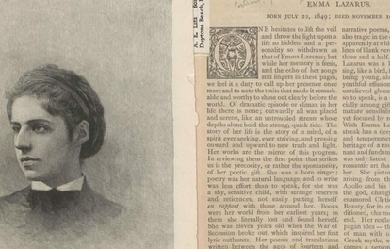
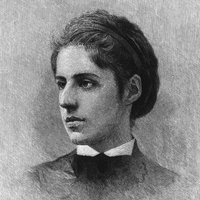
Emma Lazarus (July 22, 1849– November 19, 1887) was an American poet born in New York City. She is best known for “The New Colossus”, a sonnet written in 1883; its lines appear inscribed on a bronze plaque in the pedestal of the Statue of Liberty installed in 1903, a decade and a half after Lazarus’s death. Lazarus was born into a large Sephardic-Ashkenazi Jewish family, the fourth of seven children of Moses Lazarus and Esther Nathan, The Lazarus family was from Germany, and the Nathan family was originally from Portugal and resident in New York long before the American Revolution.
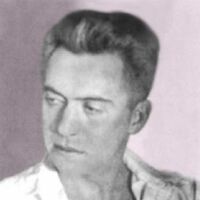
Born on July 21, 1899, in Garrettsville, Ohio, Harold Hart Crane was a highly anxious and volatile child. He began writing verse in his early teenage years, and though he never attended college, read regularly on his own, digesting the works of the Elizabethan dramatists and poets—Shakespeare, Marlowe, and Donne—and the nineteenth-century French poets—Vildrac, Laforgue, and Rimbaud. His father, a candy manufacturer, attempted to dissuade him from a career in poetry, but Crane was determined to follow his passion to write. Living in New York City, he associated with many important figures in literature of the time, including Allen Tate, Katherine Anne Porter, E. E. Cummings, and Jean Toomer, but his heavy drinking and chronic instability frustrated any attempts at lasting friendship. An admirer of T. S. Eliot, Crane combined the influences of European literature and traditional versification with a particularly American sensibility derived from Walt Whitman. His major work, the book-length poem, The Bridge, expresses in ecstatic terms a vision of the historical and spiritual significance of America. Like Eliot, Crane used the landscape of the modern, industrialized city to create a powerful new symbolic literature. Hart Crane committed suicide in 1932, at the age of thirty-three, by jumping from the deck of a steamship sailing back to New York from Mexico. A SELECTED BIBLIOGRAPHY Poetry The Complete Poems and Selected Letters and Prose (1966) The Bridge (1930) White Buildings (1926) Prose Letters (1952) References Poets.org – http://www.poets.org/poet.php/prmPID/233
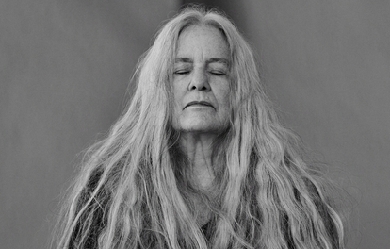
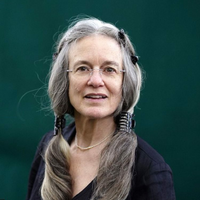
Sharon Olds, born November 19, 1942 in San Francisco, California, is an American poet recipient of many awards including the 2013 Pulitzer Prize in Poetry, the 1984 National Book Critics Circle Award, and the first San Francisco Poetry Center Award in 1980. She currently teaches creative writing at New York University.
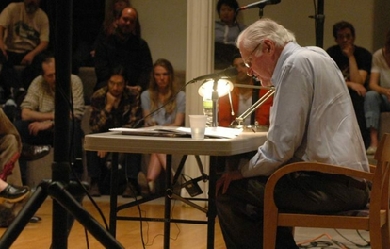
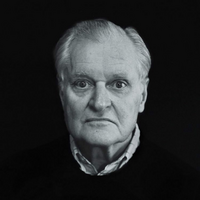
John Lawrence Ashbery (born July 28, 1927) is an American poet. He has published more than twenty volumes of poetry and won nearly every major American award for poetry, including a Pulitzer Prize in 1976 for his collection Self-Portrait in a Convex Mirror. Renowned for its postmodern complexity and opacity, Ashbery's work still proves controversial. Ashbery has stated that he wishes his work to be accessible to as many people as possible, and not to be a private dialogue with himself. At the same time, he once joked that some critics still view him as "a harebrained, homegrown surrealist whose poetry defies even the rules and logic of Surrealism." Langdon Hammer, chairman of the English Department at Yale University, wrote in 2008, "No figure looms so large in American poetry over the past 50 years as John Ashbery" and "No American poet has had a larger, more diverse vocabulary, not Whitman, not Pound." Stephen Burt, a poet and Harvard professor of English, has compared Ashbery to T. S. Eliot, calling Ashbery "the last figure whom half the English-language poets alive thought a great model, and the other half thought incomprehensible". Life Ashbery was born in Rochester, New York, the son of Helen (née Lawrence), a biology teacher, and Chester Frederick Ashbery, a farmer. He was raised on a farm near Lake Ontario; his brother died when they were children. Ashbery was educated at Deerfield Academy, an all-boys school, where he read such poets as W. H. Auden and Dylan Thomas and began writing poetry. Two of his poems were published in Poetry magazine under the name of a classmate who had submitted them without Ashbery's knowledge or permission. Ashbery also published a handful of poems, including a sonnet about his frustrated love for a fellow student, and a piece of short fiction in the school newspaper, the Deerfield Scroll. His first ambition was to be a painter. From the age of 11 until he was 15 Ashbery took weekly classes at the art museum in Rochester. Ashbery at a 2007 tribute to W.H. Auden at Cooper Union in New York City. Ashbery graduated in 1949 with an A.B., cum laude, from Harvard College, where he was a member of the Harvard Advocate, the university's literary magazine, and the Signet Society. He wrote his senior thesis on the poetry of W. H. Auden. At Harvard he befriended fellow writers Kenneth Koch, Barbara Epstein, V. R. Lang, Frank O'Hara and Edward Gorey, and was a classmate of Robert Creeley, Robert Bly and Peter Davison. Ashbery went on to study briefly at New York University, and received an M.A. from Columbia in 1951. After working as a copywriter in New York from 1951 to 1955, from the mid-1950s, when he received a Fulbright Fellowship, through 1965, Ashbery lived in France. He was an editor of the 12 issues of Art and Literature (1964–67) and the New Poetry issue of Harry Mathews' Locus Solus (# 3/4; 1962). To make ends meet he translated French murder mysteries, served as the art editor for the European edition of the New York Herald Tribune and was an art critic for Art International (1960–65) and a Paris correspondent for Art News (1963–66), when Thomas Hess took over as editor. During this period he lived with the French poet Pierre Martory, whose books Every Question but One (1990), The Landscape is behind the Door (1994) and The Landscapist he has translated (2008), as he has Arthur Rimbaud (Illuminations), Max Jacob (The Dice Cup), Pierre Reverdy (Haunted House), and many titles by Raymond Roussel. After returning to the United States, he continued his career as an art critic for New York and Newsweek magazines while also serving on the editorial board of ARTNews until 1972. Several years later, he began a stint as an editor at Partisan Review, serving from 1976 to 1980. During the fall of 1963, Ashbery became acquainted with Andy Warhol at a scheduled poetry reading at the Literary Theatre in New York. He had previously written favorable reviews of Warhol's art. That same year he reviewed Warhol's Flowers exhibition at Galerie Illeana Sonnabend in Paris, describing Warhol's visit to Paris as "the biggest transatlantic fuss since Oscar Wilde brought culture to Buffalo in the nineties". Ashbery returned to New York near the end of 1965 and was welcomed with a large party at the Factory. He became close friends with poet Gerard Malanga, Warhol's assistant, on whom he had an important influence as a poet. In 1967 his poem Europe was used as the central text in Eric Salzman's Foxes and Hedgehogs as part of the New Image of Sound series at Hunter College, conducted by Dennis Russell Davies. When the poet sent Salzman Three Madrigals in 1968, the composer featured them in the seminal Nude Paper Sermon, released by Nonesuch Records in 1989. In the early 1970s, Ashbery began teaching at Brooklyn College, where his students included poet John Yau. He was elected a Fellow of the American Academy of Arts and Sciences in 1983. In the 1980s, he moved to Bard College, where he was the Charles P. Stevenson, Jr., Professor of Languages and Literature, until 2008, when he retired; since that time, he has continued to win awards, present readings, and work with graduate and undergraduates at many other institutions. He was the poet laureate of New York State from 2001 to 2003, and also served for many years as a chancellor of the Academy of American Poets. He serves on the contributing editorial board of the literary journal Conjunctions. He was a Millet Writing Fellow at Wesleyan University, in 2010, and participated in Wesleyan's Distinguished Writers Series. Ashbery lives in New York City and Hudson, New York, with his partner, David Kermani. Work Ashbery's long list of awards began with the Yale Younger Poets Prize in 1956. The selection, by W. H. Auden, of Ashbery's first collection, Some Trees, later caused some controversy. His early work shows the influence of Auden, along with Wallace Stevens, Boris Pasternak, and many of the French surrealists (his translations from French literature are numerous). In the late 1950s, John Bernard Myers, co-owner of the Tibor de Nagy Gallery, categorized the common traits of Ashbery's avant-garde poetry, as well as that of Kenneth Koch, Frank O'Hara, James Schuyler, Barbara Guest, Kenward Elmslie and others, as constituting a "New York School". Ashbery published some work in the avant-garde little magazine Nomad at the beginning of the 1960s. He then wrote two collections while in France, the highly controversial The Tennis Court Oath (1962) and Rivers and Mountains (1966), before returning to New York to write The Double Dream of Spring, published in 1970. Increasing critical recognition in the 1970s transformed Ashbery from an obscure avant-garde experimentalist into one of America's most important poets (though still one of its most controversial). After the publication of Three Poems (1973) came Self-portrait in a Convex Mirror, for which he was awarded the three major American poetry awards: the Pulitzer Prize, the National Book Award and the National Book Critics Circle Award). The collection's title poem is considered to be one of the masterpieces of late-20th-century American poetic literature. His subsequent collection, the more difficult Houseboat Days (1977), reinforced Ashbery's reputation, as did 1979's As We Know, which contains the long, double-columned poem "Litany". By the 1980s and 1990s, Ashbery had become a central figure in American and more broadly English-language poetry, as his number of imitators attested. Ashbery's works are characterized by a free-flowing, often disjunctive syntax; extensive linguistic play, often infused with considerable humor; and a prosaic, sometimes disarmingly flat or parodic tone. The play of the human mind is the subject of a great many of his poems. Ashbery once said that his goal was "to produce a poem that the critic cannot even talk about". Formally, the earliest poems show the influence of conventional poetic practice, yet by The Tennis Court Oath a much more revolutionary engagement with form appears. Ashbery returned to something approaching a reconciliation between tradition and innovation with many of the poems in The Double Dream of Spring, though his Three Poems are written in long blocks of prose. Although he has never again approached the radical experimentation of The Tennis Court Oath poems or "The Skaters" and "Into the Dusk-Charged Air" from his collection Rivers and Mountains, syntactic and semantic experimentation, linguistic expressiveness, deft, often abrupt shifts of register, and insistent wit remain consistent elements of his work. Ashbery's art criticism has been collected in the 1989 volume Reported Sightings, Art Chronicles 1957-1987, edited by the poet David Bergman. He has written one novel, A Nest of Ninnies, with fellow poet James Schuyler, and in his 20s and 30s penned several plays, three of which have been collected in Three Plays (1978). Ashbery's Charles Eliot Norton Lectures at Harvard University were published as Other Traditions in 2000. A larger collection of his prose writings, Selected Prose, appeared in 2005. In 2008, his Collected Poems 1956–1987 was published as part of the Library of America series. Poetry Collections * Turandot and other poems (1953) * Some Trees (1956), winner of the Yale Younger Poets Prize * The Tennis Court Oath (1962) * Rivers and Mountains (1966) * The Double Dream of Spring (1970) * Three Poems (1972) * The Vermont Notebook (1975), illustrated prose poems * Self-portrait in a Convex Mirror (1975), awarded the Pulitzer Prize, the National Book Award and the National Book Critics Circle Award Houseboat Days (1977) * As We Know (1979) * Shadow Train (1981) * A Wave (1984), awarded the Lenore Marshall Poetry Prize and the Bollingen Prize * April Galleons (1987) * Flow Chart (1991), book-length poem * Hotel Lautréamont (1992) * And the Stars Were Shining (1994) * Can You Hear, Bird? (1995) * Wakefulness (1998) * Girls on the Run (1999), a book-length poem inspired by the work of Henry Darger * Your Name Here (2000) * As Umbrellas Follow Rain (2001) * Chinese Whispers (2002) * Where Shall I Wander (2005) (finalist for the National Book Award) * Notes from the Air: Selected Later Poems (2007) (winner of the 2008 International Griffin Poetry Prize) * A Worldly Country (2007) * Planisphere (2009) * Collected Poems 1956-87 (Carcanet Press) (2010), ed. Mark Ford Quick Question (2012) * Breezeway (2015) * No i wiesz (1993) (translated into Polish by Bohdan Zadura, Andrzej Sosnowski and Piotr Sommer) References Wikipedia—https://en.wikipedia.org/wiki/John_Ashbery
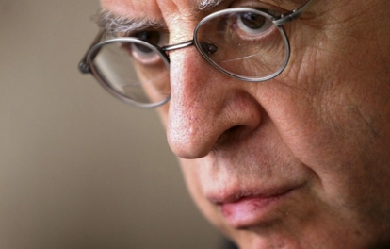
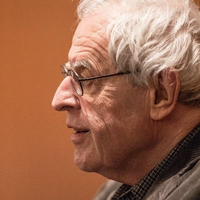
Charles Simic (born Dušan Simić; May 9, 1938) is a Serbian-American poet and was co-poetry editor of the Paris Review. He received the Pulitzer Prize for Poetry in 1990 for The World Doesn’t End, and was a finalist of the Pulitzer Prize in 1986 for Selected Poems, 1963-1983 and in 1987 for Unending Blues. He was appointed the fifteenth Poet Laureate Consultant in Poetry to the Library of Congress in 2007. Biography Early years Dušan Simić was born in Belgrade. In his early childhood, during World War II, he and his family were forced to evacuate their home several times to escape indiscriminate bombing of Belgrade. Growing up as a child in war-torn Europe shaped much of his world-view, Simic states. In an interview from the Cortland Review he said, “Being one of the millions of displaced persons made an impression on me. In addition to my own little story of bad luck, I heard plenty of others. I’m still amazed by all the vileness and stupidity I witnessed in my life.” Simic immigrated to the United States with his brother and mother in order to join his father in 1954 when he was sixteen. He grew up in Chicago. In 1961 he was drafted into the U.S. Army, and in 1966 he earned his B.A. from New York University while working at night to cover the costs of tuition. He is professor emeritus of American literature and creative writing at the University of New Hampshire, where he has taught since 1973 and lives on the shore of Bow Lake in Strafford, New Hampshire. Career He began to make a name for himself in the early to mid-1970s as a literary minimalist, writing terse, imagistic poems. Critics have referred to Simic’s poems as “tightly constructed Chinese puzzle boxes”. He himself stated: “Words make love on the page like flies in the summer heat and the poet is merely the bemused spectator.” Simic writes on such diverse topics as jazz, art, and philosophy. He is a translator, essayist and philosopher, opining on the current state of contemporary American poetry. He held the position of poetry editor of The Paris Review and was replaced by Dan Chiasson. He was elected to The American Academy of Arts and Letters in 1995, received the Academy Fellowship in 1998, and was elected a Chancellor of the Academy of American Poets in 2000. Simic was one of the judges for the 2007 Griffin Poetry Prize and continues to contribute poetry and prose to The New York Review of Books. Simic received the US$100,000 Wallace Stevens Award in 2007 from the Academy of American Poets. He was selected by James Billington, Librarian of Congress, to be the fifteenth Poet Laureate Consultant in Poetry to the Library of Congress, succeeding Donald Hall. In choosing Simic as the poet laureate, Billington cited “the rather stunning and original quality of his poetry”. In 2011, he was the recipient of the Frost Medal, presented annually for “lifetime achievement in poetry.” Awards * PEN Translation Prize (1980) * Ingram Merrill Foundation Fellowship (1983) * MacArthur Fellowship (1984–1989) * Pulitzer Prize finalist (1986) * Pulitzer Prize finalist (1987) * Pulitzer Prize for Poetry (1990) * Wallace Stevens Award (2007) * Frost Medal (2011) * Vilcek Prize in Literature (2011) * The Zbigniew Herbert International Literary Award (2014) * Golden Wreath of the Struga Poetry Evenings (2017) Bibliography References Wikipedia—https://en.wikipedia.org/wiki/Charles_Simic
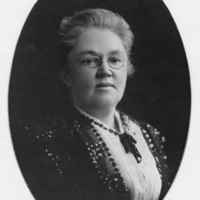
Katharine Lee Bates (August 12, 1859– March 28, 1929) was an American songwriter. She is remembered as the author of the words to the anthem “America the Beautiful”. She popularized “Mrs. Santa Claus” through her poem Goody Santa Claus on a Sleigh Ride (1889). Life and career Bates was born in Falmouth, Massachusetts, the daughter of Congregational pastor William Bates and his wife, Cornelia Frances Lee. She graduated from Wellesley High School in 1874 and from Wellesley College with a B.A. in 1880. She taught at Natick High School during 1880–81 and at Dana Hall School from 1885 until 1889. She returned to Wellesley as an instructor, then an associate professor 1891–93 when she was awarded an M.A. and became full professor of English literature. She studied at Oxford University during 1890–91. While teaching at Wellesley, she was elected a member of the newly formed Pi Gamma Mu honor society for the social sciences because of her interest in history and politics. Bates was a prolific author of many volumes of poetry, travel books, and children’s books. She popularized Mrs. Claus in her poem Goody Santa Claus on a Sleigh Ride from the collection Sunshine and other Verses for Children (1889). She contributed regularly to periodicals, sometimes under the pseudonym James Lincoln, including Atlantic Monthly, The Congregationalist, Boston Evening Transcript, Christian Century, Contemporary Verse, Lippincott’s and Delineator. A lifelong, active Republican, Bates broke with the party to endorse Democratic presidential candidate John W. Davis in 1924 because of Republican opposition to American participation in the League of Nations. She said: “Though born and bred in the Republican camp, I cannot bear their betrayal of Mr. Wilson and their rejection of the League of Nations, our one hope of peace on earth.” Bates never married. In 1910, when a colleague described “free-flying spinsters” as “fringe on the garment of life”, Bates answered: “I always thought the fringe had the best of it. I don’t think I mind not being woven in.” Bates died in Wellesley, Massachusetts, on September 28, 1929, and is buried in Oak Grove Cemetery at Falmouth. The historic home and birthplace of Bates in Falmouth, was sold to Ruth P. Clark in November 2013 for $1,200,000. Relationship with Katharine Coman Bates lived in Wellesley with Katharine Coman, who was a history and political economy teacher and founder of the Wellesley College School Economics department. The pair lived together for twenty-five years until Coman’s death in 1915. In 1922, Bates published Yellow Clover: A Book of Remembrance, a collection of poems written “to or about my Friend” Katharine Coman, some of which had been published in Coman’s lifetime. Some describe the couple as intimate lesbian partners, citing as an example Bates’ 1891 letter to Coman: "It was never very possible to leave Wellesley [for good], because so many love-anchors held me there, and it seemed least of all possible when I had just found the long-desired way to your dearest heart... Of course I want to come to you, very much as I want to come to Heaven." Others contest the use of the term lesbian to describe such a “Boston marriage”. Writes one: “We cannot say with certainty what sexual connotations these relationships conveyed. We do know that these relationships were deeply intellectual; they fostered verbal and physical expressions of love.” America the Beautiful The first draft of “America the Beautiful” was hastily jotted down in a notebook during the summer of 1893, which Bates spent teaching English at Colorado College in Colorado Springs, Colorado. Later she remembered: One day some of the other teachers and I decided to go on a trip to 14,000-foot Pikes Peak. We hired a prairie wagon. Near the top we had to leave the wagon and go the rest of the way on mules. I was very tired. But when I saw the view, I felt great joy. All the wonder of America seemed displayed there, with the sea-like expanse. The words to her only famous poem first appeared in print in The Congregationalist, a weekly journal, for Independence Day, 1895. The poem reached a wider audience when her revised version was printed in the Boston Evening Transcript on November 19, 1904. Her final expanded version was written in 1913. When a version appeared in her collection America the Beautiful, and Other Poems (1912), a reviewer in the New York Times wrote: “we intend no derogation to Miss Katharine Lee Bates when we say that she is a good minor poet.” The hymn has been sung to several tunes, but the familiar one is by Samuel A. Ward (1847–1903), written for his hymn “Materna” (1882). Honors The Bates family home on Falmouth’s Main Street is preserved by the Falmouth Historical Society. There is also a street named in her honor, “Katharine Lee Bates Road” in Falmouth. A plaque marks the site of the home where she lived as an adult on Centre Street in Newton, Massachusetts. The Katharine Lee Bates Elementary School on Elmwood Road in Wellesley, Massachusetts, and the Katharine Lee Bates Elementary School, founded in 1957 in Colorado Springs, Colorado, and Bates Hall dormitory at Wellesley College are named for her. The Katharine Lee Bates Professorship was established at Wellesley shortly after her death. Bates was inducted into the Songwriters Hall of Fame in 1970. Collections of Bates’s manuscripts are housed at the Arthur and Elizabeth Schlesinger Library on the History of Women in America, Radcliffe College; Falmouth Historical Society; Houghton Library, Harvard University; Wellesley College Archives. In 2012, she was listed as one of the 31 LGBT history “icons” by the organisers of LGBT History Month.
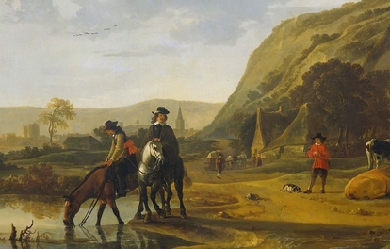
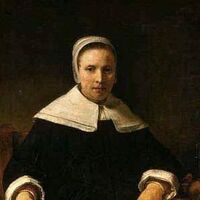
Anne Bradstreet was born in Northampton, England, in the year 1612, daughter of Thomas Dudley and Dorothy Yorke; Dudley, who had been a leader of volunteer soldiers in the English Reformation and Elizabethan Settlement, was then a steward to the Earl of Lincoln; Dorothy was a gentlewoman of noble heritage and she was also well educated. At the age of 16, Anne was married to Simon Bradstreet, a 25 year old assistant in the Massachusetts Bay Company and the son of a Puritan minister, who had been in the care of the Dudleys since the death of his father. Anne and her family emigrated to America in 1630 on the Arabella, one of the first ships to bring Puritans to New England in hopes of setting up plantation colonies. The journey was difficult; many perished during the three month journey, unable to cope with the harsh climate and poor living conditions, as sea squalls rocked the vessel, and scurvy brought on by malnutrition claimed their lives. Anne, who was a well educated girl, tutored in history, several languages and literature, was ill prepared for such rigorous travel, and would find the journey very difficult. Their trials and tribulations did not end upon their arrival, though, and many of those who had survived the journey, either died shortly thereafter, or elected to return to England, deciding they had suffered through enough. Thomas Dudley and his friend John Winthrop made up the Boston settlement's government; Winthrop was Governor, Dudley Deputy-Governor and Bradstreet Chief-Administrator. The colonists' fight for survival had become daily routine, and the climate, lack of food, and primitive living arrangements made it very difficult for Anne to adapt. She turned inwards and let her faith and imagination guide her through the most difficult moments; images of better days back in England, and the belief that God had not abandoned them helped her survive the hardships of the colony. Having previously been afflicted with smallpox, Anne would once again fall prey to illness as paralysis took over her joints; surprisingly, she did not let her predicament dim her passion for living, and she and her husband managed to make a home for themselves, and raise a family. Despite her poor health, she had eight children, and loved them dearly. Simon eventually came to prosper in the new land, and for a while it seemed things would not be so bad. Tragedy struck once more, when one night the Bradstreet home was engulfed in flames; a devastating fire which left the family homeless and devoid of personal belongings. It did not take too long for them to get back on their feet, thanks to their hard work, and to Simon's social standing in the community. While Anne and her husband were very much in love, Simon's political duties kept him traveling to various colonies on diplomatic errands, so Anne would spend her lonely days and nights reading from her father's vast collection of books, and educating her children. The reading would not only keep her from being lonely, but she also learned a great deal about religion, science, history, the arts, and medicine; most of all, reading helped her cope with life in New England. Anne Bradstreet was especially fond of poetry, which she had begun to write herself; her works were kept private though, as it was frowned upon for women to pursue intellectual enlightenment, let alone create and air their views and opinions. She wrote for herself, her family, and close circle of educated friends, and did not intend on publication. One of her closest friends, Anne Hutchinson, who was also a religious and educated woman had made the mistake of airing her views publicly, and was banished from her community. However, Anne's work would not remained unnoticed... Her brother-in-law, John Woodbridge, had secretly copied Anne's work, and would later bring it to England to have it published, albeit without her permission. Woodbridge even admitted to it in the preface of her first collection, "The Tenth Muse Lately Sprung Up in America, By a Gentlewoman of Those Parts", which was published in 1650. The book did fairly well in England, and was to be the last of her poetry to be published during her lifetime. All her other poems were published posthumously. Anne Bradstreet's poetry was mostly based on her life experience, and her love for her husband and family. One of the most interesting aspects of her work is the context in which she wrote; an atmosphere where the search for knowledge was frowned upon as being against God's will, and where women were relegated to traditional roles. Yet, we cAnneot help but feel the love she had for both God, and her husband, and her intense devotion to both, and to her family, despite the fact that she clearly valued knowledge and intellect, and was a free thinker, who could even be considered an early feminist. By Anne Bradstreet's health was slowly failing; she had been through many ailments, and was now afflicted with tuberculosis. Shortly after contracting the disease, she lost her daughter Dorothy to illness as well, but her will was strong, and perhaps, as a reflection of her own acceptance of death, she found solace in thinking of her daughter in a better place. Soon thereafter, Anne Bradstreet's long and difficult battle with illness would be at an end, and she passed away on September 16, 1672, in Andover, Massachusetts, at the age 60.
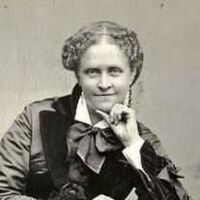
Helen Maria Hunt Jackson, born Helen Fiske (October 15, 1830 – August 12, 1885), was a United States writer who became an activist on behalf of improved treatment of Native Americans by the U.S. government. She detailed the adverse effects of government actions in her history A Century of Dishonor (1881). Her novel Ramona dramatized the federal government's mistreatment of Native Americans in Southern California and attracted considerable attention to her cause, although its popularity was based on its romantic and picturesque qualities rather than its political content. It was estimated to have been reprinted 300 times, and contributed to the growth of tourism in Southern California. Early years She was born Helen Fiske in Amherst, Massachusetts, the daughter of Nathan Welby Fiske and Deborah Waterman Vinal. She had two brothers, both of whom died after birth, and a sister Anne. Her father was a minister, author, and professor of Latin, Greek, and philosophy at Amherst College. Her mother died in 1844 when Helen was fourteen, and her father three years later. Her father provided for her education and arranged for an aunt to care for her. Fiske attended Ipswich Female Seminary and the Abbott Institute, a boarding school run by Reverend J.S.C. Abbott in New York City. She was a classmate of the poet Emily Dickinson, also from Amherst. The two corresponded for the rest of their lives, but few of their letters have survived. Marriage and family In 1852 at age 22, Fiske married U.S. Army Captain Edward Bissell Hunt. They had two sons, one of whom, Murray Hunt, died as an infant in 1854 of a brain disease. In 1863, her husband died in a military accident. Her second son, Rennie Hunt, died of diphtheria in 1865. About 1873-1874, Hunt met William Sharpless Jackson, a wealthy banker and railroad executive, while visiting at Colorado Springs, Colorado, at the resort of Seven Falls. They married in 1875 and she took the name Jackson, under which she was best known for her writings. She was a Unitarian. Career Helen Hunt began writing after the deaths of her family members. She published her early work anonymously, usually under the name "H.H." Ralph Waldo Emerson admired her poetry and used several of her poems in his public readings. He included five of them in his anthology Parnassus. She traveled widely. In the winter of 1873-1874 she was in Colorado Springs, Colorado, in search of a cure for tuberculosis. Here she met the man who would become her second husband. Over the next two years, she published three novels in the anonymous No Name Series, including Mercy Philbrick's Choice and Hetty's Strange History. In 1879 her interests turned to Native Americans after hearing a lecture in Boston by the Ponca Chief Standing Bear. He described the forcible removal of the Ponca from their Nebraska reservation and transfer to the Quapaw Reservation in Indian Territory, where they suffered from disease, climate and poor supplies. Upset about the mistreatment of Native Americans by government agents, Jackson became an activist. She started investigating and publicizing government misconduct, circulating petitions, raising money, and writing letters to the New York Times on behalf of the Ponca. A fiery and prolific writer, Jackson engaged in heated exchanges with federal officials over the injustices committed against American Indians. Among her special targets was U.S. Secretary of Interior Carl Schurz, whom she once called "the most adroit liar I ever knew." She exposed the government's violation of treaties with the American Indian tribes. She documented the corruption of US Indian agents, military officers, and settlers who encroached on and stole Indian lands. Jackson won the support of several newspaper editors who published her reports. Among her correspondents were editor William Hayes Ward of the New York Independent, Richard Watson Guilder of the Century Magazine, and publisher Whitelaw Reid of the New York Daily Tribune. Jackson also wrote a book, the first published under her own name, condemning state and federal Indian policy, and detailing the history of broken treaties. A Century of Dishonor (1881) called for significant reform in government policy toward Native Americans.[10] Jackson sent a copy to every member of Congress with a quote from Benjamin Franklin printed in red on the cover: "Look upon your hands: they are stained with the blood of your relations." The New York Times later wrote that she "soon made enemies at Washington by her often unmeasured attacks, and while on general lines she did some good, her case was weakened by her inability, in some cases, to substantiate the charges she had made; hence many who were at first sympathetic fell away." Jackson went to southern California for respite. Having been interested in the area's missions and the Mission Indians on an earlier visit, she began an in-depth study. While in Los Angeles, she met Don Antonio Coronel, former mayor of the city and a well-known authority on early Californio life in the area. He had served as inspector of missions for the Mexican government. Coronel told her about the plight of the Mission Indians after 1833. They were buffeted by the secularization policies of the Mexican government, as well as later U.S. policies, both of which led to their removal from mission lands. Under its original land grants, the Mexican government provided for resident Indians to continue to occupy such lands. After taking control of the territory in 1848, the U.S. generally disregarded such Mission Indian occupancy claims. In 1852, there were an estimated 15,000 Mission Indians in Southern California. By the time of Jackson's visit, they numbered fewer than 4,000. Coronel's account inspired Jackson to action. The U.S. Commissioner of Indian Affairs, Hiram Price, recommended her appointment as an Interior Department agent. Jackson's assignment was to visit the Mission Indians, ascertain the location and condition of various bands, and determine what lands, if any, should be purchased for their use. With the help of the US Indian agent Abbot Kinney, Jackson traveled throughout Southern California and documented conditions. At one point, she hired a law firm to protect the rights of a family of Saboba Indians facing dispossession from their land at the foot of the San Jacinto Mountains. In 1883, Jackson completed her 56-page report. It recommended extensive government relief for the Mission Indians, including the purchase of new lands for reservations and the establishment of more Indian schools. A bill embodying her recommendations passed the U.S. Senate but died in the House of Representatives. Jackson decided to write a novel to reach a wider audience. When she wrote Coronel asking for details about early California and any romantic incidents he could remember, she explained her purpose: "I am going to write a novel, in which will be set forth some Indian experiences in a way to move people's hearts. People will read a novel when they will not read serious books."[14] She was inspired by her friend Harriet Beecher Stowe's Uncle Tom's Cabin (1852). "If I could write a story that would do for the Indian one-hundredth part what Uncle Tom's Cabin did for the Negro, I would be thankful the rest of my life," she wrote. Although Jackson started an outline in California, she began writing the novel in December 1883 in her New York hotel room, and completed it in about three months. Originally titled In The Name of the Law, she published it as Ramona (1884). It featured Ramona, an orphan girl who was half Indian and half Scots, raised in Spanish Californio society, and her Indian husband Alessandro, and their struggles for land of their own. The characters were based on people known by Jackson and incidents which she had encountered. The book achieved rapid success among a wide public and was popular for generations; it was estimated to have been reprinted 300 times. Its romantic story also contributed to the growth of tourism to Southern California. Encouraged by the popularity of her book, Jackson planned to write a children's story about Indian issues, but did not live to complete it. Her last letter was written to President Grover Cleveland and said: "From my death bed I send you message of heartfelt thanks for what you have already done for the Indians. I ask you to read my Century of Dishonor. I am dying happier for the belief I have that it is your hand that is destined to strike the first steady blow toward lifting this burden of infamy from our country and righting the wrongs of the Indian race." Jackson died of stomach cancer in 1885 in San Francisco, California. Her husband arranged for her burial on a one-acre plot on a high plateau overlooking Colorado Springs, Colorado. Her grave was later moved to Evergreen Cemetery in Colorado Springs. At the time of her death, her estate was valued at $12,642. She used her married names, Helen Hunt and Helen Jackson, but she is most often referred to as Helen Hunt Jackson. The New York Times referred to her as Helen Hunt Jackson in 1885, reporting on her final illness, and in 1886, reporting on visitors to her grave. The name was used during her lifetime by others, though she disliked the practice. "It is not proper to keep one's first married name, after a second marriage", she wrote to Moncure Conway. To Caroline Healey Dall, she admitted she was "positively waging war" against being called "Helen Hunt Jackson". Critical response and legacy Jackson's A Century of Dishonor remains in print, as does a collection of her poetry. A New York Times reviewer said of Ramona that "by one estimate, the book has been reprinted 300 times." One year after Jackson's death the North American Review called Ramona "unquestionably the best novel yet produced by an American woman" and named it, along with Uncle Tom's Cabin, one of two most ethical novels of the 19th century. Sixty years after its publication, 600,000 copies had been sold. There have been over 300 reissues to date and the book has never been out of print. The novel has been adapted for other media, including three films, stage, and television productions. Valery Sherer Mathes assessed the writer and her work: Ramona may not have been another Uncle Tom's Cabin, but it served, along with Jackson's writings on the Mission Indians of California, as a catalyst for other reformers ....Helen Hunt Jackson cared deeply for the Indians of California. She cared enough to undermine her health while devoting the last few years of her life to bettering their lives. Her enduring writings, therefore, provided a legacy to other reformers, who cherished her work enough to carry on her struggle and at least try to improve the lives of America's first inhabitants. Her friend Emily Dickinson once described her limitations: "she has the facts but not the phosphorescence." In a review of a film version, a journalist wrote about the novel, calling it "the long and lugubrious romance by Helen Hunt Jackson, over which America wept unnumbered gallons in the eighties and nineties," and complained of "the long, uneventful stretches of the novel."[26] In reviewing the history of her publisher, Houghton Mifflin, a 1970 reviewer noted that Jackson typified the house's success: "Middle aged, middle class, middlebrow." Jackson herself wrote, "My Century of Dishonor and Ramona are the only things I have done of which I am glad.... They will live, and... bear fruit." A portion of Jackson's Colorado home has been reconstructed in the Colorado Springs Pioneers Museum and furnished with her possessions.

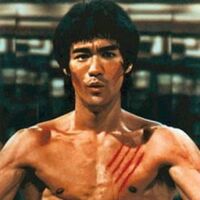
Bruce Jun Fan Lee was born in the hour of the Dragon, between 6 and 8 a.m., in the year of the Dragon on November 27, 1940 at the Jackson Street Hospital in San Francisco’s Chinatown. Today, a plaque in the hospital’s entry commemorates the place of his birth. Bruce’s birth, in the hour and the year of the Dragon, is a powerful symbol in Chinese astrology. It would be a strong omen of the powerful life that was to be lived by Bruce Lee and the explosive impact his life would have on countless others. Bruce was the fourth child born to Lee Hoi Chuen and his wife Grace Ho. He had two older sisters, Phoebe and Agnes, an older brother, Peter, and a younger brother, Robert. Lee Hoi Chuen was, by profession, a comedian in the Chinese opera and an actor in Cantonese films. At the time Bruce was born, Mr. and Mrs. Lee were on tour with the opera company in the United States. Thus, it was fortuitous for Bruce’s future that his birth took place in America, as he would return 18 years later to claim his birthright of American citizenship. Bruce’s parents gave him the name “Jun Fan.” Since it is Chinese custom to put the surname first, Bruce’s full name is written Lee Jun Fan. The true meaning of Jun Fan deserves an explanation as it, too, would foretell the journey of the newly born Lee son. Literally, JUN means “to arouse to the active state” or “to make prosperous.” It was a common middle name used by Hong Kong Chinese boys in those days, understandably because China and the Chinese people were very vulnerable at that time, and everyone, including Bruce’s parents, wanted the “sleeping lion of the East” to wake up. The FAN syllable refers to the Chinese name for San Francisco, but its true meaning is “fence of a garden” or “bordering subordinate countries of a big country.” During the period of the Ching Dynasty (1644-1911), many Chinese immigrated to Hawaii and San Francisco as laborers, and the implication became that the United States was FAN of the Great Ching Empire. Thus the true meaning of Bruce’s name--JUN FAN--was “to arouse and make FAN (the United States) prosperous.” The gut feeling of many Chinese at that time, who felt suppressed by and inferior to foreign powers, was that they wished to outshine the more superior countries and regain the Golden Age of China. Bruce’s parents wanted Bruce to have his name shine and shake the foreign countries, which he certainly succeeded in doing. The English name, BRUCE, was given to the baby boy by a nurse in the Jackson Street Hospital although he was never to use this name until he entered secondary school and began his study of the English language. The story goes that on the first day of English class, the students were asked to write down their English names, and Bruce, not knowing his name, copied the name of the student next to him. His family almost never used the name Bruce, especially in his growing up years when his nickname in the family was “SAI FON,” which literally means Little Peacock. This is a girl’s nickname, but in being applied to Bruce, it had a serious purpose. The first-born child of Mr. and Mrs. Lee had been a boy who did not survive infancy. Their belief was that if the gods did not favor the birth of a male child, the babe might be taken away. Thus, the name, Little Peacock, was used as a ruse to fool the gods into thinking that Bruce was a girl. It was a term of great affection within the family circle. At the age of three months, Lee Hoi Chuen, his wife Grace and baby Bruce returned to Hong Kong where Bruce would be raised until the age of 18. Probably because of the long ocean voyage and the change in climates, Bruce was not a strong child in his very early years, a condition that would change when he took up the study of gung fu at the age of 13. (Bruce always spelled his Chinese martial art as GUNG FU, which is the Cantonese pronunciation of the more commonly spelled Kung Fu, a Mandarin pronunciation.) Bruce’s most prominent memory of his early years was the occupation of Hong Kong by the Japanese during the World War II years (1941-1945). The residence of the Lee family was a flat at 218 Nathan Road in Kowloon directly across the street from the military encampment of the Japanese. Bruce’s mother often told the story of young Bruce, less than 5 years old, leaning precariously off the balcony of their home raising his fist to the Japanese Zeros circling above. Another nickname the family often applied to Bruce was “Mo Si Ting” which means “never sits still” and aptly described his personality. The Japanese occupation was Bruce’s first prescient memory, but Hong Kong had been a British Crown Colony since the late 1800’s. The English returned to power at the end of the war. It is not hard to see why young Bruce would have rebellious feelings toward foreign usurpation of his homeland. In his teenage years Bruce was exposed to the common practice of unfriendly taunting by English school boys who appeared to feel superior to the Chinese. It is not surprising that Bruce and his friends retaliated by returning the taunts and sometimes getting into fights with the English boys. This atmosphere laid the background for Bruce to begin his study of martial arts. At the age of 13, Bruce was introduced to Master Yip Man, a teacher of the Wing Chun style of gung fu. For five years Bruce studied diligently and became very proficient. He greatly revered Yip Man as a master teacher and wise man and frequently visited with him in later years. When he first took up gung fu, he used his new skills to pummel his adversaries, but it did not take long for Bruce to learn that the real value of martial arts training is that the skills of physical combat instill confidence to the point that one does not feel the constant need to defend one’s honor through fighting. In high school, Bruce, now no longer a weak child, was beginning to hone his body through hard training. One of his accomplishments was winning an interschool Boxing Championship against an English student in which the Marquis of Queensbury rules were followed and no kicking was allowed. Given the graceful movements, which would later be spectacularly displayed in his films, it is no surprise that Bruce was also a terrific dancer, and in 1958 he won the Hong Kong Cha Cha Championship. He studied dancing as assiduously as he did gung fu, keeping a notebook in which he had noted 108 different cha cha steps. It is easy to see that Bruce possessed the traits of self-discipline and hard work which would later hold him in good stead, even though at this stage he was not among the best academic students in the class. In addition to his studies, gung fu and dancing, Bruce had another side interest during his school years. He was a child actor under the tutelage of his father who must have known from an early age that Bruce had a streak of showmanship. Bruce’s very first role was as a babe in arms as he was carried onto the stage. By the time he was 18, he had appeared in 20 films. In those days movie making was not particularly glamorous or remunerative in Hong Kong, but Bruce loved acting. His mother often told stories of how Bruce was impossible to wake up to go to school, but just a tap on the shoulder at midnight would rouse him from his bed to go to the film studio. Movies were most often made at night in Hong Kong in order to minimize the sounds of the city. (See Filmography) At the age of 18, Bruce was looking for new vistas in his life, as were his parents who were discouraged that Bruce had not made more progress academically. It was common practice for high school graduates to go overseas to attend colleges, but that required excellent grades. Bruce’s brother and sister had come to the United States on student visas for their higher education. Although Bruce had not formally graduated from high school, and was more interested in gung fu, dancing and acting, his family decided that it was time for him to return to the land of his birth and find his future there. In April of 1959, with $100 in his pocket, Bruce boarded a steamship in the American Presidents Line and began his voyage to San Francisco. His passage was in the lower decks of the ship, but it didn’t take long for Bruce to be invited up to the first class accommodations to teach the passengers the cha cha. Landing in San Francisco, Bruce was armed with the knowledge that his dancing abilities might provide him a living, so his first job was as a dance instructor. One of his first students was Bob Lee, brother of James Y. Lee, who would become Bruce’s great friend, colleague in the martial arts, and eventually partner and Assistant Instructor of the Oakland Jun Fan Gung Fu Institute. Bruce did not stay long in San Francisco, but traveled to Seattle where a family friend, Ruby Chow, had a restaurant and had promised Bruce a job and living quarters above the restaurant. By now Bruce had left his acting and dancing passions behind and was intent on furthering his education. He enrolled at Edison Technical School where he fulfilled the requirements for the equivalent of high school graduation and then enrolled at the University of Washington. Typical of his personality traits, he attacked learning colloquial English as he had his martial arts training. Not content to speak like a foreigner, he applied himself to learning idiosyncrasies of speech. His library contained numerous books, underlined and dog-eared on common English idiomatic phrases. Although he never quite lost the hint of an English accent when speaking, his ability to turn a phrase or “be cool” was amazing for one who did not speak a word of the language until the age of 12. Bruce’s written English skills exceeded his spoken language abilities at first because he had been well tutored in the King’s proper English prose in Hong Kong. When his wife-to-be met him at the University of Washington, he easily edited her English papers for correct grammar and syntax. At the university, Bruce majored in philosophy. His passion for gung fu inspired a desire to delve into the philosophical underpinnings of the arts. Many of his written essays during those years would relate philosophical principles to certain martial arts techniques. For instance, he wrote often about the principles of yin and yang and how they could translate into hard and soft physical movements. In this way he was completing his education as a true martial artist in the time-honored Chinese sense of one whose knowledge encompasses the physical, mental and spiritual aspects of the arts. In the three years that Bruce studied at the university, he supported himself by teaching gung fu, having by this time given up working in the restaurant, stuffing newspapers or various other odd jobs. He and a few of his new friends would meet in parking lots, garages or any open space and play around with gung fu techniques. In the late ‘50’s and early ‘60’s, “gung fu” was an unknown term; in fact, the only physical art that might be listed in the yellow pages was Judo. Even the name “karate” was not a familiar term. The small group of friends was intrigued by this art called gung fu. One of the first students in this group was Jesse Glover who continues to teach some of Bruce’s early techniques to this day. It was during this period that Bruce and Taky Kimura became friends. Not only would Taky become Bruce’s gung fu student and the first Assistant Instructor he ever had, but the friendship forged between the two men was a source of love and strength for both of them. Taky Kimura has continued to be Bruce’s staunch supporter, devoting endless hours to preserving his art and philosophy throughout the 30 years since Bruce’s passing. The small circle of friends that Bruce had made encouraged him to open a real school of gung fu and charge a nominal sum for teaching in order to support himself while attending school. Renting a small basement room with a half door entry from 8th Street in Seattle’s Chinatown, Bruce decided to call his school the Jun Fan Gung Fu Institute. In 1963, having established a dedicated group of students and having given numerous demonstrations at the university, Bruce thought he might attract more students by opening a larger school at 4750 University Way where he also lived in a small room in the back of the kwoon. One of his students in 1963 was a freshman at the University of Washington, Linda Emery. Linda knew who Bruce was from his guest lectures in Chinese philosophy at Garfield High School, and in the summer after graduating, at the urging of her Chinese girlfriend, SueAnn Kay, Linda started taking gung fu lessons. It wasn’t long before the instructor became more interesting than the lessons. Bruce and Linda were married in 1964. By this time, Bruce had decided to make a career out of teaching gung fu. His plan involved opening a number of schools around the country and training assistant instructors to teach in his absence. Leaving his Seattle school in the hands of Taky Kimura, Bruce and Linda moved to Oakland where Bruce opened his second school with James Lee. The two men had formed a friendship over the years with each traveling frequently between Seattle and Oakland. James was a gung fu man from way back, but when he saw Bruce’s stuff he was so impressed that he wanted to join with him in starting a school. Thus the second branch of the Jun Fan Gung Fu Institute was founded. Having now been in the United States for five years, Bruce had left behind any thought of acting as a career, and devoted himself completely to his choice of martial arts as a profession. Up to this time Bruce’s gung fu consisted mostly of wing chun techniques and theory he had learned from Yip Man. Gradually though, because of his burgeoning interest in the philosophy of martial arts and his desire for self improvement, he was expanding his repertoire. A particular incident accelerated his process of self-exploration. In 1964 Bruce was challenged by some gung fu men from San Francisco who objected to his teaching of non-Chinese students. Bruce accepted the challenge and the men arrived at the kwoon in Oakland on the appointed day for the face off. The terms were that if Bruce were defeated he would stop teaching the non Chinese. It was a short fight with the gung fu man from The City giving up when Bruce had him pinned to the floor after about three minutes. The significance of this fight was that Bruce was extremely disappointed in his own performance. Even though he had won, he was winded and discouraged about his inability to put the man away in under three minutes. This marked a turning point for Bruce in his exploration of his martial art and the enhancement of his physical fitness. Thus began the evolution of Jeet Kune Do. Just as Bruce was cementing his plans to expand his martial arts schools, fate stepped in to move his life in another direction. In the preceding years Bruce had made the acquaintance of Ed Parker, widely regarded as the father of American Kenpo. In August of 1964, Ed invited Bruce to Long Beach, CA to give a demonstration at his First International Karate Tournament. Bruce’s exhibition was spectacular. He used Taky as his partner and demonstrated his blindfolded chi sao techniques. At one point he used a member of the audience to show the power of his one-inch punch. Such was Bruce’s charisma that he spoke conversationally, injecting humor into his comments while at the same time emphatically demonstrating his power, precision and speed. A member of the audience was Jay Sebring, a well-known hair stylist to the stars. As fate would have it, the following week, Jay was styling the hair of William Dozier, an established producer. Mr. Dozier mentioned to Jay that he was looking for an actor to play the part of Charlie Chan’s son in a series to be entitled, “Number One Son.” Jay told the producer about having seen this spectacular young Chinese man giving a gung fu demonstration just a few nights before. Mr. Dozier obtained a copy of the film that was taken at Ed Parker’s tournament. The next week he called Bruce at home in Oakland and invited him to come to Los Angeles for a screen test. Bruce’s screen test was impressive, but in the meantime plans for “Number One Son” had been scuttled. Mr. Dozier was now immersed in the production of the “Batman” TV series, but still he wanted to hang onto Bruce. The plan was that if Batman was successful for more than one season, then Dozier wanted to capitalize on the popularity of another comic book character, “The Green Hornet” with Bruce playing the part of Kato. To keep Bruce from signing with someone else, Mr. Dozier paid him an $1,800 option for one year. About this time things were changing in Bruce’s personal life as well. His own number one son, Brandon Bruce Lee, was born February 1, 1965. One week later Bruce’s father, Lee Hoi Chuen, died in Hong Kong. Bruce was pleased that his father had known about the birth of the first grandchild in the Lee family. Given these events and the arrival of the lump sum option money, Bruce decided it was time to make a trip to Hong Kong to visit his mother and introduce the family to both Linda and Brandon. They stayed in the family flat on Nathan Road for four months. While there Bruce was able to “play gung fu” with Master Yip Man and the students of the wing chun school. Upon leaving Hong Kong, Bruce and his family traveled to Seattle where they stayed with Linda’s family for another four months. During this time Bruce spent a great deal of time with Taky and the students at the Seattle school. After Seattle, the family moved back to James Lee’s house in Oakland for several months before making the move to Los Angeles. In Los Angeles, he got better acquainted with Dan Inosanto whom he had known through Ed Parker. It was not long before Bruce opened his third gung fu school with Dan as his assistant instructor During this entire year of traveling and working closely with his best gung fu colleagues, Bruce was going through a period of intense self-exploration. Bruce was always a goal setter. However, he was never obstinate about his goals and if the wind changed, he could steer his life on a different course. He was in a period of transition at this time, deciding whether to make acting his career or continue on the path of opening nationwide schools of gung fu. His decision was to focus on acting and see if he could turn it into a productive career. He often said his passion was pursuit of the martial arts, but his career choice was filmmaking. The chief reason that Bruce turned his attention to acting was that he had lost interest in spreading his way of martial arts in a wide scale manner. He had begun to see that if his schools became more numerous, he would lose control of the quality of the teaching. Bruce loved to teach gung fu, and he loved his students. Countless hours were spent in his backyard or in the kwoon, one on one with students. They were like members of the family. His love for his martial arts was not something he wanted to turn into a business. In 1966, production started on “The Green Hornet.” The filming lasted for six months, the series for one season, and that was the end of it. Bruce’s take home pay was $313 a week, which seemed like a lot of money at the time. When they first started filming, the cameras were not able to record the fight scenes clearly because of Bruce’s speed. They asked him to slow down to capture the action. Bruce’s gung fu moves thrilled audiences, and the series became a sought-after collector item in later years. Bruce maintained a friendship with Van Williams who played the part of Britt Reid. The years between 1967 and 1971 were lean years for the Lee family. Bruce worked hard at furthering his acting career and did get some roles in a few TV series and films. (See Filmography) To support the family, Bruce taught private lessons in Jeet Kune Do, often to people in the entertainment industry. Some of his clients included Steve McQueen, James Coburn, Stirling Silliphant, Sy Weintraub, Ted Ashley, Joe Hyams, James Garner and others. A great blessing was the arrival of a daughter, Shannon Emery Lee, on April 19, 1969. She brought great joy into the Lee household and soon had her daddy around her little finger. During this time Bruce continued the process he had started in Oakland in 1964, the evolution of his way of martial arts, which he called Jeet Kune Do, “The Way of The Intercepting Fist.” He read and wrote extensively his thoughts about physical combat, the psychology of fighting, the philosophical roots of martial arts, and about motivation, self-actualization and liberation of the individual. Thanks to this period in his life, which was at times frustrating, we know more about the mind of Bruce Lee through his writings. Bruce was devoted to physical culture and trained devotedly. In addition to actual sparring with his students, he believed in strenuous aerobic workouts and weight training. His abdominal and forearm workouts were particularly intense. There was rarely a time when Bruce was doing nothing—in fact, he was often seen reading a book, doing forearm curls and watching a boxing film at the same time. He also paid strict attention to his food consumption and took vitamins and Chinese herbs at times. It was actually his zealousness that led to an injury that was to become a chronic source of pain for the rest of his life. On a day in 1970, without warming up, something he always did, Bruce picked up a 125-pound barbell and did a “good morning” exercise. That consists of resting the barbell on one’s shoulders and bending straight over at the waist. After much pain and many tests, it was determined that he had sustained an injury to the fourth sacral nerve. He was ordered to complete bed rest and told that undoubtedly he would never do gung fu again. For the next six months, Bruce stayed in bed. It was an extremely frustrating, depressing and painful time, and a time to redefine goals. It was also during this time that he did a great deal of the writing that has been preserved. After several months, Bruce instituted his own recovery program and began walking, gingerly at first, and gradually built up his strength. He was determined that he would do his beloved gung fu again. As can be seen by his later films, he did recover full use of his body, but he constantly had to take measures like icing, massage and rest to take care of his back. Bruce was always imagining story ideas. One of the projects he had been working on was the idea of a television series set in the Old West, featuring an Eastern monk who roamed the countryside solving problems. He pitched the idea at Warner Bros. and it was enthusiastically received. The producers talked at great length to Bruce about the proposed series always with the intent that Bruce would play the role of the Eastern wise man. In the end, the role was not offered to Bruce; instead it went to David Carradine. The series was “Kung Fu.” The studio claimed that a Chinese man was not a bankable star at that time. Hugely disappointed, Bruce sought other ways to break down the studio doors. Along with two of his students, Stirling Silliphant, the famed writer, and actor, James Coburn, Bruce collaborated on a script for which he wrote the original story line. The three of them met weekly to refine the script. It was to be called “The Silent Flute.” Again, Warner Bros. was interested and sent the three to India to look for locations. Unfortunately the right locations could not be found, the studio backed off, and the project was put on the back burner. Thwarted again in his effort to make a go of his acting career, Bruce devised a new approach to his goal. In 1970, when Bruce was getting his strength back from his back injury, he took a trip to Hong Kong with son Brandon, age five. He was surprised when he was greeted as “Kato,” the local boy who had been on American TV. He was asked to appear on TV talk shows. He was not aware that Hong Kong film producers were viewing him with interest. In 1971, about the time that “The Silent Flute” failed to materialize, Hong Kong producer Raymond Chow contacted Bruce to interest him in doing two films for Golden Harvest. Bruce decided to do it, reasoning that if he couldn’t enter the front door of the American studios, he would go to Hong Kong, establish himself there and come back in through the side door. In the summer of 1971, Bruce left Los Angeles to fly to Hong Kong, then on to Thailand for the making of “The Big Boss,” later called “Fists of Fury.” Between Hong Kong and Thailand, producer Run Run Shaw attempted to intercede and woo Bruce away from Golden Harvest. But Bruce had signed a deal so he stayed with Raymond Chow. Bruce’s family did not accompany him on this trip because the village where the film was made was not suitable for small children. It was also felt that if this film was not a hit, Bruce might be back in L.A. sooner than expected. Although the working conditions were difficult, and the production quality substandard to what Bruce was accustomed, “The Big Boss” was a huge success. The premier took place at midnight, as was Hong Kong custom. Chinese audiences are infamous for expressing their emotions during films—both positive and negative. The entire cast and production team were very nervous, no one more so than Bruce. At the end of the showing, the entire audience was silent for a moment, then erupted in cheers and hailed their new hero who was viewing from the back of the theater. In September of 1971, with filming set to commence on the second of the contractual films, Bruce moved his family over to Hong Kong and prepared to sell their Los Angeles home. “Fist of Fury,” also called “Chinese Connection” was an even bigger success than the first film breaking all-time box office records. Now that Bruce had completed his contract with Golden Harvest, and had become a bankable commodity, he could begin to have more input into the quality of his films. For the third film, he formed a partnership with Raymond Chow, called Concord Productions. Not only did Bruce write “The Way of the Dragon,” also called “Return of the Dragon,” but he directed and produced it as well. Once again, the film broke records and now, Hollywood was listening. In the fall of 1972, Bruce began filming “The Game of Death,” a story he once again envisioned. The filming was interrupted by the culmination of a deal with Warner Bros. to make the first ever Hong Kong-American co-production. The deal was facilitated mainly by Bruce’s personal relationship with Warner Bros. president, Ted Ashley and by Bruce’s successes in Hong Kong. It was an exciting moment and a turning point in Hong Kong’s film industry. “The Game of Death” was put on hold to make way for the filming of “Enter the Dragon.” Filming “Enter the Dragon” was not an easy undertaking. The American cast and crew and their Chinese counterparts experienced language problems and production difficulties. It was a stressful time for Bruce too as he wanted the film to be especially good and well accepted by Western audiences. “Enter the Dragon” was due to premier at Hollywood’s Chinese theater in August of 1973. Unfortunately, Bruce would not live to see the opening of his film, nor would he experience the accumulated success of more than thirty years of all his films’ popularity. On July 20, 1973, Bruce had a minor headache. He was offered a prescription painkiller called Equagesic. After taking the pill, he went to lie down and lapsed into a coma. He was unable to be revived. Extensive forensic pathology was done to determine the cause of his death, which was not immediately apparent. A nine-day coroner’s inquest was held with testimony given by renowned pathologists flown in from around the world. The determination was that Bruce had a hypersensitive reaction to an ingredient in the pain medication that caused a swelling of the fluid on the brain, resulting in a coma and death. The world lost a brilliant star and an evolved human being that day. His spirit remains an inspiration to untold numbers of people around the world. Copyright @ 2006 Bruce Lee Foundation References Bruce Lee Foundation - http://bruceleefoundation.com/index.cfm/pid/10585
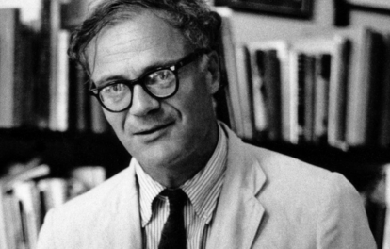
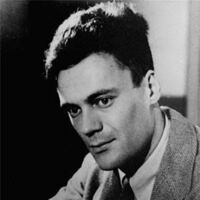
In 1917, Robert Lowell was born into one of Boston's oldest and most prominent families. He attended Harvard College for two years before transferring to Kenyon College, where he studied poetry under John Crowe Ransom and received an undergraduate degree in 1940. He took graduate courses at Louisiana State University where he studied with Robert Penn Warren and Cleanth Brooks. His first and second books, Land of Unlikeness (1944) and Lord Weary's Castle (for which he received a Pulitzer Prize in 1947, at the age of thirty), were influenced by his conversion from Episcopalianism to Catholicism and explored the dark side of America's Puritan legacy. Under the influence of Allen Tate and the New Critics, he wrote rigorously formal poetry that drew praise for its exceptionally powerful handling of meter and rhyme. Lowell was politically involved—he became a conscientious objector during the Second World War and was imprisoned as a result, and actively protested against the war in Vietnam—and his personal life was full of marital and psychological turmoil. He suffered from severe episodes of manic depression, for which he was repeatedly hospitalized. Partly in response to his frequent breakdowns, and partly due to the influence of such younger poets as W. D. Snodgrass and Allen Ginsberg, Lowell in the mid-fifties began to write more directly from personal experience, and loosened his adherence to traditional meter and form. The result was a watershed collection, Life Studies (1959), which forever changed the landscape of modern poetry, much as Eliot's The Waste Land had three decades before. Considered by many to be the most important poet in English of the second half of the twentieth century, Lowell continued to develop his work with sometimes uneven results, all along defining the restless center of American poetry, until his sudden death from a heart attack at age 60. Robert Lowell served as a Chancellor of The Academy of American Poets from 1962 until his death in 1977. Poetry Land of Unlikeness (1944) Lord Weary's Castle (1946) Poems, 1938-1949 (1950) The Mills of the Kavanaughs (1951) Life Studies (1959) Imitations (1961) For the Union Dead (1964) Selected Poems (1965) Near the Ocean (1967) The Voyage and Other Versions of Poems by Baudelaire (1968) Notebooks, 1967-1968 (1969) The Dolphin (1973) For Lizzie and Harriet (1973) History (1973) Selected Poems (1976) Day by Day (1977) Prose The Collected Prose (1987) Anthology Phaedra (1961) Prometheus Bound (1969) Drama The Old Glory (1965) References Poets.org - www.poets.org/poet.php/prmPID/10
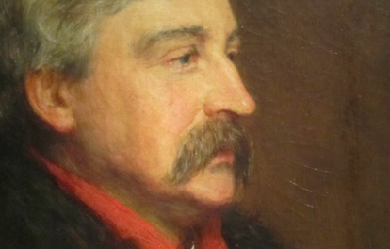
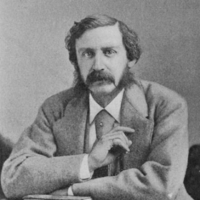
Francis Brett Hart, known as Bret Harte (August 25, 1836 – May 5, 1902), was an American short story writer and poet, best remembered for his short fiction featuring miners, gamblers, and other romantic figures of the California Gold Rush. In a career spanning more than four decades, he wrote poetry, plays, lectures, book reviews, editorials, and magazine sketches in addition to fiction. As he moved from California to the eastern U.S. to Europe, he incorporated new subjects and characters into his stories, but his Gold Rush tales have been most often reprinted, adapted, and admired. Biography Early life Harte was born in the capital city of Albany, New York. He was named Francis Brett Hart after his great-grandfather, Francis Brett. When he was young, his father, Henry, changed the spelling of the family name from Hart to Harte. Henry’s father was Bernard Hart, an Orthodox Jewish immigrant who flourished as a merchant, becoming one of the founders of the New York Stock Exchange. Later, Francis preferred to be known by his middle name, but he spelled it with only one “t”, becoming Bret Harte.An avid reader as a boy, Harte published his first work at age 11, a satirical poem titled “Autumn Musings”, now lost. Rather than attracting praise, the poem garnered ridicule from his family. As an adult, he recalled to a friend, “Such a shock was their ridicule to me that I wonder that I ever wrote another line of verse”. His formal schooling ended when he was 13, in 1849. Career in California Harte moved to California in 1853, later working there in a number of capacities, including miner, teacher, messenger, and journalist. He spent part of his life in the northern California coastal town of Union (now Arcata), a settlement on Humboldt Bay that was established as a provisioning center for mining camps in the interior.The Wells Fargo Messenger of July 1916, relates that, after an unsuccessful attempt to make a living in the gold camps, Harte signed on as a messenger with Wells Fargo & Co. Express. He guarded treasure boxes on stagecoaches for a few months, then gave it up to become the schoolmaster at a school near the town of Sonora, in the Sierra foothills. He created his character Yuba Bill from his memory of an old stagecoach driver. Among Harte’s first literary efforts, a poem was published in The Golden Era in 1857, and, in October of that same year, his first prose piece on “A Trip Up the Coast”. He was hired as editor of The Golden Era in the spring of 1860, which he attempted to make into a more literary publication. Mark Twain later recalled that, as an editor, Harte struck “a new and fresh and spirited note” which “rose above that orchestra’s mumbling confusion and was recognizable as music”. Among his writings were parodies and satires of other writers, including The Stolen Cigar-Case featuring ace detective “Hemlock Jones”, which Ellery Queen praised as “probably the best parody of Sherlock Holmes ever written”.The 1860 massacre of between 80 and 200 Wiyot Indians at the village of Tuluwat (near Eureka in Humboldt County, California) was reported by Harte in San Francisco and New York. While serving as assistant editor of the Northern Californian, Harte was left in charge of the paper during the temporary absence of his boss, Stephen G. Whipple. Harte published a detailed account condemning the slayings, writing: “a more shocking and revolting spectacle never was exhibited to the eyes of a Christian and civilized people. Old women wrinkled and decrepit lay weltering in blood, their brains dashed out and dabbled with their long grey hair. Infants scarcely a span long, with their faces cloven with hatchets and their bodies ghastly with wounds.”After he published the editorial, Harte’s life was threatened, and he was forced to flee one month later. Harte quit his job and moved to San Francisco, where an anonymous letter published in a city paper is attributed to him, describing widespread community approval of the massacre. In addition, no one was ever brought to trial, despite the evidence of a planned attack and references to specific individuals, including a rancher named Larabee and other members of the unofficial militia called the Humboldt Volunteers. Harte married Anna Griswold on August 11, 1862 in San Rafael, California. From the start, the marriage was rocky. Some suggested that she was handicapped by extreme jealousy, while early Harte biographer Henry C. Merwin privately concluded that she was “almost impossible to live with”.The well-known minister Thomas Starr King recommended Harte to James Thomas Fields, editor of the prestigious magazine, The Atlantic Monthly, which published Harte’s first short story in October 1863. In 1864, Harte joined with Charles Henry Webb in starting a new literary journal called The Californian. He became friends with and mentored poet Ina Coolbrith.In 1865 Harte was asked by bookseller Anton Roman to edit a book of California poetry; it was to be a showcase of the finest California writers. When the book, called Outcroppings, was published, it contained only nineteen poets, many of them Harte’s friends (including Ina Coolbrith and Charles Warren Stoddard). The book caused some controversy, as Harte used the preface as a vehicle to attack California’s literature, blaming the state’s “monotonous climate” for its bad poetry. While the book was widely praised in the East, many newspapers and poets in the West took umbrage at his remarks.In 1868, Harte became editor of The Overland Monthly, another new literary magazine, published by Roman Anton with the intention of highlighting local writings. The Overland Monthly was more in tune with the pioneering spirit of excitement in California. Harte’s short story “The Luck of Roaring Camp” appeared in the magazine’s second issue, propelling him to nationwide fame.When word of Charles Dickens’s death reached Harte in July 1870, he immediately sent a dispatch across the bay to San Francisco to hold back the forthcoming issue of the Overland Monthly for 24 hours so that he could compose the poetic tribute, “Dickens in Camp”. Harte’s fame increased with the publication of his satirical poem “Plain Language from Truthful James” in the September 1870 issue of the Overland Monthly. The poem became better known by its alternate title, “The Heathen Chinee”, after being republished in a Boston newspaper in 1871. It was also quickly republished in a number of other newspapers and journals, including the New York Evening Post, the New York Tribune, the Boston Evening Transcript, the Providence Journal, the Hartford Courant, Prairie Farmer, and the Saturday Evening Post. Harte was chagrined, however, to find that the popularity of the poem, which he had written to criticize the prevalence of anti-Chinese sentiment among the white population of California, was largely the result of its being taken literally by the very people he had lampooned, who completely misconstrued the ironic intent of Harte’s words. Leaving the West He was determined to pursue his literary career and traveled back East with his family in 1871 to New York and eventually to Boston where he contracted with the publisher of The Atlantic Monthly for an annual salary of $10,000, “an unprecedented sum at the time”. His popularity waned, however, and by the end of 1872 he was without a publishing contract and increasingly desperate. He spent the next few years struggling to publish new work or republish old, and delivering lectures about the gold rush. The winter of 1877–1878 was particularly hard for Harte and his family. He later recalled it as a “hand-to-mouth life” and wrote to his wife Anna, “I don’t know—looking back—what ever kept me from going down, in every way, during that awful December and January”.After months of soliciting for such a role, Harte accepted the position of United States Consul in the town of Krefeld, Germany in May 1878. Mark Twain had been a friend and supporter of Harte’s until a substantial falling out, and he had previously tried to block any appointment for Harte. In a letter to William Dean Howells, he complained that Harte would be an embarrassment to the United States because, as he wrote, “Harte is a liar, a thief, a swindler, a snob, a sot, a sponge, a coward, a Jeremy Diddler, he is brim full of treachery... To send this nasty creature to puke upon the American name in a foreign land is too much”. Eventually, Harte was given a similar role in Glasgow in 1880. In 1885, he settled in London. Throughout his time in Europe, he regularly wrote to his wife and children and sent monthly financial contributions. He declined, however, to invite them to join him, nor did he return to the United States to visit them. His excuses were usually related to money. During the 24 years that he spent in Europe, he never abandoned writing and maintained a prodigious output of stories that retained the freshness of his earlier work. He died in Camberley, England in 1902 of throat cancer, and is buried at Frimley. His wife Anna (née Griswold) Harte died on August 2, 1920. The couple lived together only 16 of the 40 years that they were married. Reception In Round the World, Andrew Carnegie praised Harte as uniquely American:"A whispering pine of the Sierras transplanted to Fifth Avenue! How could it grow? Although it shows some faint signs of life, how sickly are the leaves! As for fruit, there is none. America had in Bret Harte its most distinctively national poet.” Mark Twain, however, characterized him and his writing as insincere. Writing in his autobiography four years after Harte’s death, Twain criticized the miners’ dialect used by Harte, claiming that it never existed outside of his imagination. Additionally, Twain accused Harte of “borrowing” money from his friends with no intention of repaying it and of financially abandoning his wife and children. He referred repeatedly to Harte as “The Immortal Bilk”. Works * Condensed Novels and Other Papers (1867) * Outcroppings (1865), editor * The Luck of Roaring Camp, and Other Sketches (1870) * Poems (1871) * The Tales of the Argonauts (1875) * Flip and Found at Blazing Star (1882) * Gabriel Conroy (1876) * Two Men of Sandy Bar (1876) * Drift from Two Shores (1878) * An Heiress of Red Dog, and Other Tales (1879) * A Millionaire of Rough-And-Ready and Devil’s Ford (1887) * The Crusade of the Excelsior (1887) * The Argonauts of North Liberty (1888) * A First Family of Tasajara (1892) * Colonel Starbottle’s Client, and some other people (1892) * A Protégée of Jack Hamlin’s; and Other Stories (1894) * Barker’s Luck etc. (1896) * Under the Red-Woods (1901) * Her Letter, His Answer, and Her Last Letter (1905) Dramatic and musical adaptations * Several film versions of “The Outcasts of Poker Flat” have been made, including one in 1937 with Preston Foster and another in 1952 with Dale Robertson. * Tennessee’s Partner (1955) with John Payne and Ronald Reagan was based on the story of the same name. * Paddy Chayefsky’s treatment of the film version of Paint Your Wagon seems to borrow from “Tennessee’s Partner”: two close friends – one named “Pardner” – share the same woman. The spaghetti western Four of the Apocalypse is based on “The Outcasts of Poker Flat” and “The Luck of Roaring Camp”. * The Soviet movie Armed and Dangerous (Russian: Вооружён и очень опасен, 1977) is based on Gabriel Conroy and another of Harte’s stories. * Operas based on “The Outcasts of Poker Flat” include those by Samuel Adler and by Stanford Beckler. * The actor Craig Hill was cast as Harte in the 1956 episode, “Year of Destiny”, on the syndicated anthology series Death Valley Days, hosted by Stanley Andrews. The “year of destiny” is 1857, when Harte arrived in California. First a stagecoach guard, then a newspaper editor and schoolteacher, he slowly finds fame as a western writer. Legacy * Bret Harte Memorial in San Francisco * Bret Harte, California, a census-designated place (CDP) in Stanislaus County * Twain Harte, a CDP in Tuolumne County, California, named after both Mark Twain and Bret Harte. * The Mark Twain Bret Harte Historic Trail (Marker Number 431 erected in 1948 by the California Centennial Commission), also named after both writers. * Bret Harte Village in the Gold River community of Sacramento County. Sacramento, California * Bret Harte Court, a street in Sacramento, California * Bret Harte Library, a public library in Long Beach, California * Bret Harte Hall, Roaring Camp Railroads Felton, California * Bret Harte High School in Angels Camp, California is named after him. * Bret Harte Lane in Humboldt Hill, California. * Bret Harte Elementary School in Chicago, Illinois * Bret Harte Preparatory Middle School (Vermont Vista) South Los Angeles, California * Bret Harte Middle School in San Jose, California * Bret Harte Middle School in Oakland, California * Bret Harte Middle School in Hayward, California * Bret Harte High School in Altaville, California is named after him and celebrated its 100th anniversary in 2005 * Bret Harte Elementary in Corcoran, California * Bret Harte Elementary in San Francisco, California * Bret Harte Elementary in Burbank, California * Bret Harte Elementary in Cherry Hill, New Jersey * Bret Harte Elementary in Sacramento, California * Bret Harte Elementary School in Modesto, California * A community called The Shores of Poker Flat, California claims to have been the location of Poker Flat, although it is usually accepted that the story takes place further north. * Bret Harte Road in Frimley (the town in which Harte was buried) is named after him. * Bret Harte Place in San Francisco, California is named after him. * Bret Harte Lane, Bret Harte Road, and Harte Ave in San Rafael, California. * Bret Harte Road in Berkeley, California. * Bret Harte Road in Redwood City, California. * Bret Harte Road in Angels Camp, California. * Bret Harte Road and Bret Harte Drive in Murphys, California. * Bret Harte Avenue in Reno, Nevada. * Bret Harte House, at Humboldt State University in Arcata, California. * Bret Harte Alley in Arcata, California. * Bret Harte Park in Danville, California. * In 1987 Harte appeared on a $5 U.S. Postage stamp, as part of the “Great Americans series” of issues. References Wikipedia—https://en.wikipedia.org/wiki/Bret_Harte
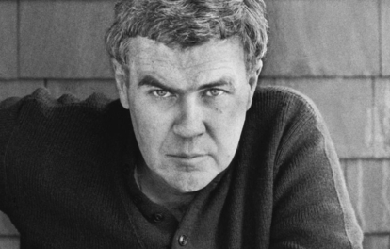

Raymond Clevie Carver, Jr. (May 25, 1938– August 2, 1988) was an American short-story writer and poet. Carver contributed to the revitalization of the American short story in literature during the 1980s. Early life Carver was born in Clatskanie, Oregon, a mill town on the Columbia River, and grew up in Yakima, Washington, the son of Ella Beatrice (née Casey) and Clevie Raymond Carver. His father, a sawmill worker from Arkansas, was a fisherman and heavy drinker. Carver’s mother worked on and off as a waitress and a retail clerk. His one brother, James Franklin Carver, was born in 1943. Carver was educated at local schools in Yakima, Washington. In his spare time, he read mostly novels by Mickey Spillane or publications such as Sports Afield and Outdoor Life, and hunted and fished with friends and family. After graduating from Yakima High School in 1956, Carver worked with his father at a sawmill in California. In June 1957, at age 19, he married 16-year-old Maryann Burk, who had just graduated from a private Episcopal school for girls. Their daughter, Christine La Rae, was born in December 1957. Their second child, a boy named Vance Lindsay, was born a year later. He supported his family by working as a delivery man, janitor, library assistant, and sawmill laborer. During their marriage, Maryann also supported the family by working as an administrative assistant and a high school English teacher, salesperson, and waitress. Writing career Carver became interested in writing in Paradise, California, where he had moved with his family to be close to his mother-in-law. While attending Chico State College, he enrolled in a creative writing course taught by the novelist John Gardner, a recent doctoral graduate of the Iowa Writers’ Workshop who became a mentor and had a major influence on Carver’s life and career. Carver’s first published story, “The Furious Seasons”, appeared in 1961. More florid than his later work, the story strongly bore the influence of William Faulkner. “Furious Seasons” was later used as a title for a collection of stories published by Capra Press, and is now in the recent collection, No Heroics, Please and Call If You Need Me. It is a common misconception that Carver was influenced by Ernest Hemingway, as both writers exhibit a similar economical and plain prose style. In his essay “On Influence”, however, Carver states clearly that, while he was an admirer of Hemingway’s fiction, he never saw him as an influence, citing instead the work of Lawrence Durrell. Carver continued his studies under the short-story writer Richard Cortez Day (like Gardner, a recent PhD alumnus of the Iowa program) at Humboldt State College in Arcata, California. After electing not to take the foreign language courses required by the English program, he received his B.A. in general studies in 1963. During this period he was first published and served as editor for Toyon, the university’s literary magazine, in which he published several of his own pieces under his own name as well as the pseudonym John Vale. With his B– average—exacerbated by his penchant to forsake coursework for literary endeavors—ballasted by a sterling recommendation from Day, Carver was accepted into the Iowa Writers’ Workshop on a $1,000 fellowship for the 1963–1964 academic year. Homesick for California and unable to fully acclimate to the program’s upper middle class milieu, he only completed 12 credits out of the 30 required for a M.A. degree or 60 for the M.F.A. degree. Although he was awarded a fellowship for a second year of study from program director Paul Engle after Maryann Carver personally interceded and compared her husband’s plight to Tennessee Williams’ deleterious experience in the program three decades earlier, Carver decided to leave the program at the end of the semester. Maryann (who postponed completing her education to support her husband’s educational and literary endeavors) eventually graduated from San Jose State College in 1970 and taught English at Los Altos High School until 1977, when she enrolled in the University of California, Santa Barbara’s doctoral program in English. In the mid-1960s, Carver and his family resided in Sacramento, California, where he briefly worked at a bookstore before taking a position as a night custodian at Mercy Hospital. He did all of the janitorial work in the first hour and then wrote at the hospital through the rest of the night. He audited classes at what was then Sacramento State College, including workshops with poet Dennis Schmitz. Carver and Schmitz soon became friends, and Carver wrote and published his first book of poems, Near Klamath, under Schmitz’s guidance. With the appearance of Will You Please Be Quiet, Please? in Martha Foley’s annual Best American Short Stories anthology and the impending publication of Near Klamath by the English Club of Sacramento State College, 1967 was a landmark year for Carver. He briefly enrolled in the library science graduate program at the University of Iowa that summer but returned to California following the death of his father. Shortly thereafter, the Carvers relocated to Palo Alto, California, so he could take his first white-collar job at Science Research Associates (a subsidiary of IBM), where he worked intermittently as a textbook editor and public relations director through 1970. Following a 1968 sojourn to Israel, the Carvers relocated to San Jose, California; as Maryann finished her undergraduate degree, he continued his graduate studies in library science at San Jose State through the end of 1969 before failing once again to take a degree. Nevertheless, he established vital literary connections with Gordon Lish and the poet/publisher George Hitchcock during this period. After the publication of “Neighbors” in the June 1971 issue of Esquire at the instigation of Lish (by now ensconced as the magazine’s fiction editor), Carver began to teach at the University of California, Santa Cruz at the behest of provost James B. Hall (an Iowa alumnus and early mentor to Ken Kesey at the University of Oregon), commuting from his new home in Sunnyvale, California. Following a succession of failed applications, he received a $4,000 Stegner Fellowship to study in the prestigious non-degree graduate creative writing program at Stanford University during the 1972–1973 term, where he cultivated friendships with Kesey-era luminaries Ed McClanahan and Gurney Norman in addition to contemporaneous fellows Chuck Kinder, Max Crawford, and William Kittredge. The fellowship enabled the Carvers to buy a house in Cupertino, California. He took on another teaching job at the University of California, Berkeley that year and briefly rented a pied-à-terre in the city; this development was largely precipitated by his instigation of an extramarital affair with Diane Cecily, a University of Montana administrator and mutual friend of Kittredge who would subsequently marry Kinder. During his years of working at miscellaneous jobs, rearing children, and trying to write, Carver started abusing alcohol. By his own admission, he essentially gave up writing and took to full-time drinking. In the fall semester of 1973, Carver was a visiting lecturer in the Iowa Writers’ Workshop with John Cheever, but Carver stated that they did less teaching than drinking and almost no writing. With the assistance of Kinder and Kittredge, he attempted to simultaneously commute to California and maintain his lectureship at Santa Cruz; after missing all but a handful of classes due to the inherent logistical hurdles of this arrangement (including various alcohol-related illnesses), Hall gently enjoined Carver to resign his position. The next year, after leaving Iowa City, Carver went to a treatment center to attempt to overcome his alcoholism, but continued drinking for three years. His first short story collection, Will You Please Be Quiet, Please?, was published in 1976. The collection itself was shortlisted for the National Book Award, though it sold fewer than 5,000 copies that year. After being hospitalized three times (between June 1976 and February or March 1977), Carver began his “second life” and stopped drinking on June 2, 1977, with the help of Alcoholics Anonymous. While he continued to regularly smoke marijuana and later experimented with cocaine at the behest of Jay McInerney during a 1980 visit to New York City, Carver believed he would have died of alcoholism at the age of 40 had he not overcome his drinking. Carver was nominated again in 1984 for his third major-press collection, Cathedral, the volume generally perceived as his best. Included in the collection are the award-winning stories “A Small, Good Thing”, and “Where I’m Calling From”. John Updike selected the latter for inclusion in The Best American Short Stories of the Century. For his part, Carver saw Cathedral as a watershed in his career, in its shift towards a more optimistic and confidently poetic style. Personal life and death Decline of first marriage The following excerpt from Scott Driscoll’s review of Maryann Burk Carver’s 2006 memoir describes the decline of Maryann and Raymond’s marriage. The fall began with Ray’s trip to Missoula, Mont., in '72 to fish with friend and literary helpmate Bill Kittredge. That summer Ray fell in love with Diane Cecily, an editor at the University of Montana, whom he met at Kittredge’s birthday party. “That’s when the serious drinking began. It broke my heart and hurt the children. It changed everything.” “By fall of '74", writes Carver, “he was more dead than alive. I had to drop out of the Ph.D. program so I could get him cleaned up and drive him to his classes”. Over the next several years, Maryann’s husband physically abused her. Friends urged her to leave Raymond. “But I couldn’t. I really wanted to hang in there for the long haul. I thought I could outlast the drinking. I’d do anything it took. I loved Ray, first, last and always.” Carver describes, without a trace of rancor, what finally put her over the edge. In the fall of '78, with a new teaching position at the University of Texas at El Paso, Ray started seeing Tess Gallagher, a writer from Port Angeles, who would become his muse and wife near the end of his life. “It was like a contretemps. He tried to call me to talk about where we were. I missed the calls. He knew he was about to invite Tess to Thanksgiving.” So he wrote a letter instead. “I thought, I’ve gone through all those years fighting to keep it all balanced. Here it was, coming at me again, the same thing. I had to get on with my own life. But I never fell out of love with him.” Second marriage Carver met the poet Tess Gallagher at a writers’ conference in Dallas, Texas, in November 1977. Beginning in January, 1979, Carver and Gallagher lived together in El Paso, Texas; in a borrowed cabin near Port Angeles, Washington; and in Tucson, Arizona. In 1980, the two moved to Syracuse, New York, where Gallagher had been appointed the coordinator of the creative writing program at Syracuse University; Carver taught as a professor in the English department. He and Gallagher jointly purchased a house in Syracuse, at 832 Maryland Avenue. In ensuing years, the house became so popular that the couple had to hang a sign outside that read “Writers At Work” in order to be left alone. In 1982, Carver and first wife, Maryann, were divorced. He married Gallagher in 1988 in Reno, Nevada. Six weeks later, on August 2, 1988, Carver died in Port Angeles, Washington, from lung cancer at the age of 50. In the same year, he was inducted into the American Academy of Arts and Letters. In December 2006, Gallagher published an essay in The Sun magazine, titled “Instead of Dying”, about alcoholism and Carver’s having maintained his sobriety. The essay is an adaptation of a talk she initially delivered at the Welsh Academy’s Academi Intoxication Conference in 2006. The first lines read: “Instead of dying from alcohol, Raymond Carver chose to live. I would meet him five months after this choice, so I never knew the Ray who drank, except by report and through the characters and actions of his stories and poems.” Death On August 2, 1988, Carver died from lung cancer at the age of 50. He is buried at Ocean View Cemetery in Port Angeles, Washington. The inscription on his tombstone reads: LATE FRAGMENT And did you get what you wanted from this life, even so? I did. And what did you want? To call myself beloved, to feel myself beloved on the earth. His poem “Gravy” is also inscribed. As Carver’s will directed, Tess Gallagher assumed the management of his literary estate. Memorials In Carver’s birth town of Clatskanie, Oregon, a memorial park and statue were constructed in the late 2000s spearheaded by the local Friends of the Library, using mostly local donations. Tess Gallagher was present at the dedication. It is located in the old town on the corner of Lillich and Nehalem Streets, across from the library. A block away, the building where Raymond Carver was born still stands. There is a plaque of Carver in the foyer. Legacy and posthumous publications The novelist Chuck Kinder published Honeymooners: A Cautionary Tale (2001), a roman à clef about his friendship with Carver in the 1970s. Carver’s high school sweetheart and first wife, Maryann Burk Carver, wrote a memoir of her years with Carver, What it Used to be Like: A Portrait of My Marriage to Raymond Carver (2006). The New York Times Book Review and San Francisco Chronicle named Carol Sklenicka’s unauthorized biography, Raymond Carver: A Writer’s Life (2009), published by Scribner, one of the Best Ten Books of that year; and the San Francisco Chronicle deemed it: “exhaustively researched and definitive biography”. Carver’s widow, Tess Gallagher, refused to engage with Sklenica. His final (incomplete) collection of seven stories, titled Elephant in Britain (included in “Where I’m Calling From”) was composed in the five years before his death. The nature of these stories, especially “Errand”, have led to some speculation that Carver was preparing to write a novel. Only one piece of this work has survived– the fragment “The Augustine Notebooks”, first printed in No Heroics, Please. Tess Gallagher published five Carver stories posthumously in Call If You Need Me; one of the stories ("Kindling") won an O. Henry Award in 1999. In his lifetime Carver won five O. Henry Awards; these winning stories were “Are These Actual Miles” (originally titled “What is it?”) (1972), “Put Yourself in My Shoes” (1974), “Are You A Doctor?” (1975), “A Small, Good Thing” (1983), and “Errand” (1988). Tess Gallagher fought with Knopf for permission to republish the stories in What We Talk About When We Talk About Love as they were originally written by Carver, as opposed to the heavily edited and altered versions that appeared in 1981 under the editorship of Gordon Lish. The book, entitled Beginners, was released in hardback on October 1, 2009 in Great Britain, followed by its U.S. publication in the Library of America edition that collected all of Carver’s short fiction in a single volume. Literary characteristics Carver’s career was dedicated to short stories and poetry. He described himself as “inclined toward brevity and intensity” and “hooked on writing short stories” (in the foreword of Where I’m Calling From, a collection published in 1988 and a recipient of an honorable mention in the 2006 New York Times article citing the best works of fiction of the previous 25 years). Another stated reason for his brevity was "that the story [or poem] can be written and read in one sitting." This was not simply a preference but, particularly at the beginning of his career, a practical consideration as he juggled writing with work. His subject matter was often focused on blue-collar experience, and was clearly reflective of his own life. Characteristics of minimalism are generally seen as one of the hallmarks of Carver’s work, although, as reviewer David Wiegand notes: Carver never thought of himself as a minimalist or in any category, for that matter. “He rejected categories generally,” Sklenicka says. “I don’t think he had an abstract mind at all. He just wasn’t built that way, which is why he’s so good at picking the right details that will stand for many things.” Carver’s editor at Esquire, Gordon Lish, was instrumental in shaping Carver’s prose in this direction– where his earlier tutor John Gardner had advised Carver to use fifteen words instead of twenty-five, Lish instructed Carver to use five in place of fifteen. Objecting to the “surgical amputation and transplantation” of Lish’s heavy editing, Carver eventually broke with him. During this time, Carver also submitted poetry to James Dickey, then poetry editor of Esquire. Carver’s style has also been described as dirty realism, which connected him with a group of writers in the 1970s and 1980s that included Richard Ford and Tobias Wolff (two writers with whom Carver was closely acquainted), as well as others such as Ann Beattie, Frederick Barthelme, and Jayne Anne Phillips. With the exception of Beattie, who wrote about upper-middle-class people, these were writers who focused on sadness and loss in the everyday lives of ordinary people—often lower-middle class or isolated and marginalized people. Works Fiction Collections * Will You Please Be Quiet, Please? (first published 1976) * Furious Seasons and other stories (1977) * What We Talk About When We Talk About Love (1981) * Cathedral (1983) * Elephant (1988)– this title only published in Great Britain; included as a section of Where I’m Calling From: New & Selected Stories in the U.S. Compilations * Where I’m Calling From: New & Selected Stories (1988) * Short Cuts: Selected Stories (1993)– published to accompany the Robert Altman film Short Cuts * Collected Stories (2009)– complete short fiction including Beginners Poetry Collections * Near Klamath (1968) * Winter Insomnia (1970) * At Night The Salmon Move (1976) * Fires (1983) * Where Water Comes Together With Other Water (1985) * Ultramarine (1986) * A New Path To The Waterfall (1989) * Gravy (Unknown year) Compilations * In a Marine Light: Selected Poems (1988) * All of Us: The Collected Poems (1996) Screenplays * Dostoevsky (1985, with Tess Gallagher) Films and theatre adaptations * Short Cuts directed by Robert Altman (1993), based on nine Carver short stories and a poem * Everything Goes directed by Andrew Kotatko (2004), starring Hugo Weaving and Abbie Cornish, based on Carver’s short story “Why Don’t You Dance?” * Whoever Was Using This Bed, also directed by Andrew Kotatko (2016), starring Jean-Marc Barr, Radha Mitchell and Jane Birkin, based on Carver’s short story of the same name * Jindabyne directed by Ray Lawrence (2006), based on Carver’s short story “So Much Water So Close to Home” * “After The Denim” directed by Gregory D. Goyins (2010) starring Tom Bower and Karen Landry, based on Carver’s short story “If It Please You” * Everything Must Go directed by Dan Rush (2010), and starring Will Ferrell, based on Carver’s short story “Why Don’t You Dance?” * Carver a production directed by William Gaskill at London’s Arcola Theatre in 1995, adapted from five Carver short stories including “What’s In Alaska?” “Put Yourself in My Shoes” and “Intimacy” * Studentova žena (Croatian) directed by Goran Kovač, based on “The Student’s Wife” * Carousel (Croatian) directed by Toma Zidić, inspired by “Ashtray” * Men Who Don’t Work directed by Alexander Atkins and Andrew Franks, based on “What Do You Do in San Francisco?” * Birdman or (The Unexpected Virtue of Ignorance), directed by Alejandro G. Iñárritu, depicts the mounting of a Broadway production of “What We Talk About When We Talk About Love” as its central storyline. The film’s main character, Riggan Thomson, attributes his choice of acting as a profession to a complimentary note he once received from Raymond Carver written on a cocktail napkin. The film also preludes with Carver’s poem “Late Fragment.” In February 2015, Birdman won four Oscars, including the Academy Award for Best Picture. Musical adaptions * Everything’s Turning to White is a folk rock track written and performed by Paul Kelly on the album So Much Water So Close to Home (1989), which was based on Carver’s short story of the same name. References Wikipedia—https://en.wikipedia.org/wiki/Raymond_Carver
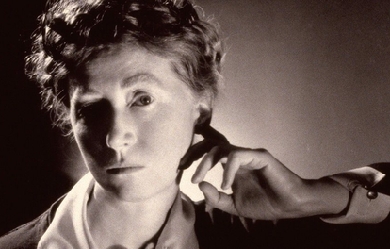
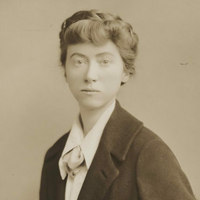
Born near St. Louis, Missouri, on November 15, 1887, Marianne Moore was raised in the home of her grandfather, a Presbyterian pastor. After her grandfather's death, in 1894, Moore and her family stayed with other relatives, and in 1896 they moved to Carlisle, Pennsylvania. She attended Bryn Mawr College and received her B.A. in 1909. Following graduation, Moore studied typing at Carlisle Commercial College, and from 1911 to 1915 she was employed as a school teacher at the Carlisle Indian School. In 1918, Moore and her mother moved to New York City, and in 1921, she became an assistant at the New York Public Library. She began to meet other poets, such as William Carlos Williams and Wallace Stevens, and to contribute to the Dial, a prestigious literary magazine. She served as acting editor of the Dial from 1925 to 1929. Along with the work of such other members of the Imagist movement as Ezra Pound, Williams, and H. D., Moore's poems were published in the Egoist, an English magazine, beginning in 1915. In 1921, H.D. published Moore's first book, Poems, without her knowledge. Moore was widely recognized for her work; among her many honors were the Bollingen prize, the National Book Award, and the Pulitzer Prize. She wrote with the freedom characteristic of the other modernist poets, often incorporating quotes from other sources into the text, yet her use of language was always extraordinarily condensed and precise, capable of suggesting a variety of ideas and associations within a single, compact image. In his 1925 essay "Marianne Moore," William Carlos Williams wrote about Moore's signature mode, the vastness of the particular: "So that in looking at some apparently small object, one feels the swirl of great events." She was particularly fond of animals, and much of her imagery is drawn from the natural world. She was also a great fan of professional baseball and an admirer of Muhammed Ali, for whom she wrote the liner notes to his record, I Am the Greatest! Deeply attached to her mother, she lived with her until Mrs. Moore's death in 1947. Marianne Moore died in New York City in 1972. Poetry Collected Poems (1951) Like a Bulwark (1956) Nevertheless (1944) O to Be a Dragon (1959) Observations (1924) Poems (1921) Selected Poems (1935) Tell Me, Tell Me (1966) The Arctic Fox (1964) The Complete Poems of Marianne Moore (1967) The Pangolin and Other Verse (1936) What Are Years? (1941) Prose A Marianne Moore Reader (1961) Predilections (1955) The Complete Prose of Marianne Moore (1987)
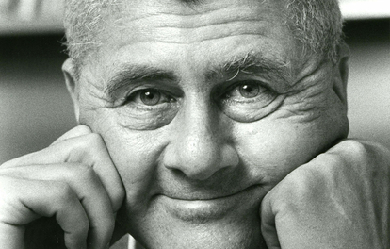
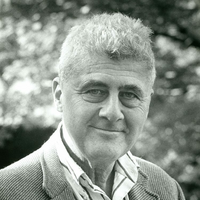
Howard Nemerov (February 29, 1920– July 5, 1991) was an American poet. He was twice Poet Laureate Consultant in Poetry to the Library of Congress, from 1963 to 1964 and again from 1988 to 1990. For The Collected Poems of Howard Nemerov (1977), he won the National Book Award for Poetry, Pulitzer Prize for Poetry, and Bollingen Prize. Nemerov was brother to photographer Diane Nemerov Arbus and father to art historian Alexander Nemerov, Professor of the History of Art and American Studies at Stanford University.
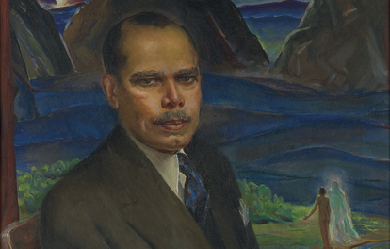
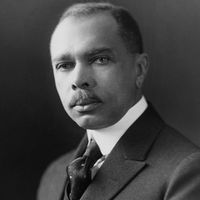
James Weldon Johnson (June 17, 1871– June 26, 1938) was an American author, educator, lawyer, diplomat, songwriter, and civil rights activist. Johnson is best remembered for his leadership of the National Association for the Advancement of Colored People (NAACP), where he started working in 1917. In 1920 he was the first African American to be chosen as executive secretary of the organization, effectively the operating officer. He served in that position from 1920 to 1930. Johnson established his reputation as a writer, and was known during the Harlem Renaissance for his poems, novels, and anthologies collecting both poems and spirituals of black culture. He was appointed under President Theodore Roosevelt as US consul in Venezuela and Nicaragua for most of the period from 1906 to 1913. In 1934 he was the first African-American professor to be hired at New York University. Later in life he was a professor of creative literature and writing at Fisk University.

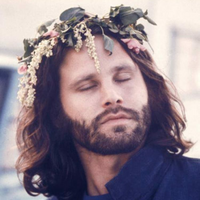
James Douglas “Jim” Morrison (December 8, 1943– July 3, 1971) was an American singer, songwriter, and poet, best remembered as the lead singer of The Doors. As a result of his lyrics, wild personality, performances, and the dramatic circumstances surrounding his life and death, Morrison is regarded by critics and fans as one of the most iconic and influential frontmen in rock music history. In the later part of the 20th century, his fame endured as one of the popular culture’s most rebellious and oft-displayed icons, representing the generation gap and youth counterculture. He was also well known for improvising spoken word poetry passages while the band played live. Morrison was ranked number 47 on Rolling Stone’s list of the "100 Greatest Singers of All Time", and number 22 on Classic Rock magazine’s "50 Greatest Singers In Rock". Ray Manzarek, who co-founded the Doors with him, said Morrison “embodied hippie counterculture rebellion”. Morrison was sometimes referred to by other nicknames, such as “Lizard King” and “King of Orgasmic Rock”. Morrison developed an alcohol dependency during the 1960s, which at times affected his performances on stage. He died at the age of 27 in Paris, possibly from an accidental heroin overdose. As no autopsy was performed, the exact cause of Morrison’s death is still disputed. Morrison is interred at Père Lachaise Cemetery in eastern Paris. Early years James Douglas Morrison was born in Melbourne, Florida, the son of Clara Virginia (née Clarke) and Rear Admiral George Stephen Morrison, USN, who commanded US naval forces during the Gulf of Tonkin incident, which provided the pretext for the US invasion of South Vietnam in 1965. Morrison had a sister, Anne Robin, who was born in 1947 in Albuquerque, New Mexico; and a brother, Andrew Lee Morrison, who was born in 1948 in Los Altos, California. His ancestors were Scottish, Irish, and English. In 1947, Morrison, then four years old, allegedly witnessed a car accident in the desert, in which a family of Native Americans were injured and possibly killed. He referred to this incident in the Doors’ song “Peace Frog” on the 1970 album Morrison Hotel, as well as in the spoken word performances “Dawn’s Highway” and “Ghost Song” on the posthumous 1978 album An American Prayer. Morrison believed this incident to be the most formative event of his life, and made repeated references to it in the imagery in his songs, poems, and interviews. His family does not recall this incident happening in the way he told it. According to the Morrison biography No One Here Gets Out Alive, Morrison’s family did drive past a car accident on an Indian reservation when he was a child, and he was very upset by it. The book The Doors, written by the remaining members of the Doors, explains how different Morrison’s account of the incident was from that of his father. This book quotes his father as saying, "We went by several Indians. It did make an impression on him [the young James]. He always thought about that crying Indian." This is contrasted sharply with Morrison’s tale of “Indians scattered all over the highway, bleeding to death.” In the same book, his sister is quoted as saying, “He enjoyed telling that story and exaggerating it. He said he saw a dead Indian by the side of the road, and I don’t even know if that’s true.” Raised a military brat, Morrison’s family moved often. He spent part of his childhood in San Diego. He completed third grade at a Fairfax County Elementary School Fairfax County, Virginia. His father was stationed at NAS Kingsville in 1952, he attended Charles H. Flato Elementary School in Kingsville, Texas. He continued at St. John’s Methodist School in Albuquerque, New Mexico, and then Longfellow School Sixth Grade Graduation Program from San Diego, California. In 1957, Morrison attended Alameda High School in Alameda, California. He graduated from George Washington High School, now George Washington Middle School, in Alexandria, Virginia in June 1961. Cass Elliot also attended high school there, that same year. Morrison read widely and voraciously—being particularly inspired by the writings of philosophers and poets. He was influenced by Friedrich Nietzsche, whose views on aesthetics, morality, and the Apollonian and Dionysian duality would appear in his conversation, poetry and songs. He read Plutarch’s “Lives of the Noble Greeks and Romans”. He read the works of the French Symbolist poet Arthur Rimbaud, whose style would later influence the form of Morrison’s short prose poems. He was also influenced by William S. Burroughs, Jack Kerouac, Allen Ginsberg, Lawrence Ferlinghetti, Charles Baudelaire, Molière, Franz Kafka, Honoré de Balzac and Jean Cocteau, along with most of the French existentialist philosophers. His senior-year English teacher said, “Jim read as much and probably more than any student in class, but everything he read was so offbeat I had another teacher (who was going to the Library of Congress) check to see if the books Jim was reporting on actually existed. I suspected he was making them up, as they were English books on sixteenth– and seventeenth-century demonology. I’d never heard of them, but they existed, and I’m convinced from the paper he wrote that he read them, and the Library of Congress would’ve been the only source.” Morrison went to live with his paternal grandparents in Clearwater, Florida, where he attended classes at St. Petersburg College (then known as a junior college). In 1962, he transferred to Florida State University (FSU) in Tallahassee, where he appeared in a school recruitment film. While attending FSU, Morrison was arrested for a prank following a home football game. In January 1964, Morrison moved to Los Angeles to attend the University of California, Los Angeles (UCLA). Shortly thereafter on August 2, 1964, Morrison’s father, George Stephen Morrison, commanded a carrier division of the United States fleet during the Gulf of Tonkin Incident, which resulted in the United States’ rapid escalation of the Vietnam War. At UCLA, Morrison enrolled in Jack Hirschman’s class on Antonin Artaud in the Comparative Literature program within the UCLA English Department. Artaud’s brand of surrealist theatre had a profound impact on Morrison’s dark poetic sensibility of cinematic theatricality. Morrison completed his undergraduate degree at UCLA’s film school within the Theater Arts department of the College of Fine Arts in 1965. At the time of graduation ceremony, he went to Venice, and his diploma was mailed to his mother at Coronado. He made several short films while attending UCLA. First Love, the first of these films, made with Morrison’s classmate and roommate Max Schwartz, was released to the public when it appeared in a documentary about the film Obscura. During these years, while living in Venice Beach, he became friends with writers at the Los Angeles Free Press, for which he advocated until his death in 1971. He conducted a lengthy and in-depth interview with Bob Chorush and Andy Kent, both working for the Free Press at the time (approximately December 6–8, 1970), and was planning on visiting the headquarters of the busy newspaper shortly before leaving for Paris. The Doors In the summer of 1965, after graduating with a bachelor’s degree from the UCLA film school, Morrison led a bohemian lifestyle in Venice Beach. Living on the rooftop of a building inhabited by his old UCLA cinematography friend, Dennis Jakobs, he wrote the lyrics of many of the early songs the Doors would later perform live and record on albums, the most notable being “Moonlight Drive” and “Hello, I Love You”. According to Jakobs, he lived on canned beans and LSD for several months. Morrison and fellow UCLA student, Ray Manzarek, were the first two members of the Doors, forming the group during that summer. They had met months earlier as cinematography students. The now-legendary story claims that Manzarek was lying on the beach at Venice one day, where he accidentally encountered Morrison. He was impressed with Morrison’s poetic lyrics, claiming that they were “rock group” material. Subsequently, guitarist Robby Krieger and drummer John Densmore joined. Krieger auditioned at Densmore’s recommendation and was then added to the lineup. All three musicians shared a common interest in the Maharishi Mahesh Yogi’s meditation practices at the time, attending scheduled classes, but Morrison was not involved in this series of classes, claiming later that he “did not meditate.” The Doors took their name from the title of Aldous Huxley’s book The Doors of Perception (a reference to the unlocking of doors of perception through psychedelic drug use). Huxley’s own title was a quotation from William Blake’s The Marriage of Heaven and Hell, in which Blake wrote: “If the doors of perception were cleansed everything would appear to man as it is, infinite.” Although Morrison was known as the lyricist of the group, Krieger also made significant lyrical contributions, writing or co-writing some of the group’s biggest hits, including “Light My Fire”, “Love Me Two Times”, “Love Her Madly”, and “Touch Me”. On the other hand, Morrison, who didn’t write most songs using an instrument, would come up with vocal melodies for his own lyrics, with the other band members contributing chords and rhythm. Morrison did not play an instrument live (except for maracas and tambourine for most shows, and harmonica on a few occasions) or in the studio (excluding maracas, tambourine, handclaps, and whistling). However, he did play the grand piano on “Orange County Suite” and a Moog synthesizer on “Strange Days”. In June 1966, Morrison and the Doors were the opening act at the Whisky a Go Go in the last week of the residency of Van Morrison’s band Them. Van’s influence on Jim’s developing stage performance was later noted by John Densmore in his book Riders On The Storm: “Jim Morrison learned quickly from his near-namesake’s stagecraft, his apparent recklessness, his air of subdued menace, the way he would improvise poetry to a rock beat, even his habit of crouching down by the bass drum during instrumental breaks.” On the final night, the two Morrisons and their two bands jammed together on “Gloria”. In November 1966, Morrison and the Doors produced a promotional film for “Break on Through (To the Other Side)”, which was their first single release. The film featured the four members of the group playing the song on a darkened set with alternating views and close-ups of the performers while Morrison lip-synched the lyrics. Morrison and the Doors continued to make short music films, including “The Unknown Soldier”, “Moonlight Drive”, and “People Are Strange”. The Doors achieved national recognition after signing with Elektra Records in 1967. The single “Light My Fire” spent three weeks at number one on the Billboard Hot 100 chart in July/August 1967. This was a far cry from the Doors playing warm up for Simon and Garfunkel and playing at a high school as they did in Connecticut that same year. Later, the Doors appeared on The Ed Sullivan Show, a popular Sunday night variety series that had introduced the Beatles and Elvis Presley to the United States. Ed Sullivan requested two songs from the Doors for the show, “People Are Strange” and “Light My Fire”. Sullivan’s censors insisted that the Doors change the lyrics of the song “Light My Fire” from “Girl we couldn’t get much higher” to “Girl we couldn’t get much better” for the television viewers; this was reportedly due to what was perceived as a reference to drugs in the original lyrics. After giving assurances of compliance to the producer in the dressing room, the band agreed, “we’re not changing a word,” and proceeded to sing the song with the original lyrics. Sullivan was not happy and he refused to shake hands with Morrison or any other band member after their performance. Sullivan had a show producer tell the band that they would never appear on The Ed Sullivan Show again. Morrison reportedly said to the producer, in a defiant tone, “Hey man. We just 'did’ the Sullivan Show!” By the release of their second album, Strange Days, the Doors had become one of the most popular rock bands in the United States. Their blend of blues and dark psychedelic rock included a number of original songs and distinctive cover versions, such as their rendition of “Alabama Song”, from Bertolt Brecht and Kurt Weill’s opera, Rise and Fall of the City of Mahagonny. The band also performed a number of extended concept works, including the songs “The End”, “When the Music’s Over”, and “Celebration of the Lizard”. In 1966, photographer Joel Brodsky took a series of black-and-white photos of Morrison, in a photo shoot known as “The Young Lion” photo session. These photographs are considered among the most iconic images of Jim Morrison and are frequently used as covers for compilation albums, books, and other memorabilia of the Doors and Morrison. In late 1967 at an infamous concert in New Haven, Connecticut, he was arrested on stage, an incident that further added to his mystique and emphasized his rebellious image. In 1968, the Doors released their third studio album, Waiting for the Sun. The band performed on July 5 at the Hollywood Bowl, this performance became famous with the DVD: Live at the Hollywood Bowl. It’s also this year that the band played, for the first time, in Europe. Their fourth album, The Soft Parade, was released in 1969. It was the first album where the individual band members were given credit on the inner sleeve for the songs they had written. Previously, each song on their albums had been credited simply to “the Doors”. On September 6 and 7, 1968, the Doors played four performances at the Roundhouse, London, England with Jefferson Airplane which were filmed by Granada for a television documentary The Doors are Open directed by John Sheppard. Around this time, Morrison—who had long been a heavy drinker—started showing up for recording sessions visibly inebriated. He was also frequently late for live performances. By early 1969, the formerly svelte singer had gained weight, grown a beard and mustache, and had begun dressing more casually—abandoning the leather pants and concho belts for slacks, jeans and T-shirts. During a concert of March 1, 1969 at the Dinner Key Auditorium in Miami, Morrison attempted to spark a riot in the audience. He failed, but a warrant for his arrest was issued by the Dade County Police department three days later for indecent exposure. Consequently, many of the Doors’ scheduled concerts were canceled. In September 1970, Morrison was convicted of indecent exposure and profanity. Morrison, who attended the sentencing “in a wool jacket adorned with Indian designs”, silently listened as he was sentenced for six months in prison and had to pay a $500 fine. Morrison remained free on a $50,000 bond. At the sentencing, Judge Murray Goodman told Morrison that he was a “person graced with a talent” admired by many of his peers. In 2007 Florida Governor Charlie Crist suggested the possibility of a posthumous pardon for Morrison, which was announced as successful on December 9, 2010. Drummer John Densmore denied Morrison ever exposed himself on stage that night. Following The Soft Parade, the Doors released Morrison Hotel. After a lengthy break the group reconvened in October 1970 to record what would become their final album with Morrison, titled L.A. Woman. Shortly after the recording sessions for the album began, producer Paul A. Rothchild—who had overseen all of their previous recordings—left the project. Engineer Bruce Botnick took over as producer. Poetry and film Morrison began writing in earnest during his adolescence. At UCLA he studied the related fields of theater, film, and cinematography. He self-published two separate volumes of his poetry in 1969, titled The Lords / Notes on Vision and The New Creatures. The Lords consists primarily of brief descriptions of places, people, events and Morrison’s thoughts on cinema. The New Creatures verses are more poetic in structure, feel and appearance. These two books were later combined into a single volume titled The Lords and The New Creatures. These were the only writings published during Morrison’s lifetime. Morrison befriended Beat poet Michael McClure, who wrote the afterword for Danny Sugerman’s biography of Morrison, No One Here Gets Out Alive. McClure and Morrison reportedly collaborated on a number of unmade film projects, including a film version of McClure’s infamous play The Beard, in which Morrison would have played Billy the Kid. After his death, a further two volumes of Morrison’s poetry were published. The contents of the books were selected and arranged by Morrison’s friend, photographer Frank Lisciandro, and girlfriend Pamela Courson’s parents, who owned the rights to his poetry. The Lost Writings of Jim Morrison Volume I is titled Wilderness, and, upon its release in 1988, became an instant New York Times Bestseller. Volume II, The American Night, released in 1990, was also a success. Morrison recorded his own poetry in a professional sound studio on two separate occasions. The first was in March 1969 in Los Angeles and the second was on December 8, 1970. The latter recording session was attended by Morrison’s personal friends and included a variety of sketch pieces. Some of the segments from the 1969 session were issued on the bootleg album The Lost Paris Tapes and were later used as part of the Doors’ An American Prayer album, released in 1978. The album reached No. 54 on the music charts. Some poetry recorded from the December 1970 session remains unreleased to this day and is in the possession of the Courson family. Morrison’s best-known but seldom seen cinematic endeavor is HWY: An American Pastoral, a project he started in 1969. Morrison financed the venture and formed his own production company in order to maintain complete control of the project. Paul Ferrara, Frank Lisciandro and Babe Hill assisted with the project. Morrison played the main character, a hitchhiker turned killer/car thief. Morrison asked his friend, composer/pianist Fred Myrow, to select the soundtrack for the film. Personal life Morrison’s family Morrison’s early life was the semi-nomadic existence typical of military families. Jerry Hopkins recorded Morrison’s brother, Andy, explaining that his parents had determined never to use physical corporal punishment such as spanking on their children. They instead instilled discipline and levied punishment by the military tradition known as dressing down. This consisted of yelling at and berating the children until they were reduced to tears and acknowledged their failings. Once Morrison graduated from UCLA, he broke off most contact with his family. By the time Morrison’s music ascended to the top of the charts (in 1967) he had not been in communication with his family for more than a year and falsely claimed that his parents and siblings were dead (or claiming, as it has been widely misreported, that he was an only child). This misinformation was published as part of the materials distributed with the Doors’ self-titled debut album. Admiral Morrison was not supportive of his son’s career choice in music. One day, an acquaintance brought over a record thought to have Jim on the cover. The record was the Doors’ self-titled debut. The young man played the record for Morrison’s father and family. Upon hearing the record, Morrison’s father wrote him a letter telling him “to give up any idea of singing or any connection with a music group because of what I consider to be a complete lack of talent in this direction.” In a letter to the Florida Probation and Parole Commission District Office dated October 2, 1970, Morrison’s father acknowledged the breakdown in family communications as the result of an argument over his assessment of his son’s musical talents. He said he could not blame his son for being reluctant to initiate contact and that he was proud of him nonetheless. Morrison spoke fondly of his Irish and Scottish ancestry and was inspired by Celtic mythology in his poetry and songs. Celtic Family Magazine revealed in their 2016 Spring Issue his Morrison clan was originally from the Isle of Lewis, Scotland, while his Irish side, the Clelland clan whom married into the Morrison line were from County Down, Ireland. Relationships Morrison’s first major love affair was with Mary Werbelow, whom he met on the beach in Florida. The relationship lasted several years inspiring many of the songs on the first two Doors albums including the 11-minute ballad “The End” which Ray Manzarek said was originally “a short goodbye love song to Mary” calling her “Jim’s first love”. Werbelow has remained out of view to rock historians with one exception, a 2005 interview in the St. Petersburg Times where she said Morrison spoke to her before a photo shoot for the Doors’ fourth album and told her the first three albums were about her. Morrison spent nearly the entirety of his adult life with a woman named Pamela Courson after meeting while both attended university. They met before he gained fame or fortune and she encouraged him to develop his poetry. At times, Courson used the surname “Morrison” with his apparent consent, or at least lack of concern. She was buried as Pamela Susan Morrison. After Courson’s death in 1974, and after her parents petitioned the court for inheritance of Morrison’s estate, the probate court in California decided that she and Morrison had once had what qualified as a common-law marriage, despite neither having applied for such status while they were living and common-law marriage not being recognized in California. Morrison’s will lists him as “an unmarried person” but listed Courson as the sole heir. They had previously obtained marriage licenses in Colorado in 1967 and in Los Angeles in 1968. The Doors’ keyboardist Ray Manzarek described Courson as Morrison’s “other half”. Morrison spoke to Courson through his lyrics and his poetry and dedicated his published poetry book The New Creatures to her. Songs like “Love Street”, “Queen of the Highway”, “Blue Sunday", and “Indian Summer” as well as many of his poems were said to be written about her. Morrison also reportedly regularly had sex with fans ("groupies") such as Pamela Des Barres and Josépha Karcz, who wrote a novel about their night together, and had numerous short flings with other musicians, as well as writers and photographers involved in the music business. They included Nico, the singer associated with the Velvet Underground, a one-night stand with singer Grace Slick of Jefferson Airplane, an on-again, off-again relationship with 16 Magazine’s Gloria Stavers as well as an alleged alcohol-fueled encounter with Janis Joplin. Nico also wanted to marry Morrison and they cut their thumbs in the desert with a knife and let their blood mingle. Nico said, “We exchanged blood. I carry his blood inside me.” David Crosby said many years later Morrison treated Joplin meanly at a party at the Calabasas, California, home of John Davidson while Davidson was out of town. She reportedly hit him over the head with a bottle of whiskey in retaliation during a fight in front of witnesses. In 1965, Judy Huddleston met Morrison and claimed she had a four-year on-and-off relationship with him that she chronicled in her book Love Him Madly: An Intimate Memoir of Jim Morrison and an out-of-print book called This is the End My Only Friend: Living & Dying with Jim Morrison, which was updated as Like He Was God. In 1970, Morrison participated in a Celtic Pagan handfasting ceremony with rock critic author Patricia Kennealy. The couple signed a document declaring themselves wed, but none of the necessary paperwork for a legal marriage was filed with the state. Kennealy discussed her experiences with Morrison in her autobiography Strange Days: My Life With and Without Jim Morrison. In an interview reported in the book Rock Wives, Kennealy reveals that she and Jim Morrison were wed, sort of, in a witch ceremony in 1970, but that he turned “really cold” when Kennealy became pregnant—maybe, she speculates, because he had "20 paternity suits pending against him." She was asked if Morrison took the ceremony seriously and she answered “probably not too seriously”. In July 1971, Janet Erwin documented in her journal having dated Morrison during the last few weeks before he traveled to Paris. She wrote the essay “Your Ballroom Days Are Over.” On a couple of their nights together there were strong aftershocks from the 1971 San Fernando earthquake; one aftershock measured 5.0 on the Richter magnitude scale. At the time of Morrison’s death there were at least three paternity actions pending against him, although no claims were made against his estate by any of the putative paternity claimants. One persistent claim of paternity came from Cliff Morrison. Pamela Des Barres later said in her autobiography I’m With The Band: Confessions of a Groupie that Morrison “turned out to be very much a one-woman man”, referring to his relationship with Pamela Courson. Death Morrison joined Courson in Paris in March 1971, at an apartment he had rented on the rue Beautreillis (in the 4th arrondissement of Paris on the Right Bank). In letters he described going for long walks through the city, alone. During this time, Morrison shaved his beard and lost some of the weight he had gained in the previous months. Morrison died on July 3, 1971 at age 27. In the official account of his death, he was found in a Paris apartment bathtub (at 17–19 rue Beautreillis, 4th arrondissement) by Courson. The official cause of death was listed as “heart failure”, although no autopsy was performed. The absence of an autopsy left many questions regarding the cause of Morrison’s death. In Wonderland Avenue, Danny Sugerman discussed his encounter with Courson after she returned to the United States. According to Sugerman’s account, Courson stated that Morrison had died of an accidental heroin overdose, having snorted what he believed to be cocaine. Sugerman added that Courson had given numerous contradictory versions of Morrison’s death, saying at times that she had killed Morrison, or that his death was her fault. Courson’s story of Morrison’s unintentional ingestion of heroin, resulting in an accidental overdose, is supported by the confession of Alain Ronay, who has written that Morrison died of a hemorrhage after snorting Courson’s heroin, and that Courson nodded off instead of phoning for medical help, leaving Morrison alone and bleeding to death. Ronay confessed in an article in Paris that he then helped cover up the circumstances of Morrison’s death, and that there was no autopsy– the normal procedure when a young person dies suddenly– due to the medical examiner being bribed. In the epilogue of No One Here Gets Out Alive, Hopkins and Sugerman write that Ronay and Agnès Varda say Courson lied to the police who responded to the death scene, and later in her deposition, telling them Morrison never took drugs. She also claimed that she was Morrison’s cousin. In the epilogue to No One Here Gets Out Alive, Hopkins says that 20 years after Morrison’s death, Ronay and Varda broke their silence and gave this account “they arrived at the house shortly after Morrison’s death and Courson said that she and Morrison had taken heroin after a night of drinking. Morrison had been coughing badly, had gone to take a bath, and vomited blood.” Courson said that he appeared to recover and that she then went to sleep. When she awoke sometime later Morrison was unresponsive, so she called local friends. Hopkins and Sugerman also claim that Morrison had asthma and was suffering from a respiratory condition involving a chronic cough and vomiting blood on the night of his death. This theory is partially supported in The Doors (written by the remaining members of the band) in which they claim Morrison had been coughing up blood for nearly two months in Paris, but none of the members of the Doors were in Paris with Morrison in the months prior to his death. No other friends have reported witnessing Morrison coughing. According to a Madame Colinette, who was at Père Lachaise Cemetery mourning the recent loss of her husband, she witnessed Morrison’s funeral. The ceremony was “pitiful,” with several of the attendants muttering a few words, throwing a few flowers over the casket, then leaving quickly and hastily within minutes as if their lives depended upon it. Those who attended included Alain Ronay, Agnès Varda, Bill Siddons (manager), Courson, and Robin Wertle (Morrison’s Canadian private secretary at the time for a few months). In the first version of No One Here Gets Out Alive, published in 1980, Sugerman and Hopkins gave some credence to the rumor that Morrison may not have died at all, calling the fake death theory “not as far-fetched as it might seem”. This theory led to considerable distress for Morrison’s loved ones over the years, notably when fans would stalk them, searching for evidence of Morrison’s whereabouts. No proof of any kind has ever been offered to substantiate Sugerman’s suggestion that Morrison was still alive. In 1995, a new epilogue was added to Sugerman’s and Hopkins’s book, giving new facts about Morrison’s death and discounting the fake death theory saying “As time passed, some of Jim and Pamela [Courson]'s friends began to talk about what they knew, and although everything they said pointed irrefutably to Jim’s demise, there remained and probably always will be those who refuse to believe that Jim is dead and those who will not allow him to rest in peace.” In 2007, Sam Bernett, a former manager of the Rock 'n’ Roll Circus nightclub, released a (French) book titled “The End: Jim Morrison”, alleging that Morrison overdosed on heroin in his nightclub. He claims that Morrison went to the club to buy heroin for Courson, used some himself and died in the bathroom, and that his body was then moved by Patrick Chauvel, who corroborates the move, along with two unidentified drug dealers, nicknamed ‘Le Chinois’ and ‘Le Petit Robert’ out the back of the Nightclub so as to prevent a scandal and then bundled into a taxi with the two dealers, which then drove to Morrison’s rue Beautrellis apartment. Apart from Chauvel, one of the other patrons at the club who state that they helped move Morrison was interviewed in the documentary Rock Poet: Jim Morrison (2010). According to Bernett, the heroin was ultimately supplied by the aristocrat Jean de Breiteuil. In 2014, Marianne Faithfull claimed that her boyfriend, de Breiteuil, received a late-night phone call and he alone rushed over to Morrison’s apartment on the day of his death. Near the end of an 1986 audio interview, with radio host Roger Steffens and Doors drummer John Densmore. Steffens recounts that he had been told two days after Morrison’s death, by a shaking Marianne Faithfull and her lover Jean de Breiteuil in Marrakesh of the details of Morrison’s demise, with both Faithfull and Breiteuil having been in Morrison’s apartment after his return from the nightclub and seeing him dead in the bathroom, a scene which motivated them to quickly flee the country, flying to Tangier the next day and then on to Marrakesh, where Steffens happened to be living in 1971. Faithfull would consistently decline to comment on this thereafter until 2014. Steffens remarked that he found it amazing how Faithfull had never publicly discussed the tragedy from 1971 up to the time of recording, 1986. As early as the 1990s, Cameron Watson, an American working as a DJ in Paris at that time, would give the account that while working in the Parisian nightclub La Bulle in July 1971, two “well dressed” drug dealers arrived in the early morning hours at the club and told him that Jim Morrison had just died, Watson then announced this to the few remaining patrons at the club, the first public announcement of his demise and which contributed to the growth of the local parisian rumors. Paris Journal After his death, a notebook of poetry written by Morrison was recovered entitled Paris Journal which amongst other personal details, contains the allegorical foretelling of a man who will be left grieving and having to abandon his belongings, due to a police investigation into a death connected to the Chinese opium trade. Weeping, he left his pad on orders from police & furnishings hauled away, all records & momentos, & reporters calculating tears & curses for the press: “I hope the Chinese junkies get you” & they will for the [opium] poppy rules the world. The concluding stanzas of this poem end with conveying a disappointment for someone who he had an intimate relationship with and a further invocation of Billy/the killer Hitchhiker, a common character in Morrison’s body of work. This is my poem for you, Great flowing funky flower’d beast, Great perfumed wreck of hell... Someone new in your knickers & who would that be? You know, You know more, than you let on... Tell them you came & saw & look’d into my eyes & saw the shadow of the guard receding, Thoughts in time & out of season The Hitchiker stood by the side of the road & levelled his thumb in the calm calculus of reason. In 2013 another of Morrison’s notebooks from Paris, found alongside the Paris Journal in the same box, known as the 127 Fascination box, sold for $250,000. at auction. This box of personal belongings similarly contained a home movie of Pamela Courson, the only film so far recovered, to be shot by Morrison. The box also housed a number of older notebooks and journals and may have potentially included the “Steno Pad” and falsely titled “The Lost Paris Tapes” if they had not been separated from the primary collection and sold by Philippe Dalecky with this promotional title. This tape was later determined by avid listeners to be largely of Jomo & The Smoothies recordings of Morrison, friends and producer Paul Rothchild loose jamming in Los Angeles well before 1971. Grave site Morrison was buried in Père Lachaise Cemetery in Paris, one of the city’s most visited tourist attractions. The grave had no official marker until French officials placed a shield over it, which was stolen in 1973. The grave was listed in the cemetery directory with Morrison’s name incorrectly rearranged as “Douglas James Morrison.” In 1981, Croatian sculptor Mladen Mikulin voluntarily placed a bust of his own design and a new gravestone with Morrison’s name at the grave to commemorate the 10th anniversary of his death; the bust was defaced through the years by cemetery vandals and later stolen in 1988. Mikulin made another bust of Morrison in 1989, and a bronze portrait of him in 2001; neither piece is at the gravesite. In the early 1990s, Morrison’s father, George Stephen Morrison, after consulting with E. Nicholas Genovese, professor of classics and humanities, San Diego State University, placed a flat stone on the grave. The bronze plaque thereon bears the Greek inscription: ΚΑΤΑ ΤΟΝ ΔΑΙΜΟΝΑ ΕΑΥΤΟΥ, literally meaning “according to his own daemon, i.e., guiding spirit,” to convey the sentiment “True to Himself.” Artistic influences As a naval family the Morrisons relocated frequently. Consequently, Morrison’s early education was routinely disrupted as he moved from school to school. Nonetheless he was drawn to the study of literature, poetry, religion, philosophy and psychology, among other fields. Biographers have consistently pointed to a number of writers and philosophers who influenced Morrison’s thinking and, perhaps, his behavior. While still in his teens Morrison discovered the work of philosopher Friedrich Nietzsche. He was also drawn to the poetry of William Blake, Charles Baudelaire and Arthur Rimbaud. Beat Generation writers such as Jack Kerouac also had a strong influence on Morrison’s outlook and manner of expression; Morrison was eager to experience the life described in Kerouac’s On the Road. He was similarly drawn to the work of French writer Louis-Ferdinand Céline. Céline’s book, Voyage au Bout de la Nuit (Journey to the End of the Night) and Blake’s Auguries of Innocence both echo through one of Morrison’s early songs, “End of the Night”. Morrison later met and befriended Michael McClure, a well known beat poet. McClure had enjoyed Morrison’s lyrics but was even more impressed by his poetry and encouraged him to further develop his craft. Morrison’s vision of performance was colored by the works of 20th-century French playwright Antonin Artaud (author of Theater and its Double) and by Julian Beck’s Living Theater. Other works relating to religion, mysticism, ancient myth and symbolism were of lasting interest, particularly Joseph Campbell’s The Hero with a Thousand Faces. James Frazer’s The Golden Bough also became a source of inspiration and is reflected in the title and lyrics of the song “Not to Touch the Earth”. Morrison was particularly attracted to the myths and religions of Native American cultures. While he was still in school, his family moved to New Mexico where he got to see some of the places and artifacts important to the American Southwest Indigenous cultures. These interests appear to be the source of many references to creatures and places such as lizards, snakes, deserts and “ancient lakes” that appear in his songs and poetry. His interpretation and imagination of the practices of Native American ceremonial people (which, based on his readings, he referred to by the anthropological but inaccurate term “shamans”) influenced his stage routine, notably in seeking trance states and vision through dancing to the point of exhaustion. In particular, Morrison’s poem “The Ghost Song” was inspired by his readings about the Native American Ghost Dance. Jim Morrison’s vocal influences included Elvis Presley and Frank Sinatra, which is evident in his own baritone crooning style used in several of the Doors’ songs and in the 1981 documentary The Doors: A Tribute to Jim Morrison, producer Paul Rothchild refers his first impression of Morrison as being a “Rock and Roll Bing Crosby”. It is mentioned within the pages of No One Here Gets Out Alive by Danny Sugerman, that Morrison as a teenager was such a fan of Presley’s music that he demanded people be quiet when Elvis was on the radio. The Frank Sinatra influence is mentioned in the pages of The Doors, The Illustrated History also by Sugerman, where Frank Sinatra is listed on Morrison’s Band Bio as being his favorite singer. Reference to this can also be found in a Rolling Stone article about Jim Morrison, regarding the Top 100 rock singers of all time. Legacy Musical Morrison was, and continues to be, one of the most popular and influential singer-songwriters and iconic front men in rock history. To this day Morrison is widely regarded as the prototypical rock-star: surly, sexy, scandalous, and mysterious. The leather pants he was fond of wearing both onstage and off have since become stereotyped as rock-star apparel. In 2011, a Rolling Stone readers’ pick placed Jim Morrison in fifth place of the magazine’s “Best Lead Singers of All Time”. Iggy and the Stooges are said to have formed after lead singer Iggy Pop was inspired by Morrison while attending a Doors concert in Ann Arbor, Michigan. One of Pop’s most popular songs, “The Passenger”, is said to be based on one of Morrison’s poems. After Morrison’s death, Pop was considered as a replacement lead singer for the Doors; the surviving Doors gave him some of Morrison’s belongings and hired him as a vocalist for a series of shows. Wallace Fowlie, professor emeritus of French literature at Duke University, wrote Rimbaud and Jim Morrison, subtitled “The Rebel as Poet– A Memoir”. In this he recounts his surprise at receiving a fan letter from Morrison who, in 1968, thanked him for his latest translation of Arthur Rimbaud’s verse into English. “I don’t read French easily”, he wrote, “...your book travels around with me.” Fowlie went on to give lectures on numerous campuses comparing the lives, philosophies and poetry of Morrison and Rimbaud. The book The Doors by the remaining Doors quotes Morrison’s close friend Frank Lisciandro as saying that too many people took a remark of Morrison’s that he was interested in revolt, disorder, and chaos “to mean that he was an anarchist, a revolutionary, or, worse yet, a nihilist. Hardly anyone noticed that Jim was paraphrasing Rimbaud and the Surrealist poets.” Layne Staley, the vocalist of Alice in Chains, Eddie Vedder, the vocalist of Pearl Jam, Scott Weiland, the vocalist of Stone Temple Pilots and Velvet Revolver, Julian Casablancas of the Strokes, James LaBrie of Dream Theater, as well as Scott Stapp of Creed and Ville Valo of H.I.M., have all said that Morrison was their biggest influence and inspiration. Stone Temple Pilots and Velvet Revolver have both covered “Roadhouse Blues” by the Doors. Weiland also filled in for Morrison to perform “Break On Through (To The Other Side)” with the rest of the Doors. Stapp filled in for Morrison for “Light My Fire”, “Riders on the Storm” and “Roadhouse Blues” on VH1 Storytellers. Creed performed their version of “Roadhouse Blues” with Robby Krieger for the 1999 Woodstock Festival. Morrison’s recital of his poem “Bird Of Prey” can be heard throughout the song “Sunset” by Fatboy Slim. Rock band Bon Jovi featured Morrison’s grave in their “I’ll Sleep When I’m Dead” video clip. The band Radiohead mentions Jim Morrison in their song “Anyone Can Play Guitar”, stating “I wanna be wanna be wanna be Jim Morrison”. Alice Cooper in the liner notes of the album Killer stated that the song “Desperado” is about Jim Morrison. The leather pants of U2's Bono’s “The Fly” persona for the Achtung Baby era and subsequent Zoo TV Tour is attributed to Jim Morrison. On their 2008 album The Hawk Is Howling In 2012 electronic music producer Skrillex released “Breakn’ a Sweat” which contained vocals from an interview with Jim Morrison. In popular culture In June 2013, a new fossil analysis revealed a lizard, one of the largest ever known that lived on Myanmar, was given the moniker Barbaturex morrisoni in honor of Morrison. “This is a king lizard, and he was the lizard king, so it just fit,” said Jason Head, a paleontologist at the University of Nebraska-Lincoln. The animated television show The Simpsons has made numerous references to Morrison, including Krusty the Klown singing Break On Through ("I Love Lisa", Season 4); Otto Mann telling Homer that “me and the admiral do not get along” (a reference to Morrison and his estranged father, Rear Admiral George Stephen Morrison ("The Otto Show", Season 3)); mention of Morrison’s grave ("The Devil Wears Nada", Season 21). Another reference, “I am the lizard queen!” Is bellowed by Lisa Simpson at the end of her encounter with psychedelic theme-ride river water at Duff Gardens ("Selma’s Choice", Season 4). In another episode, Morrison himself was visually depicted in the form of a hallucination had by Homer Simpson when he was forming a rock band ("Covercraft", Season 26) In Stephen King’s The Stand, Stu Redman tells a friend about his encounter with Jim Morrison long after Morrison’s supposed death, late at night at a lonely Texas gas station in the 1980s. Discography Books By Morrison * The Lords and the New Creatures (1969). 1985 edition: ISBN 0-7119-0552-5 * An American Prayer (1970) privately printed by Western Lithographers. (Unauthorized edition also published in 1983, Zeppelin Publishing Company, ISBN 0-915628-46-5. The authenticity of the unauthorized edition has been disputed.) * Arden lointain, edition bilingue (1988), trad. de l’américain et présenté par Sabine Prudent et Werner Reimann. [Paris]: C. Bourgois. 157 p. N.B.: Original texts in English, with French translations, on facing pages. ISBN 2-267-00560-3 * Wilderness: The Lost Writings Of Jim Morrison (1988). 1990 edition: ISBN 0-14-011910-8 * The American Night: The Writings of Jim Morrison (1990). 1991 edition: ISBN 0-670-83772-5 About Morrison * Linda Ashcroft, Wild Child: Life with Jim Morrison, (1997) ISBN 1-56025-249-9 * Lester Bangs, “Jim Morrison: Bozo Dionysus a Decade Later” in Main Lines, Blood Feasts, and Bad Taste: A Lester Bangs Reader, John Morthland, ed. Anchor Press (2003) ISBN 0-375-71367-0 * Stephen Davis, Jim Morrison: Life, Death, Legend, (2004) ISBN 1-59240-064-7 * John Densmore, Riders on the Storm: My Life With Jim Morrison and the Doors (1991) ISBN 0-385-30447-1 * Dave DiMartino, Moonlight Drive (1995) ISBN 1-886894-21-3 * Steven Erkel, "The Poet Behind the Doors: Jim Morrison’s Poetry and the 1960s Countercultural Movement" (2011) * Wallace Fowlie, Rimbaud and Jim Morrison (1994) ISBN 0-8223-1442-8 * Jerry Hopkins, The Lizard King: The Essential Jim Morrison (1995) ISBN 0-684-81866-3 * Jerry Hopkins and Danny Sugerman, No One Here Gets Out Alive (1980) ISBN 0-85965-138-X * Mike Jahn, “Jim Morrison and the Doors” (1969)Library of Congress Catalog Card Number 71-84745 * Dylan Jones, Jim Morrison: Dark Star, (1990) ISBN 0-7475-0951-4 * Patricia Kennealy, Strange Days: My Life With and Without Jim Morrison (1992) ISBN 0-525-93419-7 * Gerry Kirstein, “Some Are Born to Endless Night: Jim Morrison, Visions of Apocalypse and Transcendence” (2012) ISBN 1451558066 * Frank Lisciandro, Morrison: A Feast of Friends (1991) ISBN 0-446-39276-6, Morrison—Un festin entre amis (1996) (French) * Frank Lisciandro, Jim Morrison: An Hour For Magic (A Photojournal) (1982) ISBN 0-85965-246-7, James Douglas Morrison (2005) (French) * Ray Manzarek, Light My Fire (1998) ISBN 0-446-60228-0. First by Jerry Hopkins and Danny Sugerman (1981) * Peter Jan Margry, The Pilgrimage to Jim Morrison’s Grave at Père Lachaise Cemetery: The Social Construction of Sacred Space. In idem (ed.), Shrines and Pilgrimage in the Modern World. New Itineraries into the Sacred. Amsterdam University Press, 2008, p. 145–173. * Thanasis Michos, The Poetry of James Douglas Morrison (2001) ISBN 960-7748-23-9 (Greek) * Daveth Milton, We Want The World: Jim Morrison, The Living Theatre, and the FBI, (2012) ISBN 978-0957051188 * Mark Opsasnick, The Lizard King Was Here: The Life and Times of Jim Morrison in Alexandria, Virginia (2006) ISBN 1-4257-1330-0 * James Riordan & Jerry Prochnicky, Break on through: The Life and Death of Jim Morrison (1991) ISBN 0-688-11915-8 * Adriana Rubio, Jim Morrison: Ceremony... Exploring the Shaman Possession (2005) ISBN * Howard Sounes. 27: A History of the 27 Club Through the Lives of Brian Jones, Jimi Hendrix, Janis Joplin, Jim Morrison, Kurt Cobain, and Amy Winehouse, Boston: Da Capo Press, 2013. ISBN 0-306-82168-0. * The Doors (remaining members Ray Manzarek, Robby Krieger, John Densmore) with Ben Fong-Torres, The Doors (2006) ISBN 1-4013-0303-X * Mick Wall, “Love Becomes a Funeral Pyre: A Biography of the Doors”, (2014) Films Films by Morrison * HWY: An American Pastoral Documentaries featuring Morrison Films about The Doors * The Doors (1991), A film by director Oliver Stone, starring Val Kilmer as Morrison and with cameos by Krieger and Densmore. Kilmer’s performance was praised by some critics. Ray Manzarek, The Doors’ keyboardist, harshly criticized Stone’s portrayal of Morrison, and noted that numerous events depicted in the movie were pure fiction. David Crosby on an album by CPR wrote and recorded a song about the movie with the lyric: “And I have seen that movie– and it wasn’t like that.” References Wikipedia—https://en.wikipedia.org/wiki/Jim_Morrison
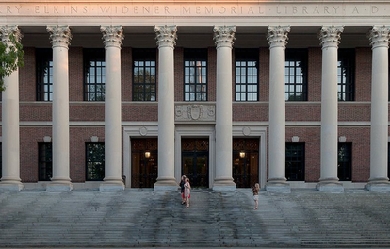
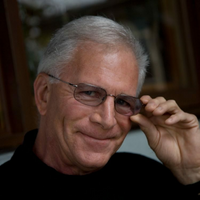
Michael Palmer (born May 11, 1943) is an American poet and translator. He attended Harvard University where he earned a BA in French and an MA in Comparative Literature. He has worked extensively with Contemporary dance for over thirty years and has collaborated with many composers and visual artists. Palmer has lived in San Francisco since 1969. Palmer is the 2006 recipient of the Wallace Stevens Award from the Academy of American Poets. This $100,000 (US) prize recognizes outstanding and proven mastery in the art of poetry. Beginnings Michael Palmer began actively publishing poetry in the 1960s. Two events in the early sixties would prove particularly decisive for his development as a poet. First, he attended the now famous Vancouver Poetry Conference in 1963. This July–August 1963 Poetry Conference in Vancouver, British Columbia spanned three weeks and involved about sixty people who had registered for a program of discussions, workshops, lectures, and readings designed by Warren Tallman and Robert Creeley as a summer course at the University of B.C. There Palmer met writers and artists who would leave an indelible mark on his own developing sense of a poetics, especially Robert Duncan, Robert Creeley, and Clark Coolidge, with whom he formed lifelong friendships. It was a landmark moment as Robert Creeley observed: Vancouver Poetry Conference brought together for the first time, a decisive company of then disregarded poets such as Denise Levertov, Charles Olson, Allen Ginsberg, Robert Duncan, Margaret Avison, Philip Whalen... together with as yet unrecognised younger poets of that time, Michael Palmer, Clark Coolidge and many more.” Palmer’s second initiation into the rites of a public poet began with the editing of the journal Joglars with fellow poet Clark Coolidge. Joglars (Providence, Rhode Island) numbered just three issues in all, published between 1964–66, but extended the correspondence with fellow poets begun in Vancouver. The first issue appeared in Spring 1964 and included poems by Gary Snyder, Michael McClure, Fielding Dawson, Jonathan Williams, Lorine Niedecker, Robert Kelly, and Louis Zukofsky. Palmer published five of his own poems in the second number of Joglars, an issue that included work by Larry Eigner, Stan Brakhage, Russell Edson, and Jackson Mac Low. For those who attended the Vancouver Conference or learned about it later on, it was apparent that the poetics of Charles Olson, proprioceptive or Projectivist in its reach, was exerting a significant and lasting influence on the emerging generation of artists and poets who came to prominence in the 1950s and 1960s. Subsequent to this emerging generation of artists who felt Olson’s impact, poets such as Robert Creeley and Robert Duncan would in turn exert their own huge impact on our national poetries (see also: Black Mountain poets and San Francisco Renaissance). Of this particular company of poets encountered in Vancouver, Palmer says: ...before meeting that group of poets in 1963 at the Vancouver Poetry Conference, I had begun to read them intensely, and they proposed alternatives to the poets I was encountering at that time at Harvard, the confessional poets, whose work was grounded to a greater or lesser degree in New Criticism, at least those were their mentors. The confessional poets struck me as people absolutely lusting for fame, all of them, and they were all trying to write great lines. Early development of poetry and poetics Following the Vancouver Conference, Robert Duncan and Robert Creeley remained primary resources. Both poets had a lasting, active influence on Palmer’s work which has extended until the present. In an essay, “Robert Duncan and Romantic Synthesis” (see 'External links’ below), Palmer recognizes that Duncan’s appropriation and synthesis of previous poetic influences was transformed into a poetics noted for “exploratory audacity... the manipulation of complex, resistant harmonies, and by the kinetic idea of ”composition by field", whereby all elements of the poem are potentially equally active in the composition as 'events’ of the poem". And if this statement marks a certain tendency readers have noted in Palmer’s work all along, or remains a touchstone of sorts, we sense that from the beginning Palmer has consistently confronted not only the problem of subjectivity and public address in poetry, but the specific agency of Poetry and the relationship between poetry and the political: "The implicit... question has always concerned the human and social justification for this strange thing, poetry, when it is not directly driven by the political or by some other, equally other evident purpose [...] Whereas the significant artistic thrust has always been toward artistic independence within the world, not from it.” So for Michael Palmer, this tendency seems there from the beginning. Today these concerns continue through multiple collaborations across the fields of poetry, dance, translation, and the visual arts. Perhaps similar to Olson’s impact on his generation, Palmer’s influence remains singular and palpable, if difficult to measure. Since Olson’s death in 1970, we continue to be, following upon George Oppen’s phrase, carried into the incalculable, As Palmer recently noted in a blurb for Claudia Rankine’s poetic testament Don’t Let Me Be Lonely (2004), ours is “a time when even death and the self have been re-configured as commodities”. Work Palmer is the author of twelve full-length books of poetry, including Thread (2011), Company of Moths (2005) (shortlisted for the 2006 Canadian Griffin Poetry Prize), Codes Appearing: Poems 1979-1988 (2001), The Promises of Glass (2000), The Lion Bridge: Selected Poems 1972-1995 (1998), At Passages (1996), Sun (1988), First Figure (1984), Notes for Echo Lake (1981), Without Music (1977), The Circular Gates (1974), and Blake’s Newton (1972). A prose work, The Danish Notebook, was published in 1999. In the spring of 2007, a chapbook, The Counter-Sky (with translations by Koichiro Yamauchi), was published by Meltemia Press of Japan, to coincide with the Tokyo Poetry and Dance Festival. His work has appeared in literary magazines such as Boundary 2, Berkeley Poetry Review, Sulfur, Conjunctions, Grand Street and O-blek. Besides the 2006 Wallace Stevens Award, Michael Palmer’s honors include two grants from the Literature Program of the National Endowment for the Arts. In 1989-90 he was a Guggenheim Fellow. During the years 1992–1994 he held a Lila Wallace-Reader’s Digest Fund Writer’s Award. From 1999 to 2004, he served as a Chancellor of the Academy of American Poets. In the spring of 2001 he received the Shelly Memorial Prize Prize from the Poetry Society of America. Introducing Palmer for a reading at the DIA Arts Center in 1996, Brighde Mullins noted that Palmer’s poetics is both “situated yet active”. Palmer alludes to this himself, perhaps, when he speaks of poetry signaling a “site of passages”. He says, “The space of the page is taken as a site in itself, a syntactical and visual space to be expressively exploited, as was the case with the Black Mountain poets, as well as writers such as Frank O’Hara, perhaps partly in response to gestural abstract painting.” Elsewhere he observes that “in our reading we have to rediscover the radical nature of the poem.” In turn, this becomes a search for “the essential place of lyric poetry” as it delves “beneath it to its relationship with language”. Since he seems to explore the nature of language and its relation to human consciousness and perception, Palmer is often associated with the Language poets (sometimes referred to as the L=A=N=G=U=A=G=E poets, after the magazine that bears that name). Of this particular association, Palmer comments in a recent (2000) interview: It goes back to an organic period when I had a closer association with some of those writers than I do now, when we were a generation in San Francisco with lots of poetic and theoretical energy and desperately trying to escape from the assumptions of poetic production that were largely dominant in our culture. My own hesitancy comes when you try to create, let’s say, a fixed theoretical matrix and begin to work from an ideology of prohibitions about expressivity and the self—there I depart quite dramatically from a few of the Language Poets. Critical reception Michael Palmer’s poetry has received both praise and criticism over the years. Some reviewers call it abstract. Some call it intimate. Some call it allusive. Some call it personal. Some call it political. And some call it inaccessible. While some reviewers or readers may value Palmer’s work as an “extension of modernism”, they criticize and even reject Palmer’s work as discordant: an interruption of our composure (to invoke Robert Duncan’s phrase). Palmer’s own stated poetics will not allow or settle for “vanguard gesturalism”. In a singular confrontion with the modernist project, the poet must suffer 'loss’, embrace disturbance and paradox, and agonize over what cannot be accounted for. It is a poetry that can, at once, gesture toward post-modern, post-avant-garde, semiotic concerns even as it acknowledges that ...the artist after Dante’s poetics, works with all parts of the poem as polysemous, taking each thing of the composition as generative of meaning, a response to and a contribution to the building form.[...]But this putting together and rendering anew operates in our own apprehension of emerging articulations of time. Every particular is an immediate happening of meaning at large; every present activity in the poem redistributes future as well as past events. This is a presence extended in a time we create as we keep words in mind.” We can recognize that the “weary beauty” of Palmer’s work bespeaks the tension and accord he offers toward the Modernists and the vanguardists, even as he is seeking to maintain or at least continue to search for an ethics of the I/Thou. It is an awkward truce we make with modernism when there is no cessation of hostilities. But sometimes in reading Palmer’s work we recognize (almost against ourselves) a poetry that is described as surreal in context and contour, livid in aural accomplishment, but all the while confronts the reader with a poetics both active and situated. And if Palmer is sometimes praised for this, more often than not he is criticized, rebuked, vilified and dismissed (just as Paul Celan was) for hermeticism, deliberate obscurity, and bogus erudition. Palmer admits to a stated “essential errancy of discovery in the poem” that would not necessarily be a “unified narrative explanation of the self”, but would allow for itself “cloaked meaning and necessary semantic indirection” Confrontation with Modernism He remains candid about the giants of modernism: i.e., Yeats, Eliot and Pound. Whether it is the fascism of Ezra Pound or the less overt but no less insidious anti-semitism found in the work of T. S. Eliot, Palmer’s position is a fierce rejection of their politics, but qualified with the acknowledgment that, as Marjorie Perloff has observed of Pound, “he remains the great inventor of the period, the poet who really MADE THINGS NEW”. Thus, Palmer decries that what remains for us is something quite harrowing “inscribed at the heart of modernism”. Perhaps we can invoke one of Palmer’s real 'heroes’, Antonio Gramsci, and say here, now, what precisely has been inscribed over against what today (in the vicious circles of media and cultural production) is merely forecast as cultural hegemony. So if Palmer, on the one hand, variously describes or defines an Ideology as that which “invades the field of meaning”, we recognize not only in Pound or Eliot, but now as if against ourselves, that ideology implicitly deploys values and premises that must remain unspoken in order for them to function as ideology or to remain hidden in plain sight, as such. At some point we can invoke the 'post-ideological’ stance of Slavoj Žižek who, after Althusser, jettisons the Marxist equation: ideology=false consciousness and say that, perhaps Ideology, to all intents and purposes, IS consciousness. As a way out of this seeming double-bind, or to his admissions that poetry is, as Pound observed, “news that stays news”, that it remains an active and viable (or “actively situated”) principle within the social dynamic, critics and readers alike point to Palmer’s own avowals of an emerging countertradition to the prevailing literary establishment: an 'alternative tradition’ that just slipped under the radar as far as the Academy and its various 'schools’ of poetry are concerned. Though not always so visible, this counter-tradition continues to exert an underground influence. Poetry, as critique or praise, can perhaps in its reach exceed the grasp of modernism and procure for us as visible again, that which is all or nothing except for the 'ghostlier demarcations’ of the social wager within sight of the shipwreck of the singular (as George Oppen characterized it) which denotes or delimits the very idea of the social, if not the very idea that there is a definition of the social other than this: the community of those who have no community. Indeed, the unavowable community (to borrow a title and phrasing from Maurice Blanchot). Faced with shipwreck, “in the dark” amidst the ravished heresies of the unspoken as even against silence itself, we can think with the poem. With fierce determination or graceful adherence we can perhaps even “see” with the poem, account for its usefulness. Even as we use the language, attend to its fissures and abhorrences, language in turn uses us, or has its own uses for us, as Palmer attests: Palmer has repeatedly stated, in interviews and in various talks given across the years, that the situation for the poet is paradoxical: a seeing which is blind, a “nothing you can see”, an “active waiting”, “purposive, sometimes a music”, or a “nowhere” that is "now / here". For Palmer, it is a situation which is never over, and yet it mysteriously starts up again each day, as if describing a circle. Poetry can “interrogate the radical and violent instability of our moment, asking where is the location of culture, where the site of self, selves, among others” (as Palmer has characterized the poetry of Myung Mi Kim). Collaborations Palmer has published translations from French, Russian and Brazilian Portuguese, and has engaged in multiple collaborations with painters. These include the German painter Gerhard Richter, French painter Micaëla Henich, and Italian painter Sandro Chia. He edited and helped translate Nothing The Sun Could Not Explain: Twenty Contemporary Brazilian Poets (Sun & Moon Press, 1997). With Michael Molnar and John High, Palmer helped edit and translate a volume of poetry by the Russian poet Alexei Parshchikov, Blue Vitriol (Avec Books, 1994). He also translated “Theory of Tables” (1994), a book written by Emmanuel Hocquard, a project that grew out of Hocquard’s translations of Palmer’s “Baudelaire Series” into French. Palmer has written many radio plays and works of criticism. But his lasting significance occurs as the singular concerns of the artist extend into the aleatory, the multiple, and the collaborative. Dance For more than thirty years he has collaborated on over a dozen dance works with Margaret Jenkins and her Dance Company. Early dance scenarios in which Palmer participated include Interferences, 1975; Equal Time, 1976; No One but Whitington, 1978; Red, Yellow, Blue, 1980, Straight Words, 1980; Versions by Turns, 1980; Cortland Set, 1982; and First Figure, 1984. A particularly noteworthy example of a recent Jenkins/Palmer collaboration would be The Gates (Far Away Near), an evening-length dance work in which Palmer worked with not only Ms. Jenkins, but also Paul Dresher and Rinde Eckert. This was performed in September 1993 in the San Francisco Bay Area and in July 1994 at New York’s Lincoln Center. Another recent collaboration with Jenkins resulted in “Danger Orange”, a 45-minute outdoor site-specific performance, presented in October 2004 before the Presidential elections. The color orange metaphorically references the national alert systems that are in place that evoke the sense of danger.[see also:Homeland Security Advisory System] Painters and visual artists Similar to his friendship with Robert Duncan and the painter Jess Collins, Palmer’s work with painter Irving Petlin remains generative. Irving’s singular influence from the beginning demonstrated for Palmer a “working” of the poet as “maker” (in the radical sense, even ancient sense of that word). Along with Duncan, Zukofsky, and others, Petlin’s work modeled, demonstrated, circumscribed and, perhaps most importantly for Palmer, verified that “the way” (this way for the artist who is a maker, a creator) would also be, as Gilles Deleuze termed it, “a life”. This in turn delineates Palmer’s own sense of both a poetics and an ongoing counter-poetic tradition, offering him fixture and a place of repair. Recently he worked with painter and visual artist Augusta Talbot, and curated her exhibition at the CUE Art Foundation (March 17 –April 23, 2005). When asked in an interview how collaboration has pushed the boundaries of his work, Palmer responded: There were a variety of influences. One was that, when I was using language—but even when I wasn’t, when I was simply envisioning a structure, for example—I was working with the idea of actual space. Over time, my own language took on a certain physicality or gestural character that it hadn’t had as strongly in the earliest work. Margy (Margaret Jenkins) and I would often work with language as gesture and gesture as language—we would cross these two media, have them join at some nexus. And inevitably then, as I brought certain characteristics of my work to dance, and to dance structure and gesture, it started crossing over into my work. It added space to the poems. It may be that for Palmer, friendship (acknowledging both the multiple and collaborative), becomes in part what Jack Spicer terms a “composition of the real”. Across the fields of painting and dance, Palmer’s work figures as an “unrelenting tentacle of the proprioceptive”. Furthermore, it may signal a Coming Community underscored in the work of Giorgio Agamben, Jean-Luc Nancy and Maurice Blanchot among others. It is a poetry that would, along with theirs, articulate a place for, even spaces where, both the “poetic imaginary” is constituted and a possible social space is envisioned. As Jean-Luc Nancy has written in The Inoperative Community (1991): “These places, spread out everywhere, yield up and orient new spaces... other tracks, other ways, other places for all who are there.” Bibliography Poetry * Plan of the City of O, Barn Dreams Press (Boston, Massachusetts), 1971. * Blake’s Newton, Black Sparrow Press (Santa Barbara, California), 1972. * C’s Songs, Sand Dollar Books (Berkeley, California), 1973. * Six Poems, Black Sparrow Press (Santa Barbara, California), 1973. * The Circular Gates, Black Sparrow Press (Santa Barbara, California), 1974. * (Translator, with Geoffrey Young) Vicente Huidobro, Relativity of Spring: 13 Poems, Sand Dollar Books (Berkeley, California), 1976. * Without Music, Black Sparrow Press (Santa Barbara, California), 1977. * Alogon, Tuumba Press (Berkeley, California), 1980. * Notes for Echo Lake, North Point Press (Berkeley, California), 1981. * (Translator) Alain Tanner and John Berger, Jonah Who Will Be 25 in the Year 2000, North Atlantic Books (Berkeley, California), 1983. * First Figure, North Point Press (Berkeley, California), 1984. * Sun, North Point Press (Berkeley, California), 1988. * At Passages, New Directions (New York, New York), 1995. * The Lion Bridge: Selected Poems, 1972-1995, New Directions (New York, New York), 1998. * The Promises of Glass, New Directions (New York, New York), 2000. * Codes Appearing: Poems, 1979-1988, New Directions (New York, New York), 2001. Notes for Echo Lake, First Figure, and Sun together in one volume. ISBN 978-0-8112-1470-4 * (With Régis Bonvicino) Cadenciando-um-ning, um samba, para o outro: poemas, traduções, diálogos, Atelieì Editorial (Cotia, Brazil), 2001. * Company of Moths, New Directions (New York, New York), 2005. ISBN 978-0-8112-1623-4 * Aygi Cycle, Druksel (Ghent, Belgium), 2009 (chapbook with 10 new poems, inspired by the Russian poet Gennadiy Aygi. * (With Jan Lauwereyns) Truths of Stone, Druksel (Ghent, Belgium), 2010. * Thread, New Directions (New York, New York), 2011. ISBN 978-0-8112-1921-1 * The Laughter of the Sphinx, New Directions (New York, New York), 2016. ISBN 978-0-8112-2554-0 Other * Idem 1-4 (radio plays), 1979. * (Editor) Code of Signals: Recent Writings in Poetics, North Atlantic Books (Berkeley, California), 1983. * The Danish Notebook, Avec Books (Penngrove, California), 1999—prose/memoir * Active Boundaries: Selected Essays and Talks, New Directions (New York, New York), 2008. ISBN 0-8112-1754-X External links Palmer sites and exhibits * Exhibit at The Academy of American Poets includes links to on-line poems by Palmer not listed below * Modern American Poetry site * Author Page at Internationales Literatufestival Berlin site (in English) Palmer was a guest of the ILB (Internationales Literatufestival Berlin/ Germany) in 2001 and 2005. * An internet bibliography for Michael Palmer from LiteraryHistory.com Poems * “Dream of a Language That Speaks” a poem from Company of Moths (2005) @ Jacket Magazine site * “Scale” first published in Richter 858 (ed. David Breskin, The Shifting Foundation, SF MOMA: San Francisco Museum of Modern Art); included in Company of Moths * "Autobiography 3" & Autobiography 5" two poems from Conjunctions magazine’s on-line archive; included in The Promises of Glass (2000) * To the Title (Are there titles?) included in Jacket Magazine 33 * four poems from Thread from Boston Review’s March/April 2010 issue * Late Night Poetry @ Tony Bilson’s Number One: Palmer reads “The Dream of Narcissus” on YouTube Video of Palmer at the 2010 Sydney (Australia) Writers Festival. * Michael Palmer reads Mahmoud Darwish’s “The Strangers’ Picnic” on YouTube Video of Palmer reading a poem from Mahmoud Darwish’s collection Unfortunately, It Was Paradise: Selected Poems * Michael Palmer, Paul Hoover with the poetry of Maria Baranda - September 27, 2015– Palmer reads from his book Thread and from his forthcoming collection The Laughter of the Sphinx. He also reads a single poem from his collection The Company of Moths. Selected essays and talks * Period (senses of duration) this is a version of a talk Palmer gave in San Francisco in February 1982. Scroll down to “Table of Contents” to find the Palmer selection. Here it appears in an e-book representation of Code of Signals (which Palmer edited in 1983, with the subtitle “Recent Writings in Poetics”). * On Robert Duncan reprint of Palmer’s essay “Robert Duncan and Romantic Synthesis” * Michael Palmer audio-files at PENNsound * “On the Sustaining of Culture in Dark Times” text of Palmer’s keynote address given at the 3rd Annual Sustainable Living Conference at Evergreen State College in February 2004 * “Ground Work: On Robert Duncan” Michael Palmer’s “Introduction” to a combined edition of Ground Work: Before the War, and Ground Work II: In the Dark, published by New Directions in April 2006. * Lunch Poems reading by Michael Palmer: Webcast Held on October 5, 2006, in the Morrison Library, University of California at Berkeley: webcast online * “In Company: On Artistic Collaboration and Solitude” This is the title of the lecture/talk that Palmer gave, along with a poetry reading, at the University of Chicago in October 2006. (In audio & video format) * Bad to the bone: What I learned outside Lecture & Talk given in June 2002, when Palmer taught for a brief stint at the Jack Kerouac School of Disembodied Poetics at Naropa in Boulder, Colorado * Poetic Obligations (Talking about Nothing at Temple) This is a talk Palmer gave at Temple University in February 1999, and was originally published in Fulcrum: An annual of poetry and aesthetics (Issue 2, 2003). * Poetry and Contingency: Within a Timeless Moment of Barbaric Thought essay/talk originally published in the Chicago Review (June, 2003) Interviews with Palmer * The River City Interview conducted by Paul Naylor, Lindsay Hill, and J. P. Craig; appeared in 1994. * An Interview with Michael Palmer by Robert Hicks in 2006 * Interview at Berkeley Daily Planet: April 7, 2006 discusses a reading Palmer & Douglas Blazek gave together at Moe’s, a bookstore in Berkeley, California; includes interviews * Interview with Michael Palmer an interview conducted at Washington University in St. Louis in 2008 by the student editors of “Arch Literary Journal” in conjunction with a talk and reading Palmer gave at the school. Includes an introductory essay by one of the editors, Lawrence Revard, “'What Reading?': Play in Michael Palmer’s Poetics” * “An interview with Michael Palmer”. Litshow.com. 2013-02-13. Retrieved 2013-04-23. Others on Palmer * Margaret Jenkins Dance Company info on both Palmer & his collaborators in their on-going work with Dance * Lauri Ramey:"Michael Palmer: The Lion Bridge" Ramey wrote a doctoral dissertation on Palmer, and here reviews his “Selected Poems” * A Collision of “Possible Worlds” A 2002 review of The Promises of Glass by Michael Dowdy @Free Verse website * A review of Company of Moths a book review of Palmer’s 2005 collection * Griffin Poetry Prize biography, including audio and video clips Palmer was shortlisted for this prize in 2006 * Margaret Jenkins Dance Company’s “A Slipping Glimpse” 2006 dance piece in collaboration with Tanushree Shankar Dance School & the text by Palmer * Cultural camaraderie article from Hindustantimes.com on the dance performance A Slipping Glimpse. Article discusses Palmer’s collaboration (includes quotes) * Palmer is Spring 2007 Writer in Residence press release from California College of the Arts * Michael Palmer (Six Introductions) a brief essay by Clayton Eshleman who edited Sulfur magazine, for which Palmer served as a contributing editor. * Hands Across Many Seas: From San Francisco and India, a dance collaboration article by Deborah Jowitt on “A Slipping Glimpse”, performed by the Margaret Jenkins Dance Company at the “Danspace Project” at Saint Mark’s Church, October 4 through 6, 2007 * Lyric Persuasions at Poets House Rae Armantrout and Zoketsu Norman Fischer discuss Michael Palmer’s work as recorded by Vasiliki Katsarou at the Poet’s House in the Spring of 2010 References Wikipedia—https://en.wikipedia.org/wiki/Michael_Palmer_(poet)
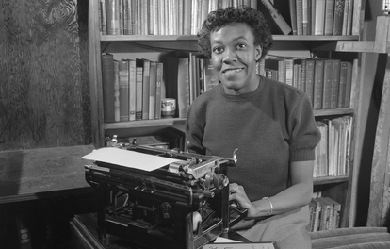

Gwendolyn Elizabeth Brooks (June 7, 1917– December 3, 2000) was an American poet and teacher. She was the first African-American woman to win a Pulitzer prize when she was awarded the Pulitzer Prize for Poetry in 1950 for her second collection, Annie Allen. Throughout her career she received many more honors. She was appointed Poet Laureate of Illinois in 1968, a position held until her death and Poet Laureate Consultant in Poetry to the Library of Congress in 1985.
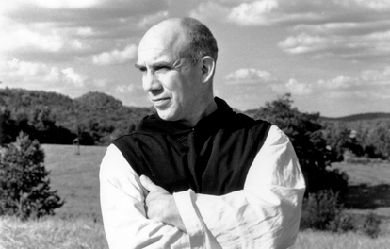
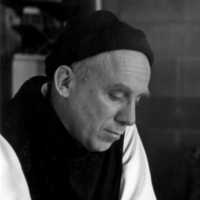
Thomas Merton (January 31, 1915 – December 10, 1968) was an American Trappist monk, writer, theologian, mystic, poet, social activist, and scholar of comparative religion. On May 26, 1949, he was ordained to the priesthood and given the name Father Louis.Merton wrote more than 70 books, mostly on spirituality, social justice and a quiet pacifism, as well as scores of essays and reviews. Among Merton’s most enduring works is his bestselling autobiography The Seven Storey Mountain (1948), which sent scores of World War II veterans, students, and even teenagers flocking to monasteries across the US, and was also featured in National Review’s list of the 100 best non-fiction books of the century. Merton was a keen proponent of interfaith understanding. He pioneered dialogue with prominent Asian spiritual figures, including the Dalai Lama, the Japanese writer D. T. Suzuki, the Thai Buddhist monk Buddhadasa, and the Vietnamese monk Thich Nhat Hanh, and authored books on Zen Buddhism and Taoism. In the years since his death, Merton has been the subject of several biographies.
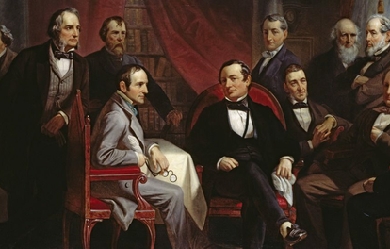
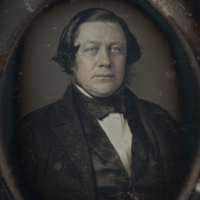
Washington Irving (April 3, 1783– November 28, 1859) was an American short story writer, essayist, biographer, historian, and diplomat of the early 19th century. He is best known for his short stories “Rip Van Winkle” (1819) and “The Legend of Sleepy Hollow” (1820), both of which appear in his book The Sketch Book of Geoffrey Crayon, Gent. His historical works include biographies of George Washington, Oliver Goldsmith, and Muhammad, and several histories of 15th-century Spain dealing with subjects such as Christopher Columbus, the Moors and the Alhambra. Irving served as the U.S. ambassador to Spain from 1842 to 1846. He made his literary debut in 1802 with a series of observational letters to the Morning Chronicle, written under the pseudonym Jonathan Oldstyle. After moving to England for the family business in 1815, he achieved international fame with the publication of The Sketch Book of Geoffrey Crayon, Gent. in 1819–20. He continued to publish regularly—and almost always successfully—throughout his life, and just eight months before his death (at age 76, in Tarrytown, New York), completed a five-volume biography of George Washington. Irving, along with James Fenimore Cooper, was among the first American writers to earn acclaim in Europe, and Irving encouraged American authors such as Nathaniel Hawthorne, Herman Melville, Henry Wadsworth Longfellow, and Edgar Allan Poe. Irving was also admired by some European writers, including Walter Scott, Lord Byron, Thomas Campbell, Francis Jeffrey, and Charles Dickens. As America’s first genuine internationally best-selling author, Irving advocated for writing as a legitimate profession and argued for stronger laws to protect American writers from copyright infringement. Biography Early years Washington Irving’s parents were William Irving, Sr., originally of Quholm, Shapinsay, Orkney, and Sarah (née Sanders), Scottish-English immigrants. They married in 1761 while William was serving as a petty officer in the British Navy. They had eleven children, eight of whom survived to adulthood. Their first two sons, each named William, died in infancy, as did their fourth child, John. Their surviving children were: William, Jr. (1766), Ann (1770), Peter (1771), Catherine (1774), Ebenezer (1776), John Treat (1778), Sarah (1780), and Washington. The Irving family settled in Manhattan, New York City, and was part of the city’s small, vibrant merchant class when Washington Irving was born on April 3, 1783, the same week city residents learned of the British ceasefire that ended the American Revolution; Irving’s mother named him after the hero of the revolution, George Washington. At age six, with the help of a nanny, Irving met his namesake, who was then living in New York after his inauguration as president in 1789. The president blessed young Irving, an encounter Irving later commemorated in a small watercolor painting, which still hangs in his home today. The Irvings lived at 131 William Street at the time of Washington Irving’s birth. The family later moved across the street to 128 William St. Several of Washington Irving’s older brothers became active New York merchants, and they encouraged their younger brother’s literary aspirations, often supporting him financially as he pursued his writing career. An uninterested student, Irving preferred adventure stories and drama and, by age fourteen, was regularly sneaking out of class in the evenings to attend the theater. The 1798 outbreak of yellow fever in Manhattan prompted his family to send him to healthier climes upriver, and Irving was dispatched to stay with his friend James Kirke Paulding in Tarrytown, New York. It was in Tarrytown that Irving became familiar with the nearby town of Sleepy Hollow, with its quaint Dutch customs and local ghost stories. Irving made several other trips up the Hudson as a teenager, including an extended visit to Johnstown, New York, where he passed through the Catskill mountain region, the setting for “Rip Van Winkle”. "[O]f all the scenery of the Hudson", Irving wrote later, “the Kaatskill Mountains had the most witching effect on my boyish imagination”. The 19-year-old Irving began writing letters to the New York Morning Chronicle in 1802, submitting commentaries on the city’s social and theater scene under the name of Jonathan Oldstyle. The name, which purposely evoked the writer’s Federalist leanings, was the first of many pseudonyms Irving would employ throughout his career. The letters brought Irving some early fame and moderate notoriety. Aaron Burr, a co-publisher of the Chronicle, was impressed enough to send clippings of the Oldstyle pieces to his daughter, Theodosia, while writer Charles Brockden Brown made a trip to New York to recruit Oldstyle for a literary magazine he was editing in Philadelphia. Concerned for his health, Irving’s brothers financed an extended tour of Europe from 1804 to 1806. Irving bypassed most of the sites and locations considered essential for the development of an upwardly mobile young man, to the dismay of his brother William. William wrote that, though he was pleased his brother’s health was improving, he did not like the choice to “gallop through Italy... leaving Florence on your left and Venice on your right”. Instead, Irving honed the social and conversational skills that would later make him one of the world’s most in-demand guests. “I endeavor to take things as they come with cheerfulness”, Irving wrote, “and when I cannot get a dinner to suit my taste, I endeavor to get a taste to suit my dinner”. While visiting Rome in 1805, Irving struck up a friendship with the American painter Washington Allston, and nearly allowed himself to be persuaded into following Allston into a career as a painter. “My lot in life, however”, Irving said later, “was differently cast”. First major writings Irving returned from Europe to study law with his legal mentor, Judge Josiah Ogden Hoffman, in New York City. By his own admission, he was not a good student, and barely passed the bar in 1806. Irving began actively socializing with a group of literate young men he dubbed “The Lads of Kilkenny”. Collaborating with his brother William and fellow Lad James Kirke Paulding, Irving created the literary magazine Salmagundi in January 1807. Writing under various pseudonyms, such as William Wizard and Launcelot Langstaff, Irving lampooned New York culture and politics in a manner similar to today’s Mad magazine. Salmagundi was a moderate success, spreading Irving’s name and reputation beyond New York. In its seventeenth issue, dated November 11, 1807, Irving affixed the nickname “Gotham”—an Anglo-Saxon word meaning “Goat’s Town”—to New York City. In late 1809, while mourning the death of his seventeen-year-old fiancée Matilda Hoffman, Irving completed work on his first major book, A History of New-York from the Beginning of the World to the End of the Dutch Dynasty, by Diedrich Knickerbocker (1809), a satire on self-important local history and contemporary politics. Prior to its publication, Irving started a hoax akin to today’s viral marketing campaigns; he placed a series of missing person advertisements in New York newspapers seeking information on Diedrich Knickerbocker, a crusty Dutch historian who had allegedly gone missing from his hotel in New York City. As part of the ruse, Irving placed a notice—allegedly from the hotel’s proprietor—informing readers that if Mr. Knickerbocker failed to return to the hotel to pay his bill, he would publish a manuscript Knickerbocker had left behind. Unsuspecting readers followed the story of Knickerbocker and his manuscript with interest, and some New York city officials were concerned enough about the missing historian that they considered offering a reward for his safe return. Riding the wave of public interest he had created with his hoax, Irving—adopting the pseudonym of his Dutch historian—published A History of New York on December 6, 1809, to immediate critical and popular success. “It took with the public”, Irving remarked, “and gave me celebrity, as an original work was something remarkable and uncommon in America”. Today, the surname of Diedrich Knickerbocker, the fictional narrator of this and other Irving works, has become a nickname for Manhattan residents in general. After the success of A History of New York, Irving searched for a job and eventually became an editor of Analectic Magazine, where he wrote biographies of naval heroes like James Lawrence and Oliver Perry. He was also among the first magazine editors to reprint Francis Scott Key’s poem “Defense of Fort McHenry”, which would later be immortalized as “The Star-Spangled Banner”, the national anthem of the United States. Like many merchants and New Yorkers, Irving originally opposed the War of 1812, but the British attack on Washington, D.C. in 1814 convinced him to enlist. He served on the staff of Daniel Tompkins, governor of New York and commander of the New York State Militia. Apart from a reconnaissance mission in the Great Lakes region, he saw no real action. The war was disastrous for many American merchants, including Irving’s family, and in mid-1815, he left for England to attempt to salvage the family trading company. He remained in Europe for the next seventeen years. Irving was elected a member of the American Antiquarian Society in 1815. Life in Europe The Sketch Book Irving spent the next two years trying to bail out the family firm financially but eventually had to declare bankruptcy. With no job prospects, Irving continued writing throughout 1817 and 1818. In the summer of 1817, he visited Walter Scott, beginning a lifelong personal and professional friendship. Irving continued writing: he composed the short story “Rip Van Winkle” overnight while staying with his sister Sarah and her husband, Henry van Wart in Birmingham, England, a place that also inspired other works. In October 1818, Irving’s brother William secured for Irving a post as chief clerk to the United States Navy, and urged him to return home. Irving turned the offer down, opting to stay in England to pursue a writing career. In the spring of 1819, Irving sent to his brother Ebenezer in New York a set of short prose pieces that he asked be published as The Sketch Book of Geoffrey Crayon, Gent. The first installment, containing “Rip Van Winkle”, was an enormous success, and the rest of the work would be equally successful; it was issued in 1819–1820 in seven installments in New York, and in two volumes in London ("The Legend of Sleepy Hollow" would appear in the sixth issue of the New York edition, and the second volume of the London edition). Like many successful authors of this era, Irving struggled against literary bootleggers. In England, some of his sketches were reprinted in periodicals without his permission, a legal practice as there was no international copyright law at the time. To prevent further piracy in Britain, Irving paid to have the first four American installments published as a single volume by John Miller in London. Irving appealed to Walter Scott for help procuring a more reputable publisher for the remainder of the book. Scott referred Irving to his own publisher, London powerhouse John Murray, who agreed to take on The Sketch Book. From then on, Irving would publish concurrently in the United States and Britain to protect his copyright, with Murray being his English publisher of choice. Irving’s reputation soared, and for the next two years, he led an active social life in Paris and Britain, where he was often feted as an anomaly of literature: an upstart American who dared to write English well. Bracebridge Hall and Tales of a Traveller With both Irving and publisher John Murray eager to follow up on the success of The Sketch Book, Irving spent much of 1821 travelling in Europe in search of new material, reading widely in Dutch and German folk tales. Hampered by writer’s block—and depressed by the death of his brother William—Irving worked slowly, finally delivering a completed manuscript to Murray in March 1822. The book, Bracebridge Hall, or The Humorists, A Medley (the location was based loosely on Aston Hall, occupied by members of the Bracebridge family, near his sister’s home in Birmingham) was published in June 1822. The format of Bracebridge was similar to that of The Sketch Book, with Irving, as Crayon, narrating a series of more than fifty loosely connected short stories and essays. While some reviewers thought Bracebridge to be a lesser imitation of The Sketch Book, the book was well received by readers and critics. “We have received so much pleasure from this book”, wrote critic Francis Jeffrey in the Edinburgh Review, “that we think ourselves bound in gratitude... to make a public acknowledgement of it.” Irving was relieved at its reception, which did much to cement his reputation with European readers. Still struggling with writer’s block, Irving traveled to Germany, settling in Dresden in the winter of 1822. Here he dazzled the royal family and attached himself to Mrs. Amelia Foster, an American living in Dresden with her five children. Irving was particularly attracted to Mrs. Foster’s 18-year-old daughter Emily and vied in frustration for her hand. Emily finally refused his offer of marriage in the spring of 1823. He returned to Paris and began collaborating with playwright John Howard Payne on translations of French plays for the English stage, with little success. He also learned through Payne that the novelist Mary Wollstonecraft Shelley was romantically interested in him, though Irving never pursued the relationship. In August 1824, Irving published the collection of essays Tales of a Traveller—including the short story “The Devil and Tom Walker”—under his Geoffrey Crayon persona. “I think there are in it some of the best things I have ever written”, Irving told his sister. But while the book sold respectably, Traveller was dismissed by critics, who panned both Traveller and its author. “The public have been led to expect better things”, wrote the United States Literary Gazette, while the New-York Mirror pronounced Irving “overrated”. Hurt and depressed by the book’s reception, Irving retreated to Paris where he spent the next year worrying about finances and scribbling down ideas for projects that never materialized. Spanish books While in Paris, Irving received a letter from Alexander Hill Everett on January 30, 1826. Everett, recently the American Minister to Spain, urged Irving to join him in Madrid, noting that a number of manuscripts dealing with the Spanish conquest of the Americas had recently been made public. Irving left for Madrid and enthusiastically began scouring the Spanish archives for colorful material. With full access to the American consul’s massive library of Spanish history, Irving began working on several books at once. The first offspring of this hard work, A History of the Life and Voyages of Christopher Columbus, was published in January 1828. The book was popular in the United States and in Europe and would have 175 editions published before the end of the century. It was also the first project of Irving’s to be published with his own name, instead of a pseudonym, on the title page. Irving was invited to stay at the palace of the Duke of Gor, who gave him unfettered access to his library containing many medieval manuscripts. Chronicle of the Conquest of Granada was published a year later, followed by Voyages and Discoveries of the Companions of Columbus in 1831. Irving’s writings on Columbus are a mixture of history and fiction, a genre now called romantic history. Irving based them on extensive research in the Spanish archives, but also added imaginative elements aimed at sharpening the story. The first of these works is the source of the durable myth that medieval Europeans believed the Earth was flat. (See Myth of the flat earth.) According to the popular book, Columbus proved the Earth was round. In 1829, Irving moved into Granada’s ancient palace Alhambra, “determined to linger here”, he said, “until I get some writings under way connected with the place”. Before he could get any significant writing underway, however, he was notified of his appointment as Secretary to the American Legation in London. Worried he would disappoint friends and family if he refused the position, Irving left Spain for England in July 1829. Secretary to the American legation in London Arriving in London, Irving joined the staff of American Minister Louis McLane. McLane immediately assigned the daily secretary work to another man and tapped Irving to fill the role of aide-de-camp. The two worked over the next year to negotiate a trade agreement between the United States and the British West Indies, finally reaching a deal in August 1830. That same year, Irving was awarded a medal by the Royal Society of Literature, followed by an honorary doctorate of civil law from Oxford in 1831. Following McLane’s recall to the United States in 1831 to serve as Secretary of Treasury, Irving stayed on as the legation’s chargé d’affaires until the arrival of Martin Van Buren, President Andrew Jackson’s nominee for British Minister. With Van Buren in place, Irving resigned his post to concentrate on writing, eventually completing Tales of the Alhambra, which would be published concurrently in the United States and England in 1832. Irving was still in London when Van Buren received word that the United States Senate had refused to confirm him as the new Minister. Consoling Van Buren, Irving predicted that the Senate’s partisan move would backfire. “I should not be surprised”, Irving said, “if this vote of the Senate goes far toward elevating him to the presidential chair”. Return to America Washington Irving arrived in New York, after seventeen years abroad, on May 21, 1832. That September, he accompanied the U.S. Commissioner on Indian Affairs, Henry Leavitt Ellsworth, along with companions Charles La Trobe and Count Albert-Alexandre de Pourtales, on a surveying mission deep in Indian Territory, now known as Oklahoma. At the completion of his western tour, Irving traveled through Washington, D.C. and Baltimore, where he became acquainted with the politician and novelist John Pendleton Kennedy. Frustrated by bad investments, Irving turned to writing to generate additional income, beginning with A Tour on the Prairies, a work which related his recent travels on the frontier. The book was another popular success and also the first book written and published by Irving in the United States since A History of New York in 1809. In 1834, he was approached by fur magnate John Jacob Astor, who convinced Irving to write a history of his fur trading colony in the American Northwest, now known as Astoria, Oregon. Irving made quick work of Astor’s project, shipping the fawning biographical account titled Astoria in February 1836. In 1835, Irving, Astor, and a few others founded the Saint Nicholas Society in the City of New York. During an extended stay at Astor’s, Irving met the explorer Benjamin Bonneville, who intrigued Irving with his maps and stories of the territories beyond the Rocky Mountains. When the two met in Washington, D.C. several months later, Bonneville opted to sell his maps and rough notes to Irving for $1,000. Irving used these materials as the basis for his 1837 book The Adventures of Captain Bonneville. These three works made up Irving’s “western” series of books and were written partly as a response to criticism that his time in England and Spain had made him more European than American. In the minds of some critics, especially James Fenimore Cooper and Philip Freneau, Irving had turned his back on his American heritage in favor of English aristocracy. Irving’s western books, particularly A Tour on the Prairies, were well received in the United States, though British critics accused Irving of “book-making”. In 1835, Irving purchased a “neglected cottage” and its surrounding riverfront property in Tarrytown, New York. The house, which he named Sunnyside in 1841, required constant repair and renovation over the next twenty years. With costs of Sunnyside escalating, Irving reluctantly agreed in 1839 to become a regular contributor to The Knickerbocker magazine, writing new essays and short stories under the Knickerbocker and Crayon pseudonyms. He was regularly approached by aspiring young authors for advice or endorsement, including Edgar Allan Poe, who sought Irving’s comments on “William Wilson” and “The Fall of the House of Usher”. Irving also championed America’s maturing literature, advocating stronger copyright laws to protect writers from the kind of piracy that had initially plagued The Sketch Book. Writing in the January 1840 issue of Knickerbocker, he openly endorsed copyright legislation pending in the U.S. Congress. “We have a young literature”, he wrote, “springing up and daily unfolding itself with wonderful energy and luxuriance, which... deserves all its fostering care”. The legislation did not pass. In 1841, he was elected in the National Academy of Design as an Honorary Academician. Irving at this time also began a friendly correspondence with the English writer Charles Dickens and hosted the author and his wife at Sunnyside during Dickens’s American tour in 1842. Minister to Spain In 1842, after an endorsement from Secretary of State Daniel Webster, President John Tyler appointed Irving as Minister to Spain. Irving was surprised and honored, writing, “It will be a severe trial to absent myself for a time from my dear little Sunnyside, but I shall return to it better enabled to carry it on comfortably”. While Irving hoped his position as Minister would allow him plenty of time to write, Spain was in a state of perpetual political upheaval during most of his tenure, with a number of warring factions vying for control of the twelve-year-old Queen Isabella II. Irving maintained good relations with the various generals and politicians, as control of Spain rotated through Espartero, Bravo, then Narvaez. However, the politics and warfare were exhausting, and Irving—homesick and suffering from a crippling skin condition—grew quickly disheartened: I am wearied and at times heartsick of the wretched politics of this country. . . . The last ten or twelve years of my life, passed among sordid speculators in the United States, and political adventurers in Spain, has shewn me so much of the dark side of human nature, that I begin to have painful doubts of my fellow man; and look back with regret to the confiding period of my literary career, when, poor as a rat, but rich in dreams, I beheld the world through the medium of my imagination and was apt to believe men as good as I wished them to be. With the political situation in Spain relatively settled, Irving continued to closely monitor the development of the new government and the fate of Isabella. His official duties as Spanish Minister also involved negotiating American trade interests with Cuba and following the Spanish parliament’s debates over slave trade. He was also pressed into service by the American Minister to the Court of St. James’s in London, Louis McLane, to assist in negotiating the Anglo-American disagreement over the Oregon border that newly elected president James K. Polk had vowed to resolve. Final years and death Returning from Spain in 1846, Irving took up permanent residence at Sunnyside and began work on an “Author’s Revised Edition” of his works for publisher George Palmer Putnam. For its publication, Irving had made a deal that guaranteed him 12 percent of the retail price of all copies sold. Such an agreement was unprecedented at that time. On the death of John Jacob Astor in 1848, Irving was hired as an executor of Astor’s estate and appointed, by Astor’s will, as first chairman of the Astor library, a forerunner to the New York Public Library. As he revised his older works for Putnam, Irving continued to write regularly, publishing biographies of the writer and poet Oliver Goldsmith in 1849 and the 1850 work about the Islamic prophet Muhammad. In 1855, he produced Wolfert’s Roost, a collection of stories and essays he had originally written for The Knickerbocker and other publications, and began publishing at intervals a biography of his namesake, George Washington, a work which he expected to be his masterpiece. Five volumes of the biography were published between 1855 and 1859. Irving traveled regularly to Mount Vernon and Washington, D.C. for his research, and struck up friendships with Presidents Millard Fillmore and Franklin Pierce. He was elected an Associate Fellow of the American Academy of Arts and Sciences in 1855. He continued to socialize and keep up with his correspondence well into his seventies, and his fame and popularity continued to soar. “I don’t believe that any man, in any country, has ever had a more affectionate admiration for him than that given to you in America”, wrote Senator William C. Preston in a letter to Irving. “I believe that we have had but one man who is so much in the popular heart”. By 1859, author Oliver Wendell Holmes Sr. noted that Sunnyside had become “next to Mount Vernon, the best known and most cherished of all the dwellings in our land”. On the night of November 28, 1859, at 9:00 pm, only eight months after completing the final volume of his Washington biography, Washington Irving died of a heart attack in his bedroom at Sunnyside at the age of 76. Legend has it that his last words were: “Well, I must arrange my pillows for another night. When will this end?” He was buried under a simple headstone at Sleepy Hollow cemetery on December 1, 1859. Irving and his grave were commemorated by Henry Wadsworth Longfellow in his 1876 poem, “In The Churchyard at Tarrytown”, which concludes with: How sweet a life was his; how sweet a death! Living, to wing with mirth the weary hours, Or with romantic tales the heart to cheer; Dying, to leave a memory like the breath Of summers full of sunshine and of showers, A grief and gladness in the atmosphere. Legacy Literary reputation Irving is largely credited as the first American Man of Letters, and the first to earn his living solely by his pen. Eulogizing Irving before the Massachusetts Historical Society in December 1859, his friend, the poet Henry Wadsworth Longfellow, acknowledged Irving’s role in promoting American literature: “We feel a just pride in his renown as an author, not forgetting that, to his other claims upon our gratitude, he adds also that of having been the first to win for our country an honourable name and position in the History of Letters”. Irving perfected the American short story, and was the first American writer to place his stories firmly in the United States, even as he poached from German or Dutch folklore. He is also generally credited as one of the first to write both in the vernacular, and without an obligation to the moral or didactic in his short stories, writing stories simply to entertain rather than to enlighten. Irving also encouraged would-be writers. As George William Curtis noted, there “is not a young literary aspirant in the country, who, if he ever personally met Irving, did not hear from him the kindest words of sympathy, regard, and encouragement”. Some critics, however—including Edgar Allan Poe—felt that while Irving should be given credit for being an innovator, the writing itself was often unsophisticated. “Irving is much over-rated”, Poe wrote in 1838, “and a nice distinction might be drawn between his just and his surreptitious and adventitious reputation—between what is due to the pioneer solely, and what to the writer”. A critic for the New-York Mirror wrote: “No man in the Republic of Letters has been more overrated than Mr. Washington Irving”. Some critics noted especially that Irving, despite being an American, catered to British sensibilities and, as one critic noted, wrote “of and for England, rather than his own country”. Other critics were inclined to be more forgiving of Irving’s style. William Makepeace Thackeray was the first to refer to Irving as the “ambassador whom the New World of Letters sent to the Old”, a banner picked up by writers and critics throughout the 19th and 20th centuries. “He is the first of the American humorists, as he is almost the first of the American writers”, wrote critic H.R. Hawless in 1881, “yet belonging to the New World, there is a quaint Old World flavor about him”. Early critics often had difficulty separating Irving the man from Irving the writer—"The life of Washington Irving was one of the brightest ever led by an author", wrote Richard Henry Stoddard, an early Irving biographer—but as years passed and Irving’s celebrity personality faded into the background, critics often began to review his writings as all style, no substance. “The man had no message”, said critic Barrett Wendell. Yet, critics conceded that despite Irving’s lack of sophisticated themes—Irving biographer Stanley T. Williams could be scathing in his assessment of Irving’s work—most agreed he wrote elegantly. Impact on American culture Irving popularized the nickname “Gotham” for New York City, later used in Batman comics and movies as the name of Gotham City, and is credited with inventing the expression “the almighty dollar”. The surname of his Dutch historian, Diedrich Knickerbocker, is generally associated with New York and New Yorkers, and can still be seen across the jerseys of New York’s professional basketball team, albeit in its more familiar, abbreviated form, reading simply Knicks. In Bushwick, Brooklyn, a neighborhood of New York City, there are two parallel streets named Irving Avenue and Knickerbocker Avenue; the latter forms the core of the neighborhood’s shopping district. One of Irving’s most lasting contributions to American culture is in the way Americans perceive and celebrate Christmas. In his 1812 revisions to A History of New York, Irving inserted a dream sequence featuring St. Nicholas soaring over treetops in a flying wagon—a creation others would later dress up as Santa Claus. In his five Christmas stories in The Sketch Book, Irving portrayed an idealized celebration of old-fashioned Christmas customs at a quaint English manor, that depicted harmonious warm-hearted English Christmas festivities he experienced while staying in Aston Hall, Birmingham, England, that had largely been abandoned. He used text from The Vindication of Christmas (London 1652) of old English Christmas traditions, he had transcribed into his journal as a format for his stories. The book contributed to the revival and reinterpretation of the Christmas holiday in the United States. In his biography of Christopher Columbus, Irving introduced the erroneous idea that Europeans believed the world to be flat prior to the discovery of the New World. Borrowed from Irving, the flat-Earth myth has been taught in schools as fact to many generations of Americans. The American painter John Quidor based many of his paintings on scenes from the works of Irving about Dutch New York, including such paintings as Ichabod Crane Flying from the Headless Horseman (1828), The Return of Rip Van Winkle (1849), and The Headless Horseman Pursuing Ichabod Crane (1858). Works * Letters of Jonathan Oldstyle 1802 * Salmagundi 1807–1808 * A History of New York 1809 * The Sketch Book of Geoffrey Crayon, Gent. 1819–1820 * Bracebridge Hall 1822 * Tales of a Traveller 1824 * A History of the Life and Voyages of Christopher Columbus 1828 * Chronicle of the Conquest of Granada 1829 * Voyages and Discoveries of the Companions of Columbus 1831 * Tales of the Alhambra 1832 * The Crayon Miscellany 1835 * Astoria 1836 * The Adventures of Captain Bonneville 1837 * The Life of Oliver Goldsmith 1840 * Biography and Poetical Remains of the Late Margaret Miller Davidson 1841 * Mahomet and His Successors 1849 * Wolfert's Roost 1855 * The Life of George Washington 1855–1859 References Wikipedia—https://en.wikipedia.org/wiki/Washington_Irving
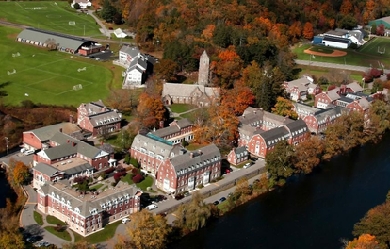

Robert Silliman Hillyer (June 3, 1895– December 24, 1961) was an American poet. Life Hillyer was born in East Orange, New Jersey. He attended Kent School in Kent, Connecticut, and graduated from Harvard in 1917, after which he went to France and volunteered with the S.S.U. 60 of the Norton-Harjes Ambulance Corps serving the Allied Forces in World War I. He had long links to Harvard University, including holding a position as a Professor of English. From 1948 to 1951 Hillyer was a visiting professor at Kenyon College and from there went to serve on the faculty at the University of Delaware. While teaching at Trinity College in Hartford, Connecticut in the late 1920s, Hillyer was made a member of the Epsilon chapter of the prestigious St. Anthony Hall Delta Psi literary fraternity in 1927. His work is in meter and often rhyme. He is known for his sonnets and for such poems as “Theme and Variations” (on his war experiences) and the light “Letter to Robert Frost”. American composer Ned Rorem’s most famous art song is a setting of Hillyer’s “Early in the Morning”. Hillyer is remembered as a kind of villain by Ezra Pound scholars, who associate him with his 1949 attacks on The Pisan Cantos in the Saturday Review of Literature which sparked the Bollingen Controversy. Hillyer was identified with the Harvard Aesthetes grouping. He was 66 when he died in Wilmington, Delaware. Awards * Pulitzer Prize for Poetry for “Collected Verse” in 1934. Works Poetry * The Collected Poems. Knopf. 1961. * The relic & other poems. Knopf. 1957. * The suburb by the sea: new poems. Knopf. 1952. * The death of Captain Nemo: a narrative poem. A.A. Knopf. 1949. * Poems for music, 1917–1947. A. A. Knopf. 1947. * The Collected Verse of Robert Hillyer. A.A. Knopf. 1933. * The Coming Forth by Day: An Anthology of Poems from the Egyptian Book of the Dead. B.J. Brimmer Company. 1923. * Hillyer, Robert (1920). Alchemy: A Symphonic Poem. Illustrator Beatrice Stevens. Kessinger Publishing, LLC. * Hillyer, Robert (1920). The Five Books of Youth. Brentano’s. * Hillyer, Robert (1917). Sonnets and Other Lyrics. Harvard University Press. * Hillyer, Robert (1917). The Wise Old Apple Tree in the Spring. Harvard University Press. Novels * Riverhead (1932) Criticism * In Pursuit of Poetry. McGraw-Hill. 1960. * First Principles of Verse. The Writer. 1950. Translations * Oluf Friis (1922). A Book of Danish Verse: Translated in the Original Meters. Translators Samuel Foster Damon, Robert Hillyer. The American-Scandinavian Foundation. Editors * Kahlil Gibran (1959). Hayim Musa Nahmad, Robert Hillyer, ed. A Tear and a Smile. A. A. Knopf. * Samuel Foster Damon, Robert Hillyer, ed. (1923). Eight More Harvard Poets. Brentano’s. References Wikipedia—https://en.wikipedia.org/wiki/Robert_Hillyer
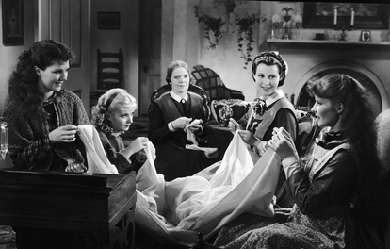
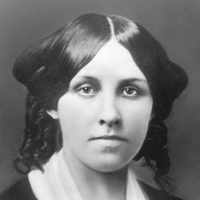
Louisa May Alcott (November 29, 1832 – March 6, 1888) was an American novelist and poet best known as the author of the novel Little Women (1868) and its sequels Little Men (1871) and Jo’s Boys (1886). Raised by her transcendentalist parents, Abigail May and Amos Bronson Alcott in New England, she grew up among many of the well-known intellectuals of the day such as Ralph Waldo Emerson, Nathaniel Hawthorne, and Henry David Thoreau.

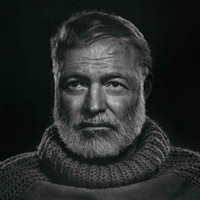
Ernest Hemingway (1899-1961) was one of the most significant American authors of the Twentieth century . His novels and short fictions have left an indelible mark on the literary production of the United States and the world. Although most often remembered for his economical and understated fiction, he was also a noted journalist. In 1954, Ernest Hemingway was awarded the Novel Prize in Literature. Hemingway is also known for his heroic, adventurous and often stereotypically “manly” public persona. The myth he cultivated of himself as a man of action aided the important Modernist reading of many of his works.
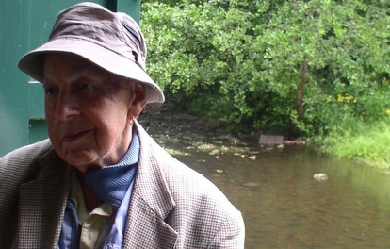
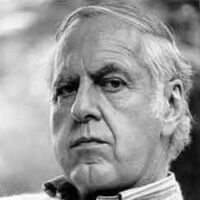
William Meredith was born in New York City on January 9, 1919. He attended the Lenox School in Massachusetts and in 1940 graduated from Princeton University with an A.B. in English, Magna Cum Laude. His senior thesis was on the work of Robert Frost, a major influence for Meredith throughout his career. He worked briefly as a reporter for The New York Times before joining the U.S. Army Air Force in 1941. In 1942 he served as a carrier pilot for the U.S. Navy, achieving the rank of lieutenant. During his service, Meredith's first book of poems, Love Letter from an Impossible Land (1944), was chosen by Archibald MacLeish for the Yale Series of Younger Poets. For the next few years he taught English at Princeton University as Woodrow Wilson Fellow in Writing and Resident Fellow in Creative Writing while still in the U.S. Navy Reserves. Won the Pulitzer Prize for poetry.
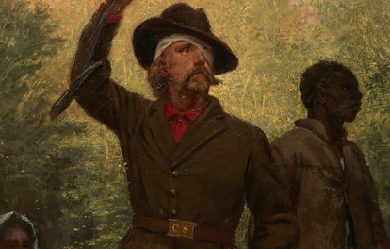
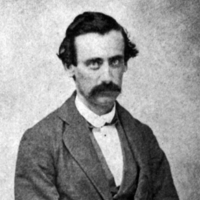
Henry Timrod (December 8, 1829– October 7, 1867) was an American poet, often called the poet laureate of the Confederacy. Early life Timrod was born on December 8, 1829, in Charleston, South Carolina, to a family of German descent. His grandfather Heinrich Dimroth emigrated to the United States in 1765 and anglicized his name. His father, William Henry Timrod, was an officer in the Seminole Wars and a poet himself. In fact, he composed the following poem on the subject of his eldest son, Henry: Harry, my little blue-eyed boy, I love to have thee playing near; There’s music in thy shouts of joy, To a fond father’s ear. I love to see the lines of mirth Mantle thy cheeks and forehead fair, As if all the pleasures of the earth Had met to revel there. For gazing on thee do I sigh That those most happy years must flee; And thy full share of misery Must fall in life on thee. The elder Timrod died from tuberculosis on July 28, 1838, in Charleston, at the age of 44, leaving behind his wife of 25 years, Thyrza Prince Timrod, and their four children, the eldest of which was Adaline Rebecca, 14 years; Henry was nine. A few years later, their home burned down, leaving the family impoverished. He studied at the University of Georgia beginning in 1847 with the help of a financial benefactor. He was soon forced by illness to end his formal studies, however, and returned to Charleston. He took a position with a lawyer and planned to begin a law practice. From 1848 to 1853, he submitted a number of poems to the Southern Literary Messenger under the pen name Aglaus, where he attracted some attention for his abilities. He left his legal studies by December 1850, calling it “distasteful”, and focused more on writing and tutoring. He was a member of Charleston’s literati, and with John Dickson Bruns and Basil Lanneau Gildersleeve, could often be found in the company of their leader, William Gilmore Simms, whom they referred to as “Father Abbot,” from one of his novels. Career In 1856, he accepted a post as a teacher at the plantation of Colonel William Henry Cannon in the area that would later become Florence, South Carolina. Cannon had a single-room school building built in 1858 to provide for the education of the plantation children. The building measures “only about twelve by fifteen feet in size.” Among his students was the young lady who would later become his bride and the object of a number of his poems– the “fair Saxon” Kate Goodwin. These lines from “Katie”, the opening poem of The Poems of Henry Timrod (1873), are an example: The blackbird from a neighboring thorn With music brims the cup of morn, And in a thick, melodious rain The mavis pours her mellow strain! But only when my Katie’s voice Makes all the listening woods rejoice I hear—with cheeks that flush and pale— The passion of the nightingale! While teaching and tutoring, he continued also to publish his poems in literary magazines. In 1860, he published a small book, which, although a commercial failure, increased his fame. The best-known poem from the book was “A Vision of Poesy”. Civil War period With the outbreak of American Civil War, in a state of fervent patriotism, Timrod returned to Charleston to begin publishing his war poems, which drew many young men to enlist in the service of the Confederacy. His first poem of this period is “Ethnogenesis”, written in February, 1861, during the meeting of the first Confederate Congress at Montgomery, Alabama. Part of the poem was read aloud at this meeting: Hath not the morning dawned with added light? And shall not evening call another star Out of the infinite regions of the night To mark this day in Heaven? At last we are A nation among nations. And the world Shall soon behold in many a distant port Another flag unfurled! “A Cry to Arms”, “Carolina” and “The Cotton Boll” are other famous examples of his martial poetry. He was a frequent contributor of poems to Russell’s Magazine and to The Southern Literary Messenger. On March 1, 1862, Timrod enlisted into the military as a private in Company B, 30th South Carolina Regiment, and was detailed for special duty as a clerk at regimental headquarters, but his tuberculosis prevented much service, and he was sent home. After the bloody Battle of Shiloh, he tried again to live the camp life as a western war correspondent for the Charleston Mercury, but this too was short lived as he was not strong enough for the rugged task. He returned from the front and settled in Columbia, South Carolina, to become associate editor of the South Carolinian, a daily newspaper. Throughout 1864 he wrote many articles for the paper. In February 1864 he married his beloved Katie, and they soon had a son, Willie, born on Christmas Eve. This happy period in his life was short-lived. General Sherman’s troops invaded Columbia on February 17, 1865, one year and one day after his marriage. Due to the vigor of his editorials, he was forced into hiding, his home was burned, and the newspaper office was destroyed. Death The aftermath of war brought his family poverty and to him and his wife, increasing illness. He moved his family into his sister and mother’s home in Columbia. Then, his son Willie died on October 23, 1865. He expressed his sorrow in the poem “Our Willie”: ’Twas a merry Christmas when he came, Our little boy beneath the sod; And brighter burned the Christmas flame, And merrier sped the game Because within the house there lay A shape as tiny as a fay— The Christmas gift of God! He took a post as correspondent for a new newspaper based in Charleston, The Carolinian, but continued to reside in Columbia. Even after several months of work, however, he was never paid, and the paper folded. In economic desperation, he submitted poems written in his strongest style to northern periodicals, but all were coldly declined. Henry continued to seek work, but continued to be disappointed. Finally, in November, 1866, he was given an assistant clerkship under Governor James L. Orr’s staff member James S. Simons. This lasted less than a month, after which he was again dependent on charity and odd jobs to feed his family of women. Despite the harshly reduced circumstances, and mounting health problems, he was still able to produce highly regarded poetry. His “Memorial Ode”, composed in the Spring of 1867 “was sung at Magnolia Cemetery, Charleston, in May when the graves of the southern dead were decorated.” Sleep sweetly in your humble graves, Sleep, martyrs of a fallen cause; Though yet no marble column craves The pilgrim here to pause. In seeds of laurel in the earth The blossom of your flame is blown, And somewhere, waiting for its birth, The shaft is in the stone! Meanwhile, behalf the tardy years Which keep in trust your storied tombs, Behold! Your sisters bring their tears, And these memorial blooms. He finally succumbed to consumption Sunday morning, October 7, 1867, and was laid to rest in the churchyard at Trinity Episcopal Church in Columbia next to his son. Criticism and legacy Timrod’s friend and fellow poet, Paul Hamilton Hayne, posthumously edited and published The Poems of Henry Timrod, with more of Timrod’s more famous poems in 1873, including his "Ode: Sung on the Occasion of Decorating the Graves of the Confederate Dead at Magnolia Cemetery, Charleston, S.C., 1867" and “The Cotton Boll”. Later critics of Timrod’s writings, including Edd Winfield Parks and Guy A. Cardwell, Jr. of the University of Georgia, Jay B. Hubbell of Vanderbilt University and Christina Murphy, who completed a Ph.D. dissertation on Timrod at the University of Connecticut, have asserted that Timrod was one of the most important regional poets of nineteenth-century America and one of the most important Southern poets. In terms of achievement, Timrod is often compared to Sidney Lanier and John Greenleaf Whittier as poets who achieved significant stature by combining lyricism with a poetic capacity for nationalism. All three poets also explored the heroic ode as a poetic form. Today, Timrod’s poetry is included in most of the historical anthologies of American poetry, and he is regarded as a significant-though secondary-figure in 19th-century American literature. In 1901, a monument with a bronze bust of Timrod was dedicated in Charleston. The state’s General Assembly passed a resolution in 1911 instituting the verses of his poem “Carolina” as the lyrics of the official state anthem. In September 2006, an article for The New York Times noted similarities between Bob Dylan’s lyrics in the album, Modern Times and the poetry of Timrod. A wider debate developed in The Times as to the nature of “borrowing” within the folk tradition and in literature. References Wikipedia—https://en.wikipedia.org/wiki/Henry_Timrod


